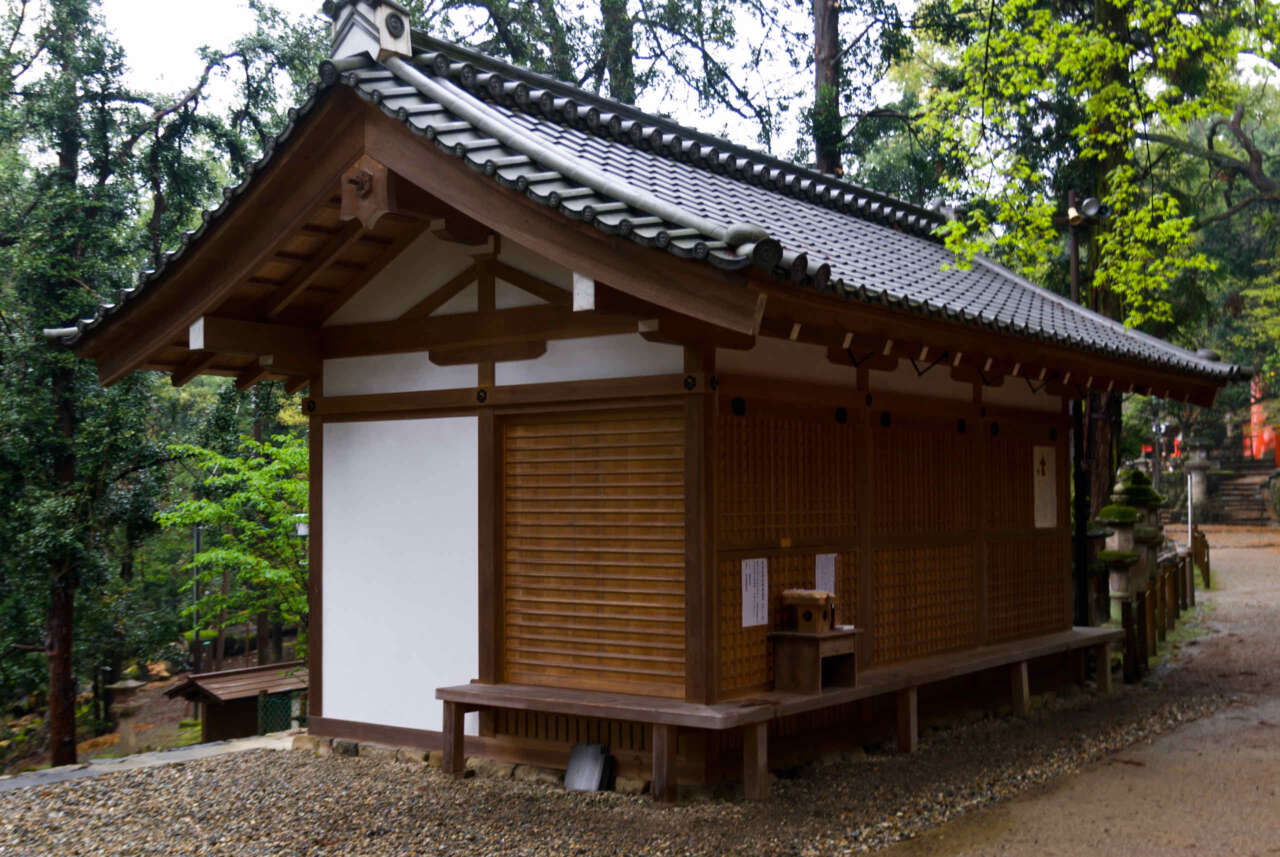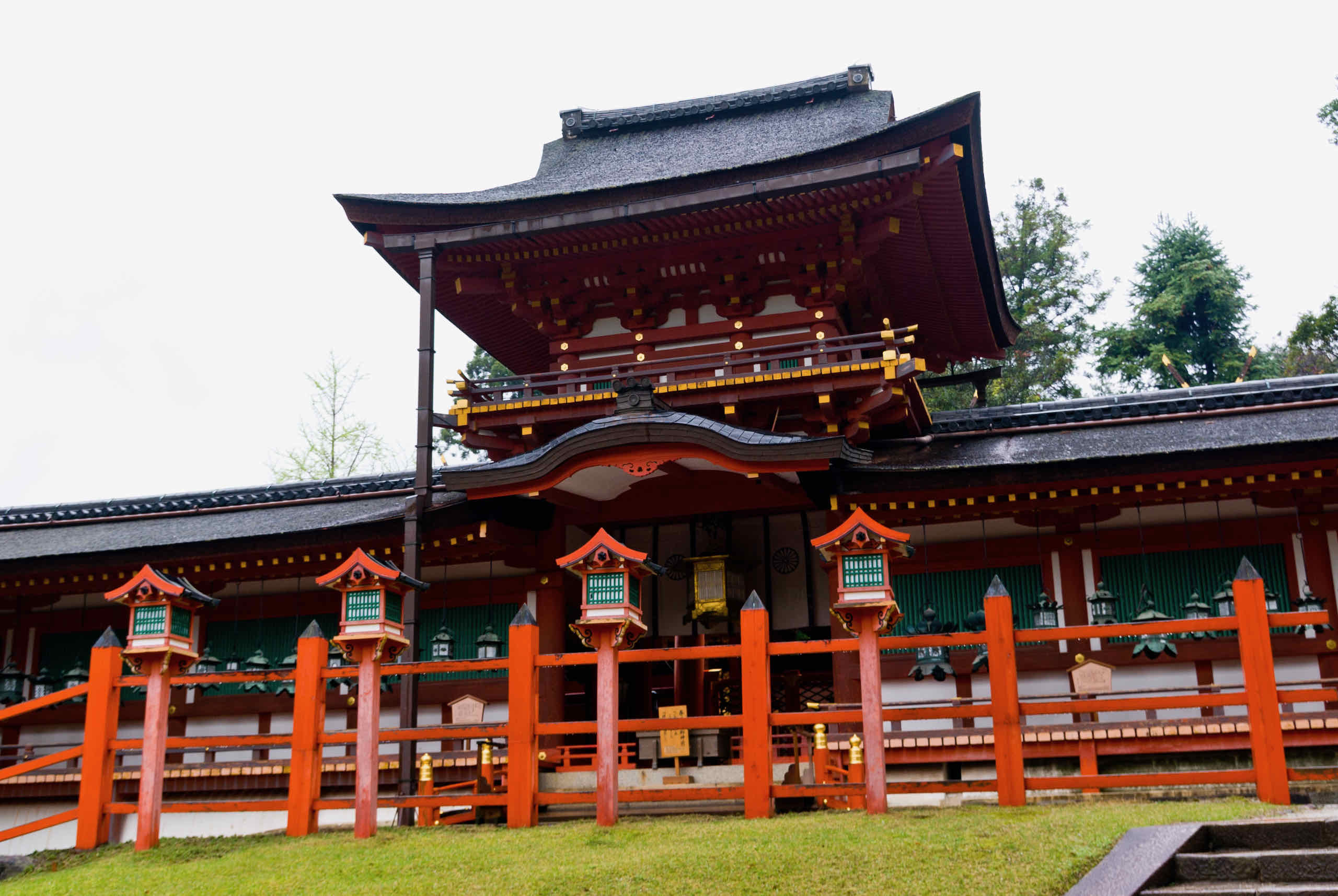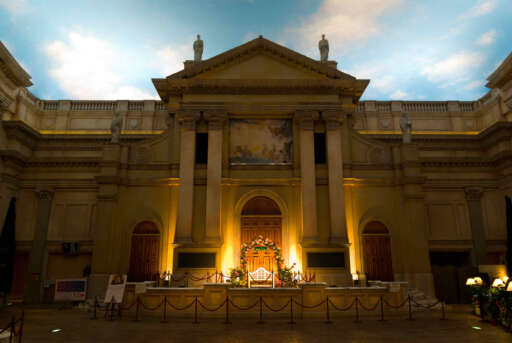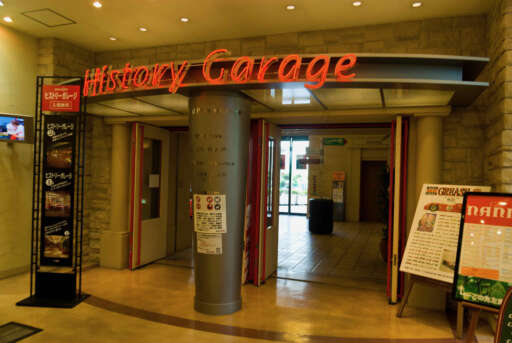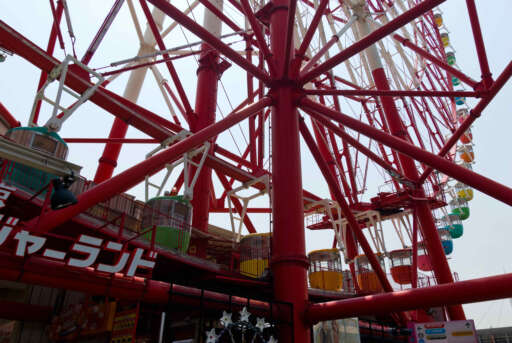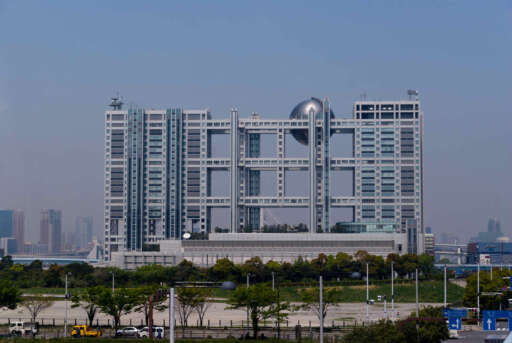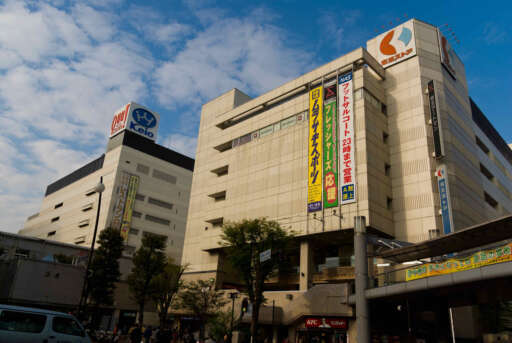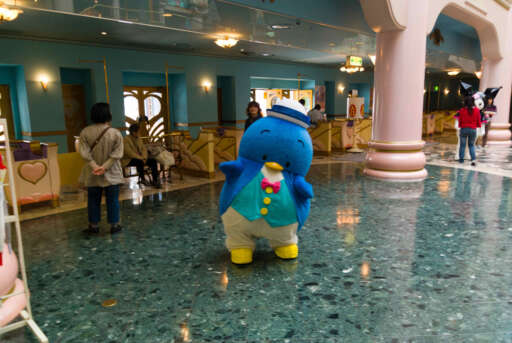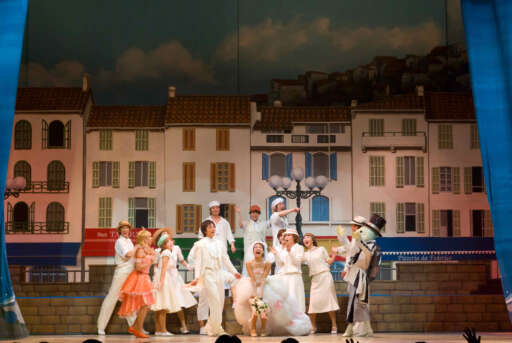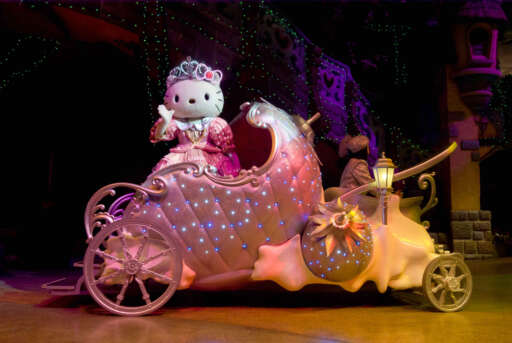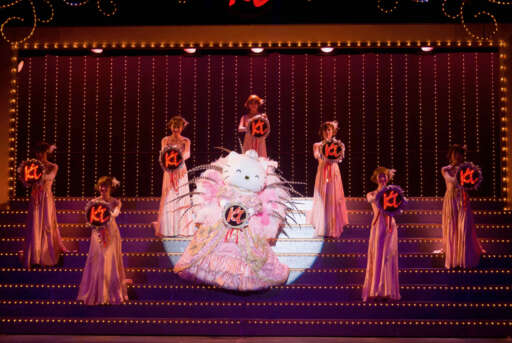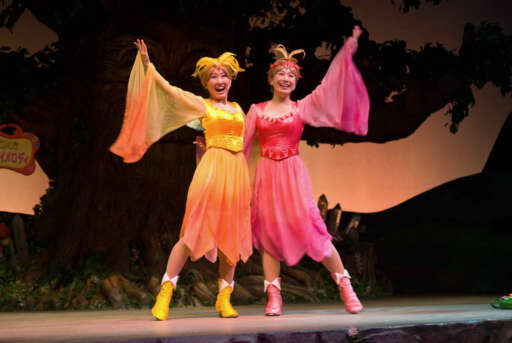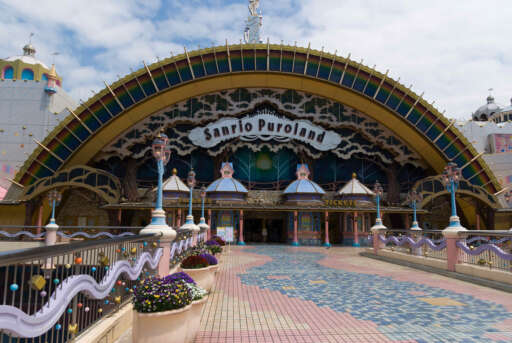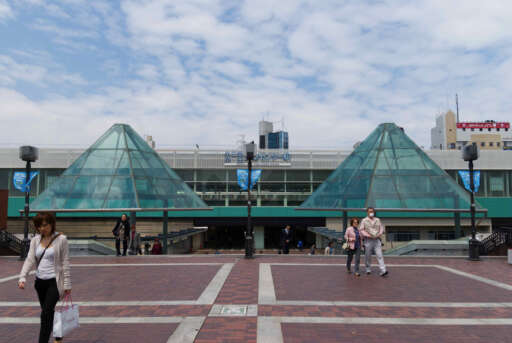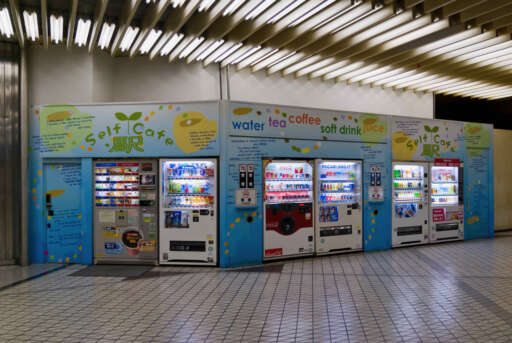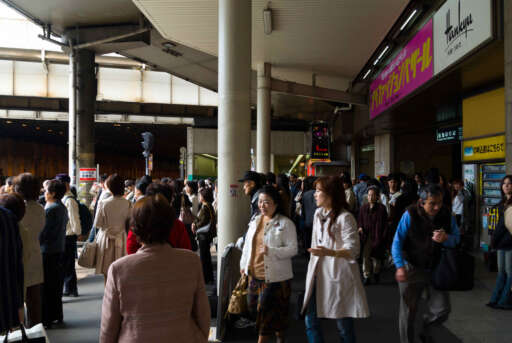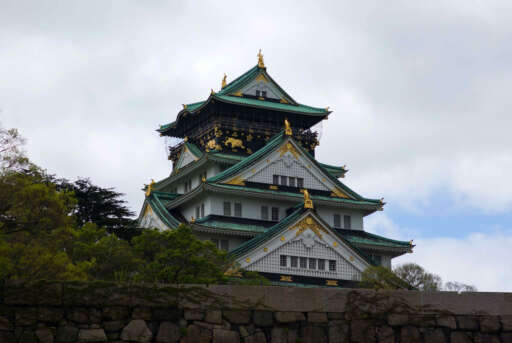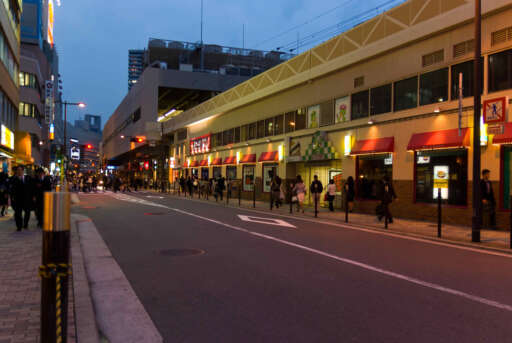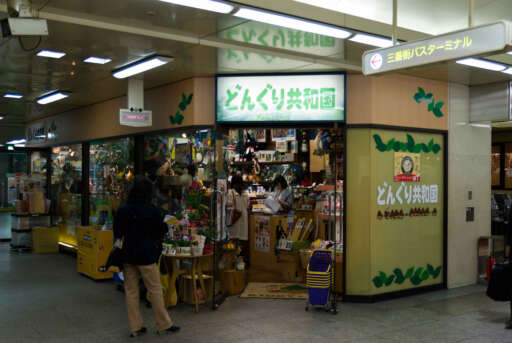The Kasuga Grand Shrine (春日大社), originally the family shrine of the once powerful Fujiwara family, is the largest and most extensive shrine in Nara. Founded over 1,200 years ago, it is now a UNESCO World Heritage site.
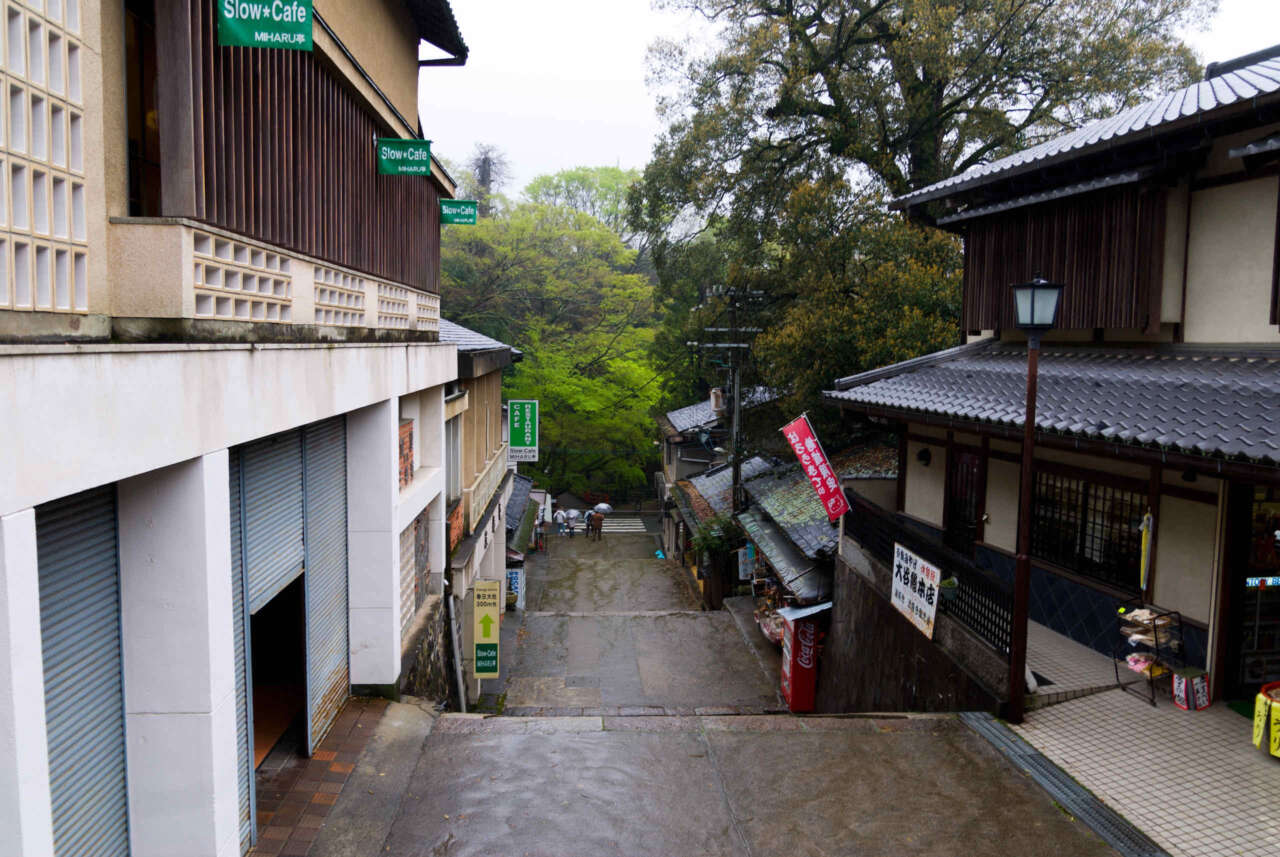
We visited by walking south from the Tamukeyama Hachimangu Shrine. On the way, we passsed through these set of steps with some old shops on either side:
And managed to attract the attention of yet another deer.
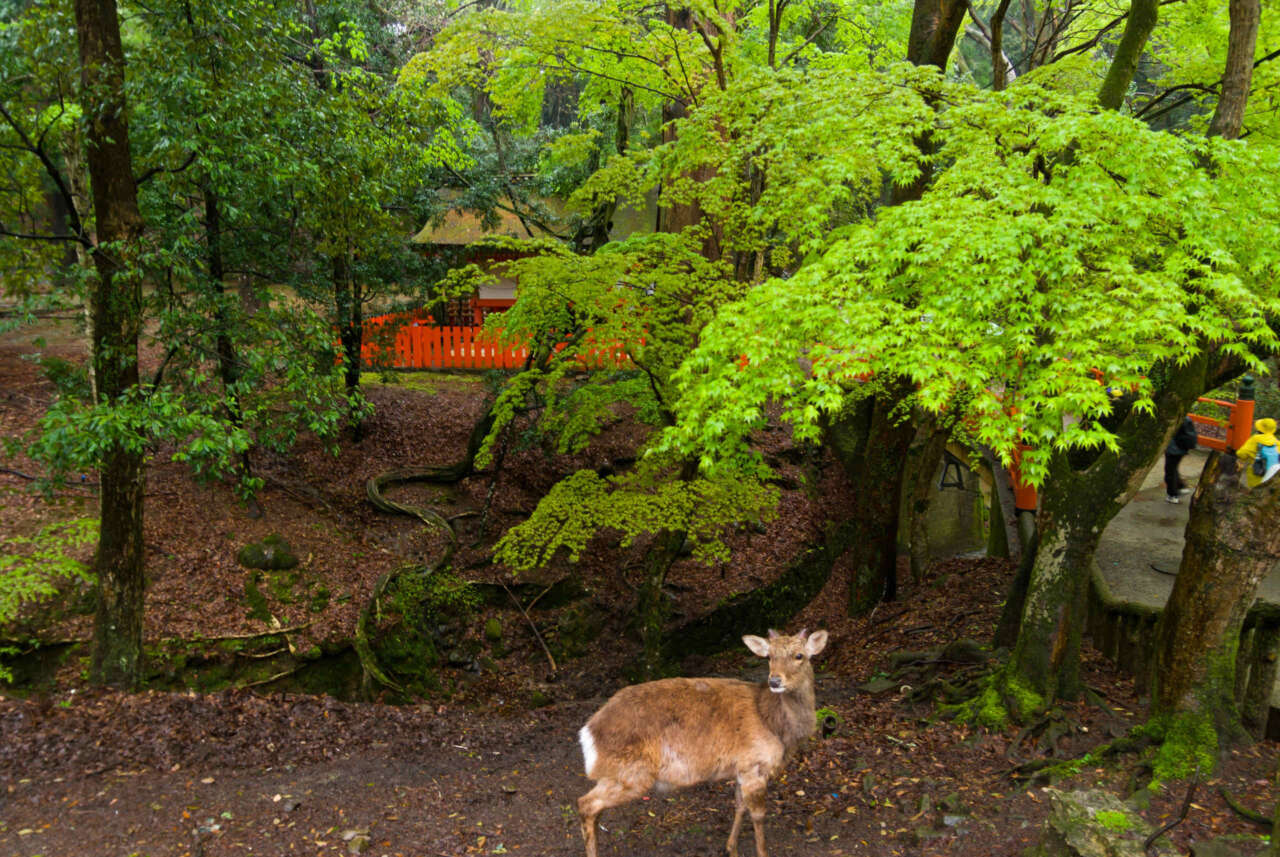
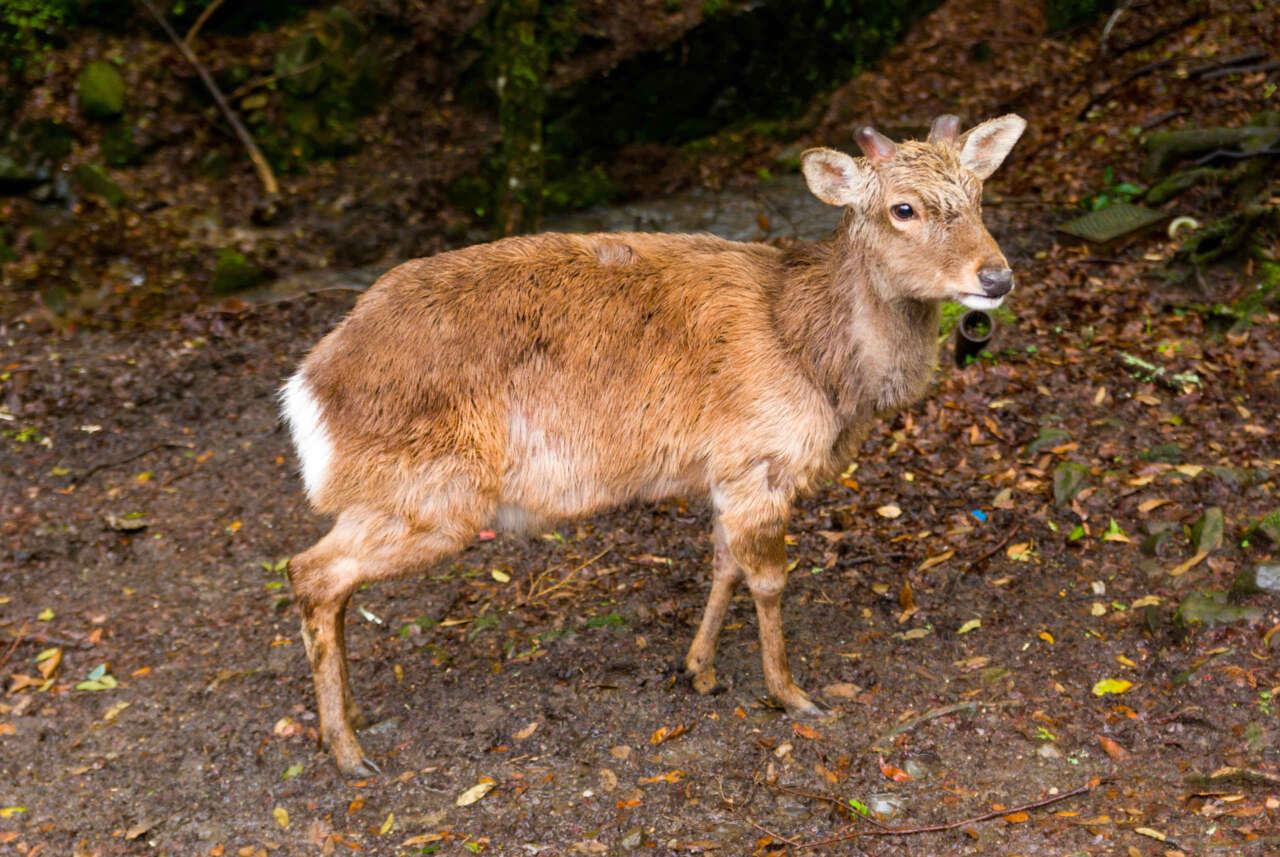
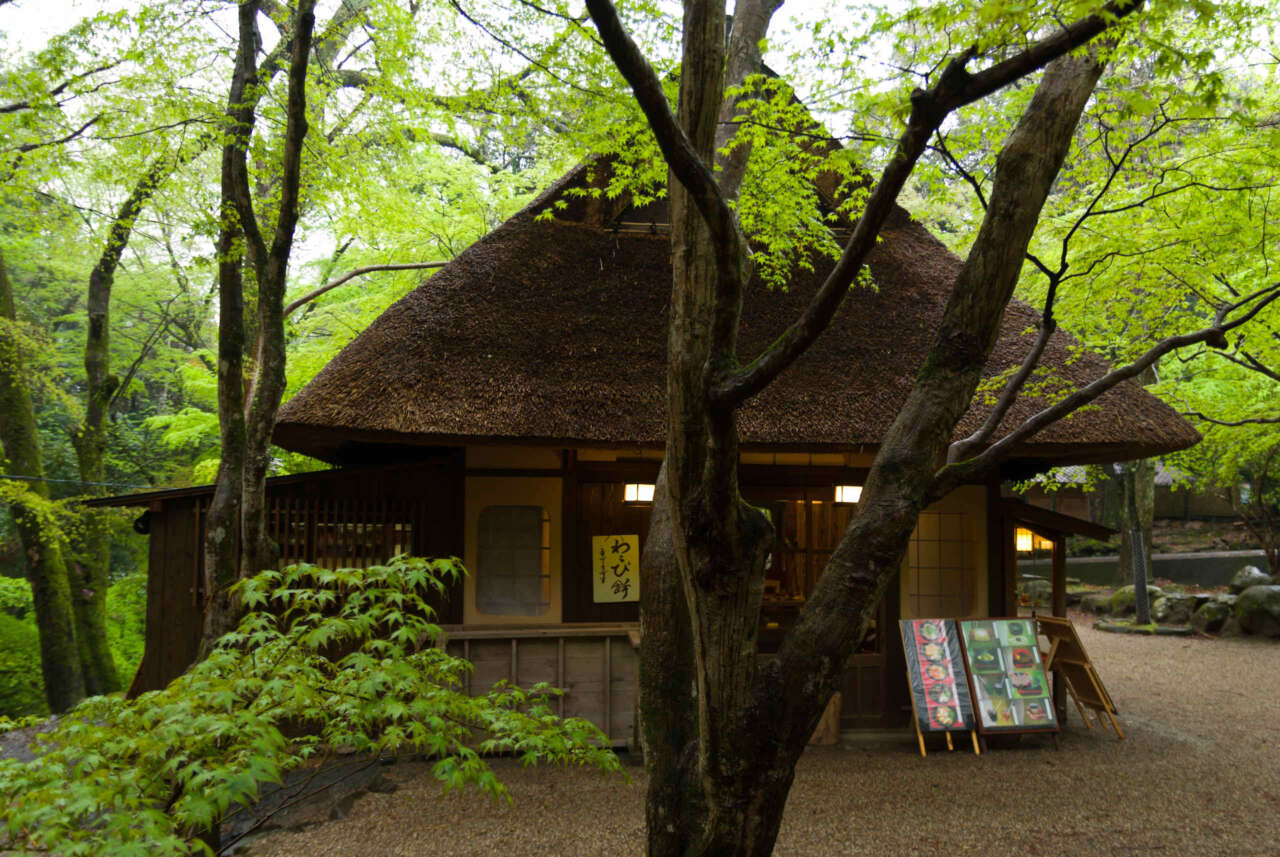
There’s an old noodle shop on the path to the Kasuga shrine.
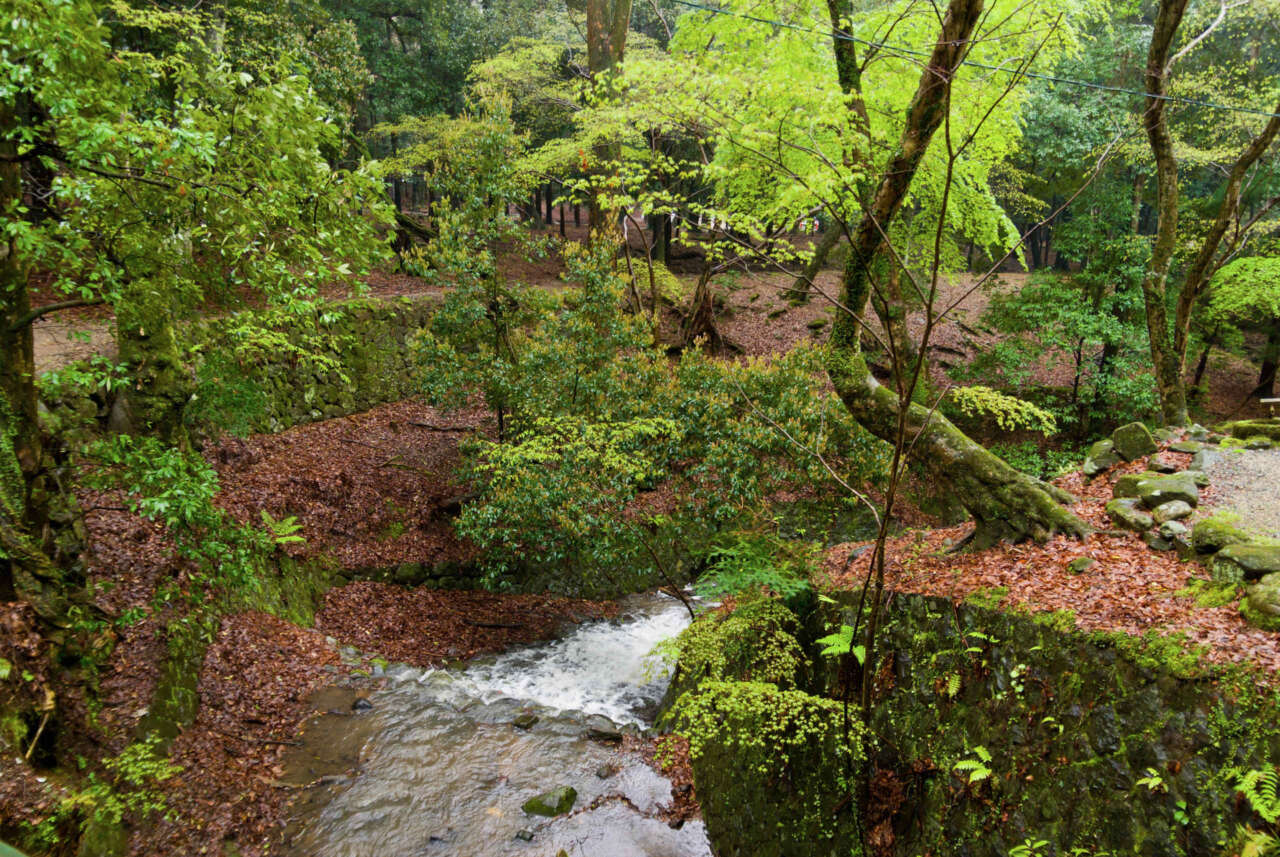
A small but bubbly stream runs along next to this shop.
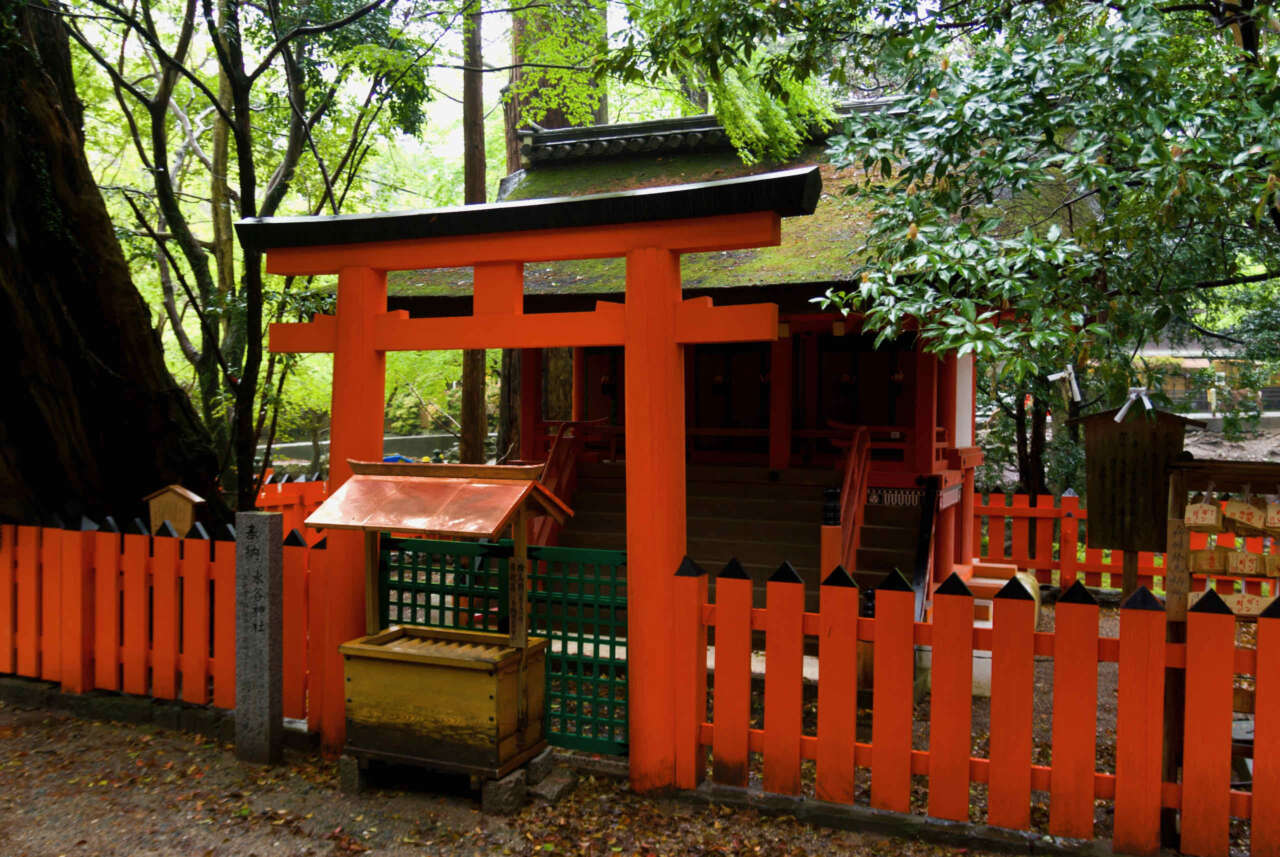
Before we reached the main area of the shrine, we passed through a number of auxiliary shrines attached to the area. The first, appropriately located next to the stream is the Mizuya auxiliary shrine (摂社水谷神社) – which is used to worship gods/goddesses associated with water.
After that, we passed through a path full of stone lanterns.
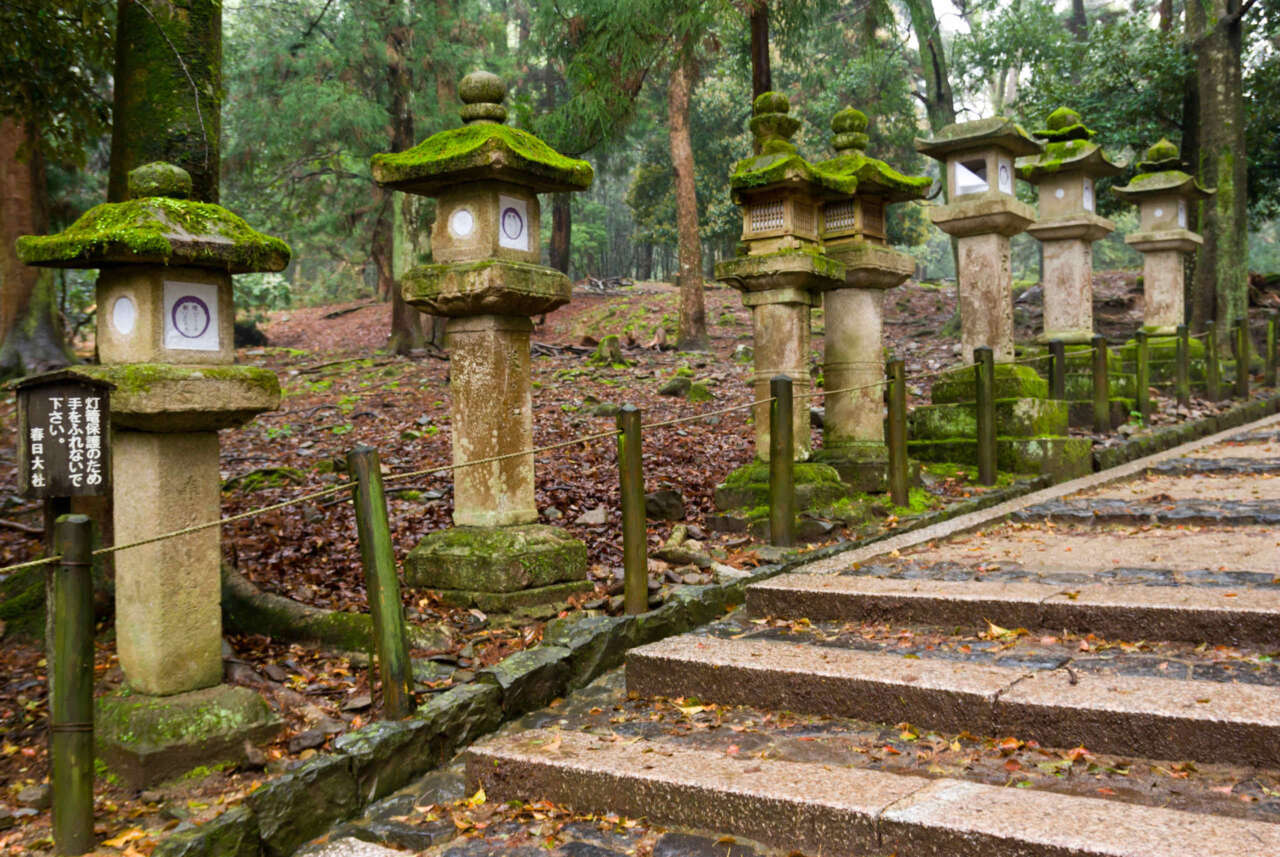
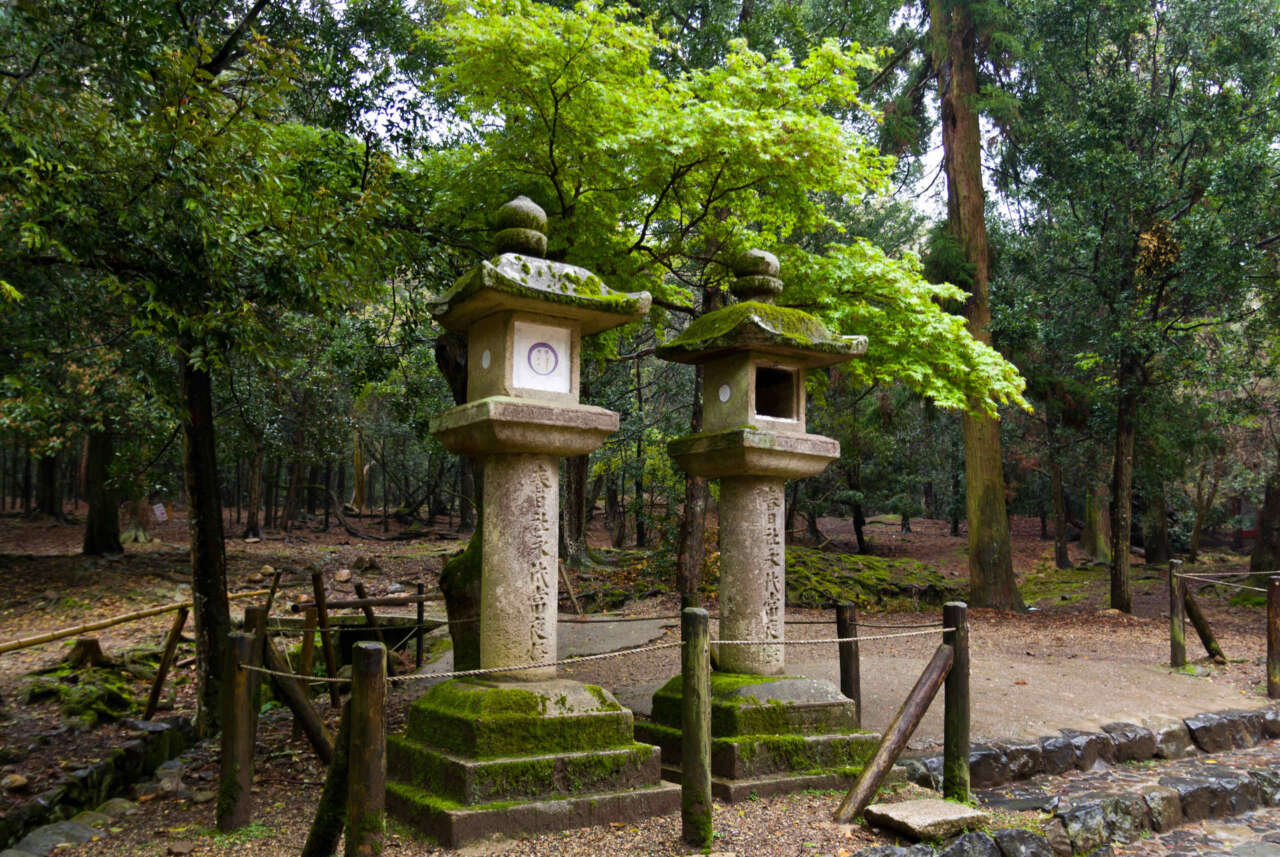
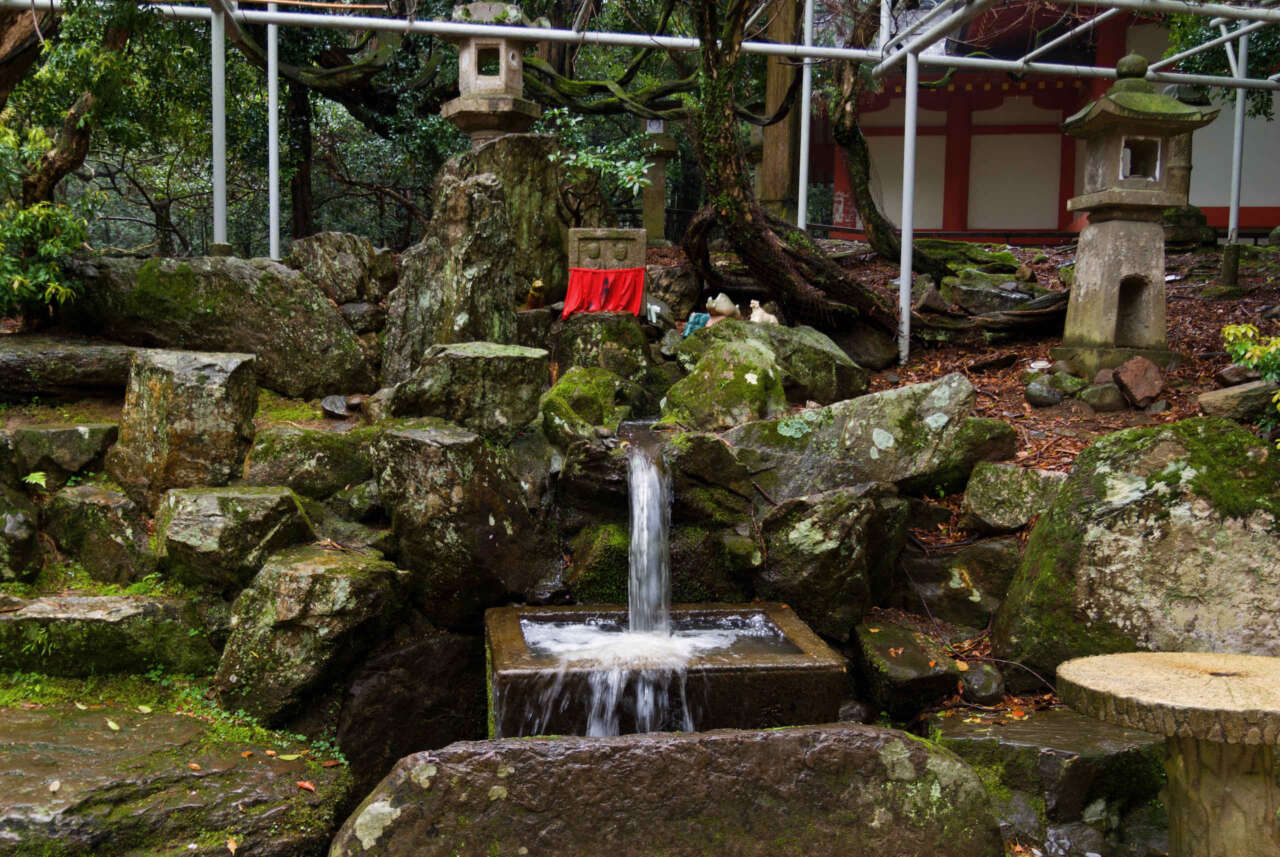
Next we encountered water gushing out of a spring next to the walls of main compound.
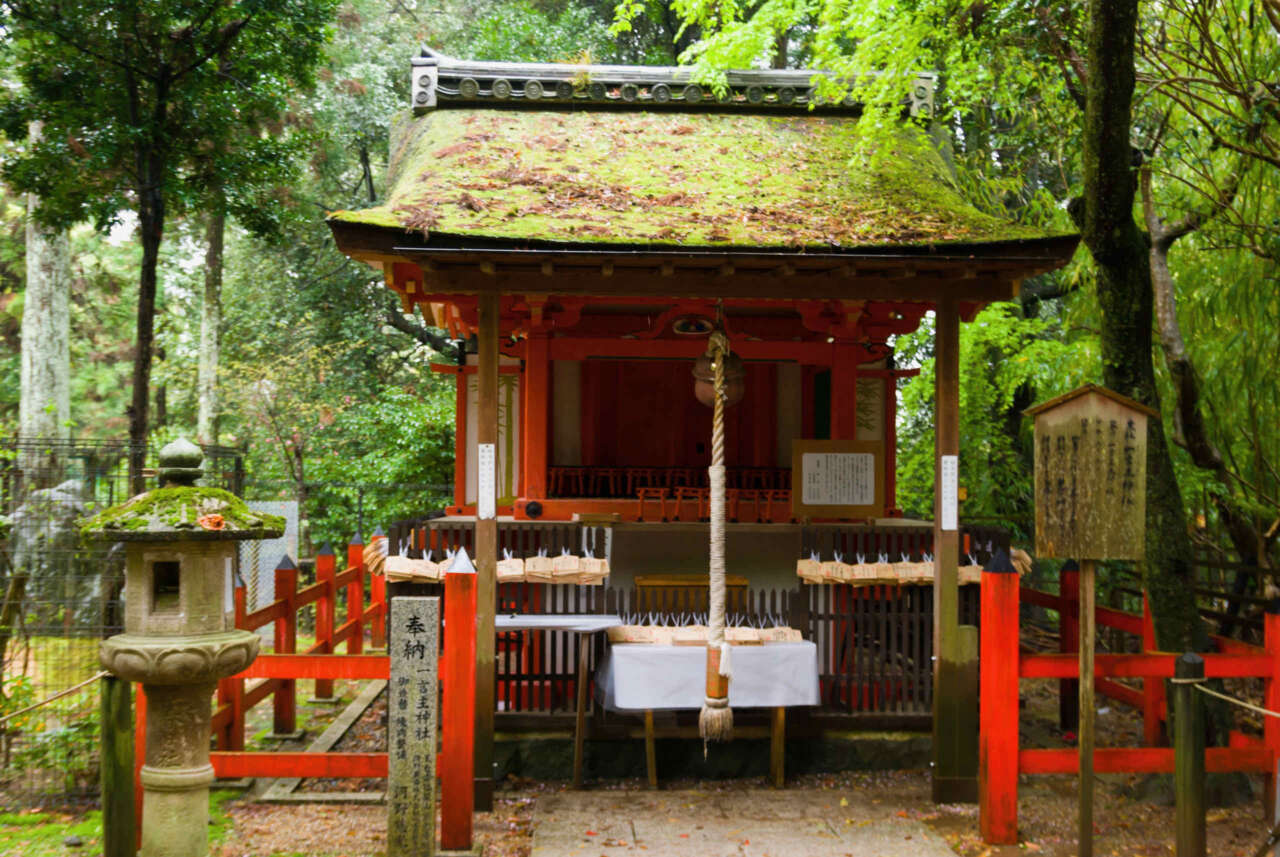
The next auxiliary shrine we saw is the Hitokotonushi Shrine (一言主神社). Hitokotonushi is “The God of One Word” – apparently he only grants requests to prayers consisting of only one word, and similarly his answers to questions will only consist of one word.
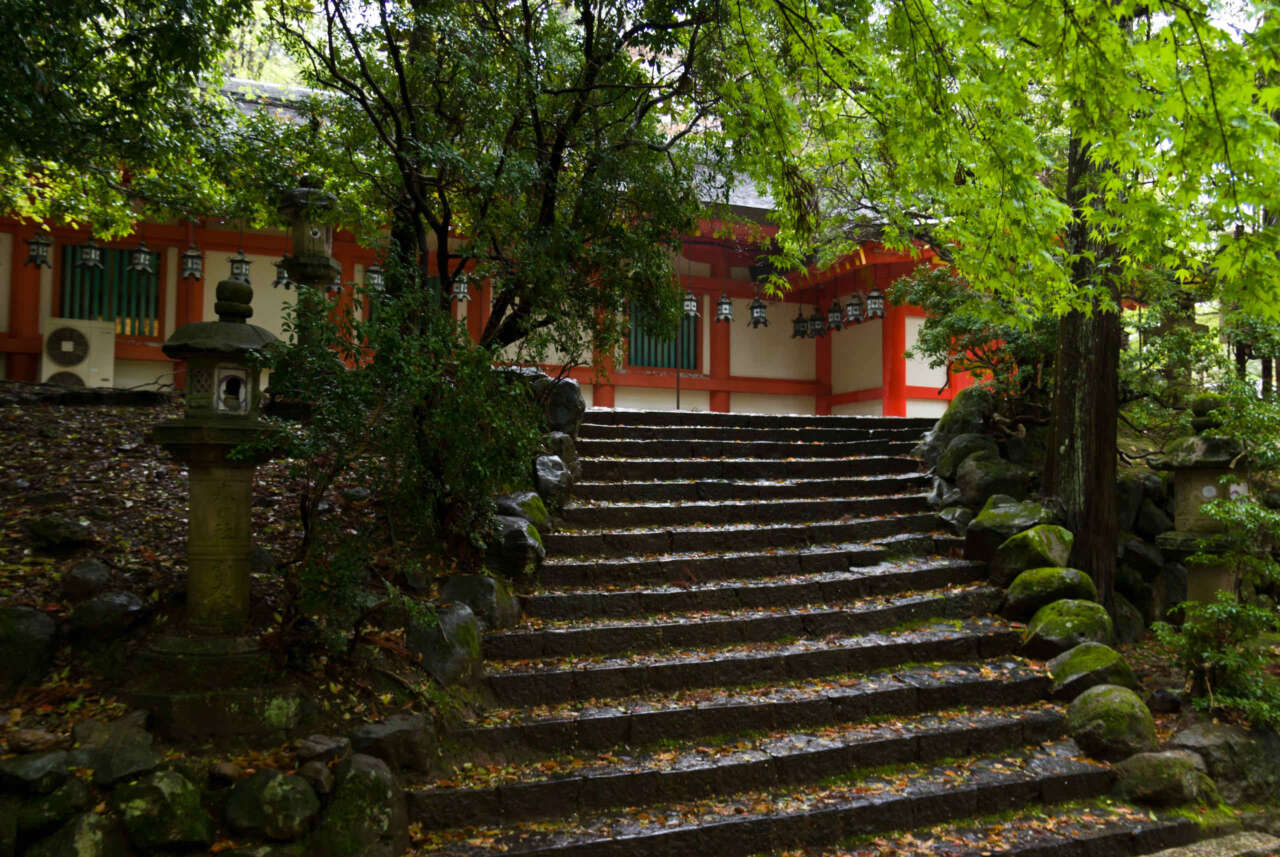
These are the steps to the Keiga gate.
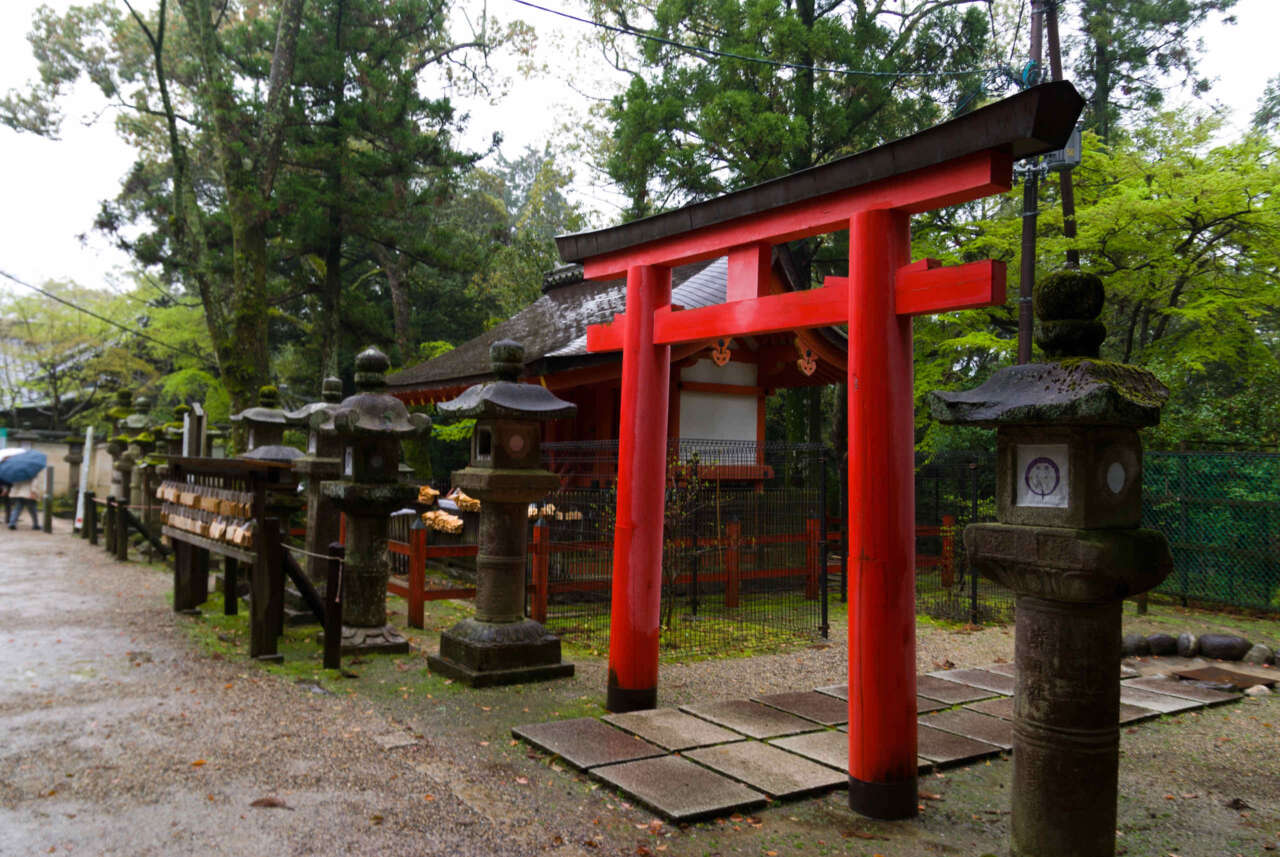
And this is the impressive looking Torii gate.
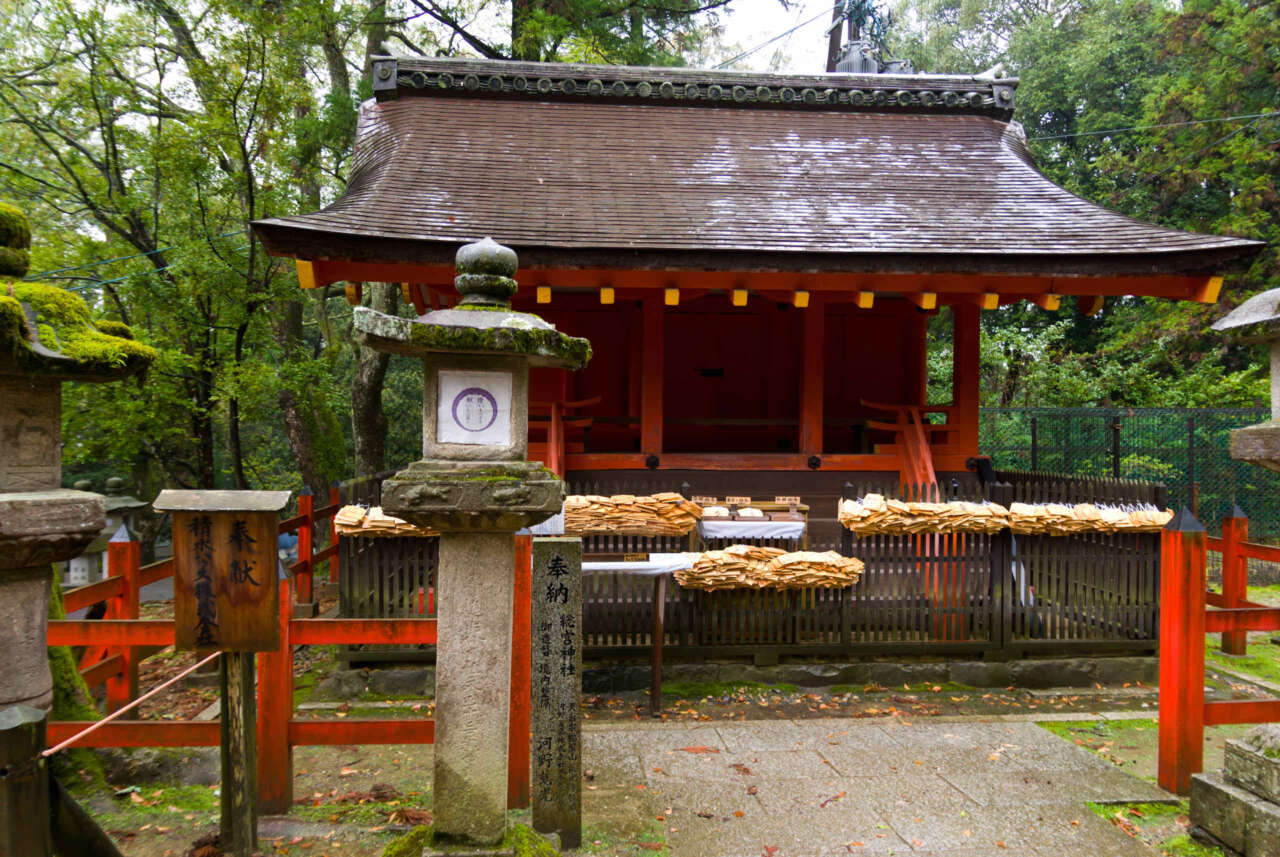
Next is the Souguu Shrine (総宮神社), associated with worship of the Sun God.
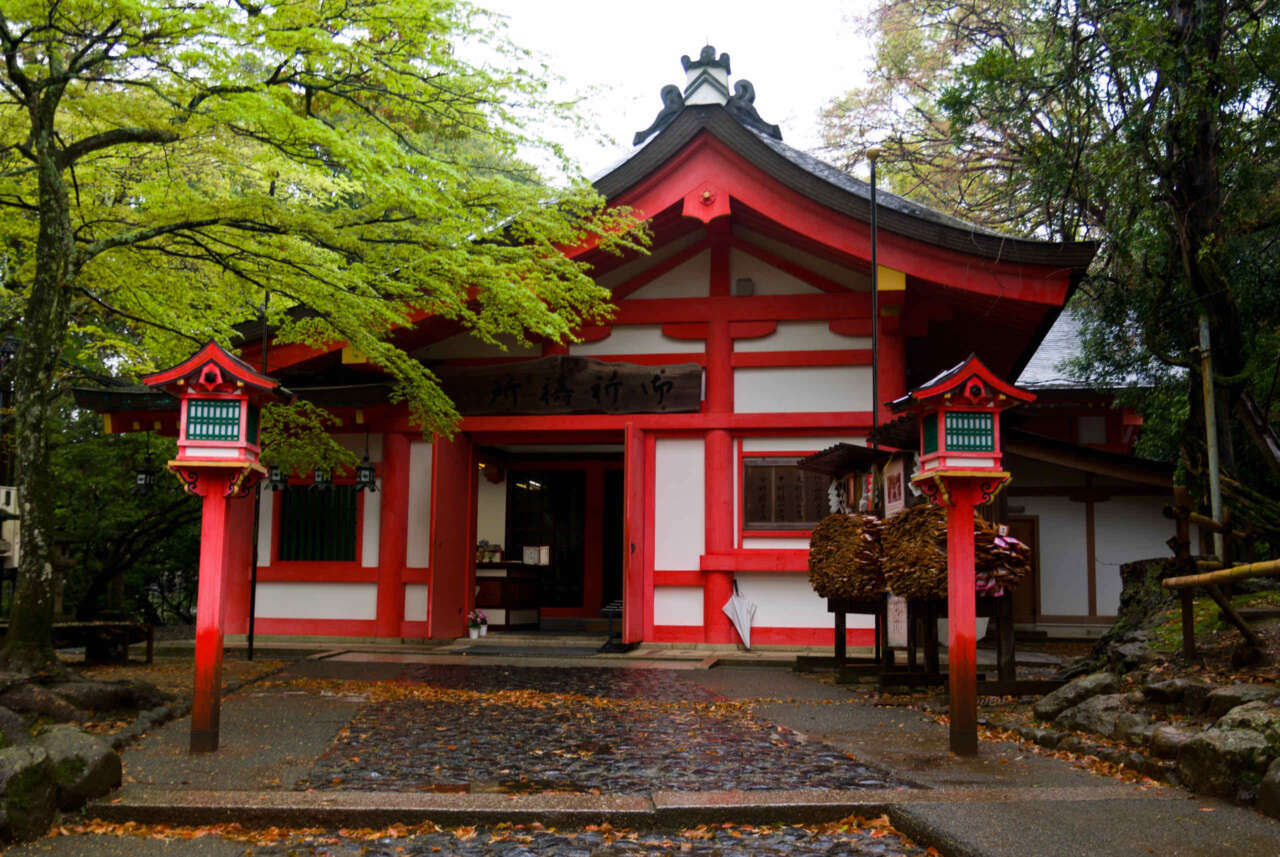
This is a prayer hall – Kitoujo (祈祷所).
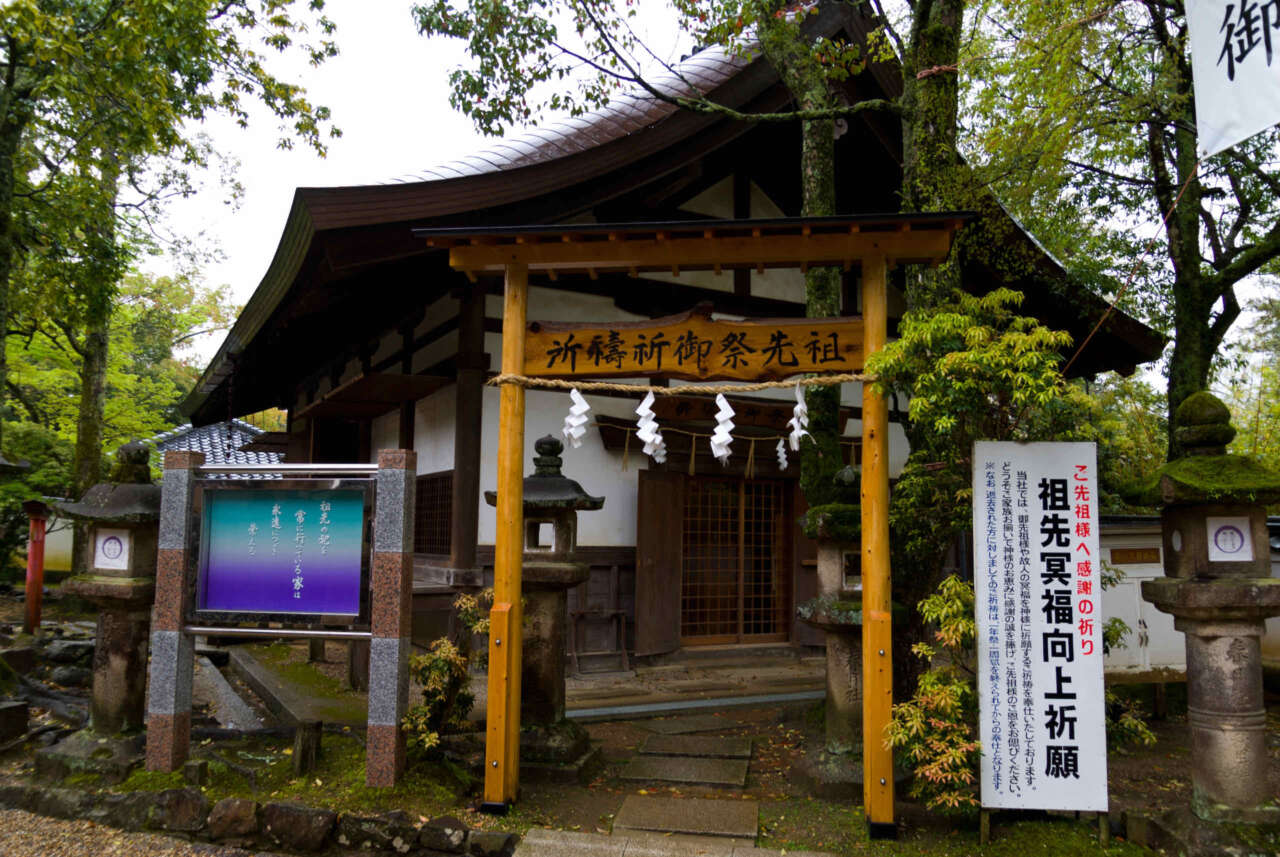
And this is an Ancestral ceremonial hall (先祖斎場).
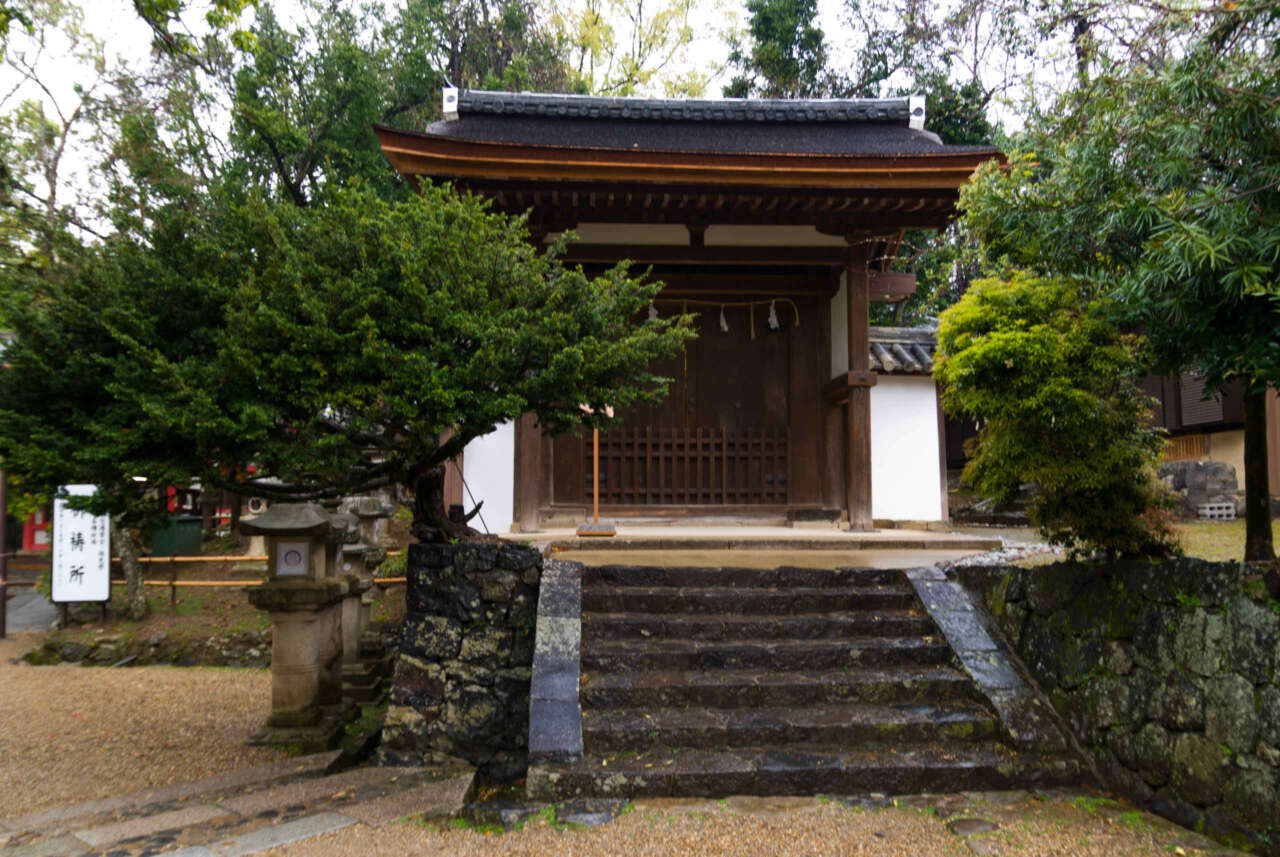
This is another prayer hall.
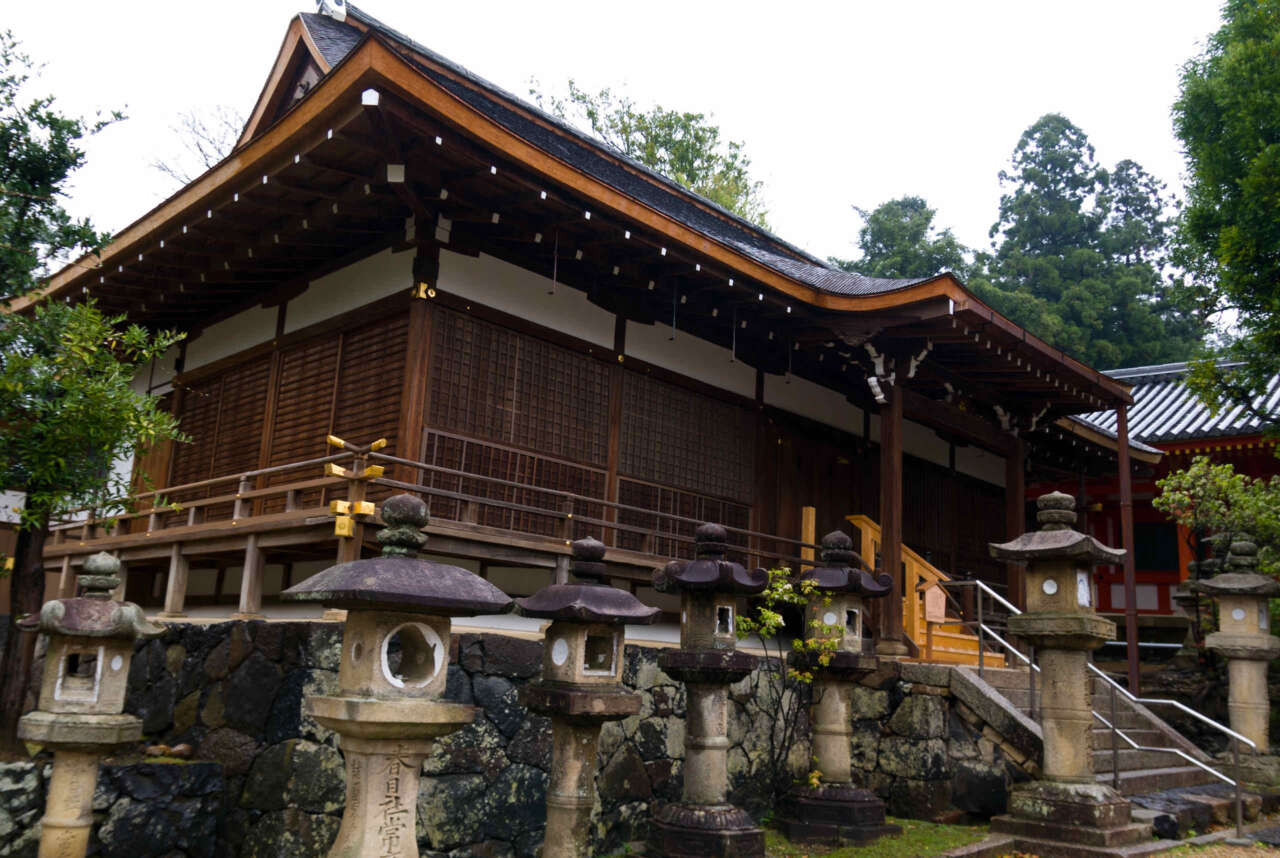
This is the Keishouden (桂昌殿).
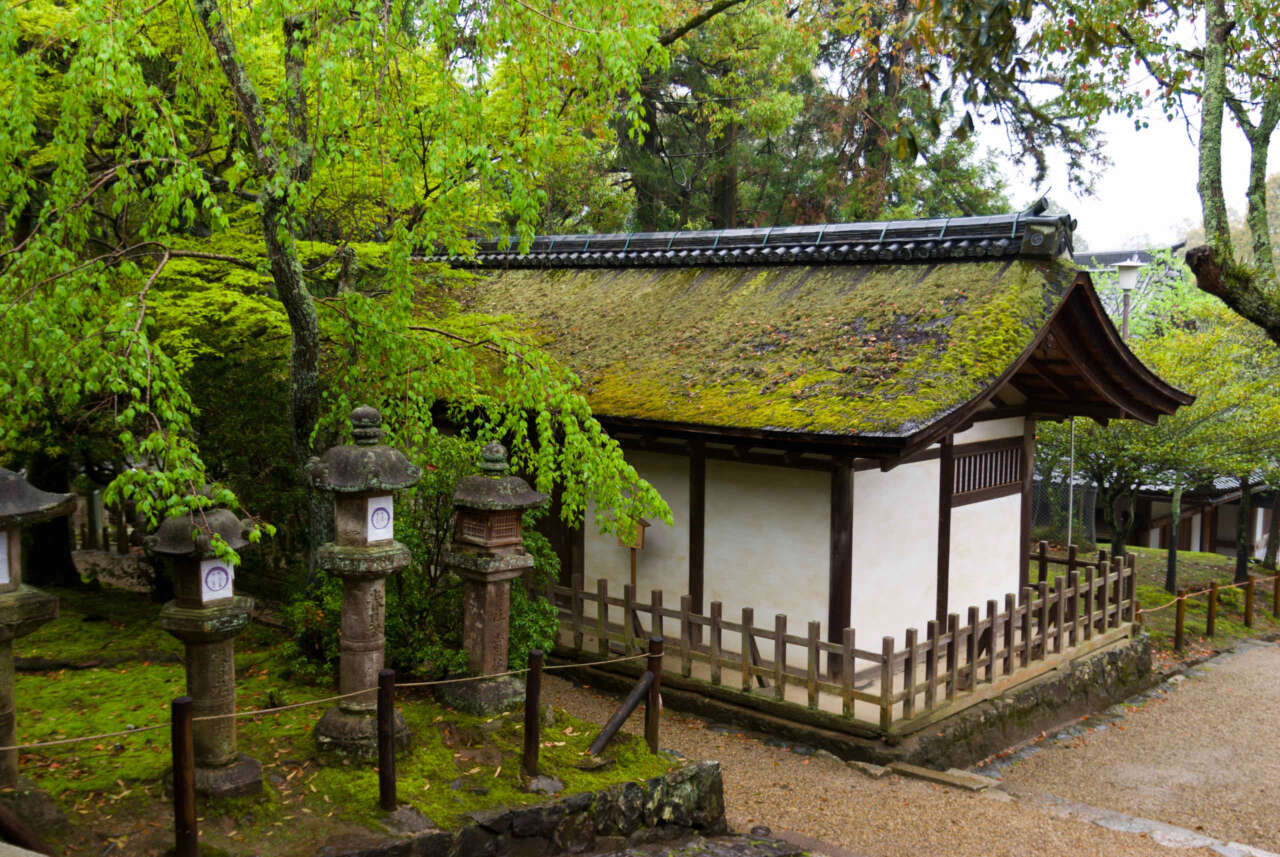
Hetsuidono (竃殿).
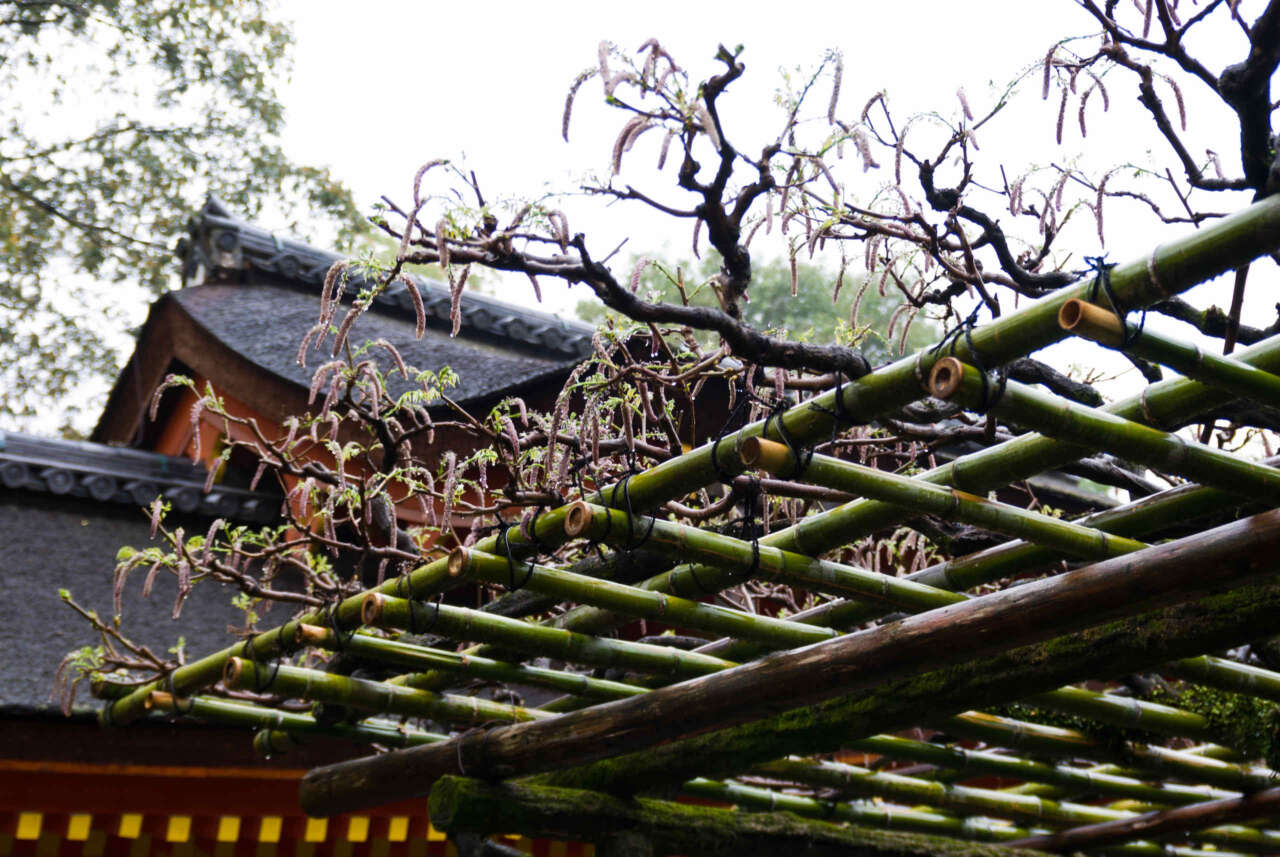
We finally reached the cloisters. The first thing we noticed was a wisteria trellis. Later on I discovered the wisteria is actually part of a tree with 7 plants growing out of it: “isunoki” (Distylium racemosum), mountain cherry, camellia, nandina, elder, wisteria and maple.
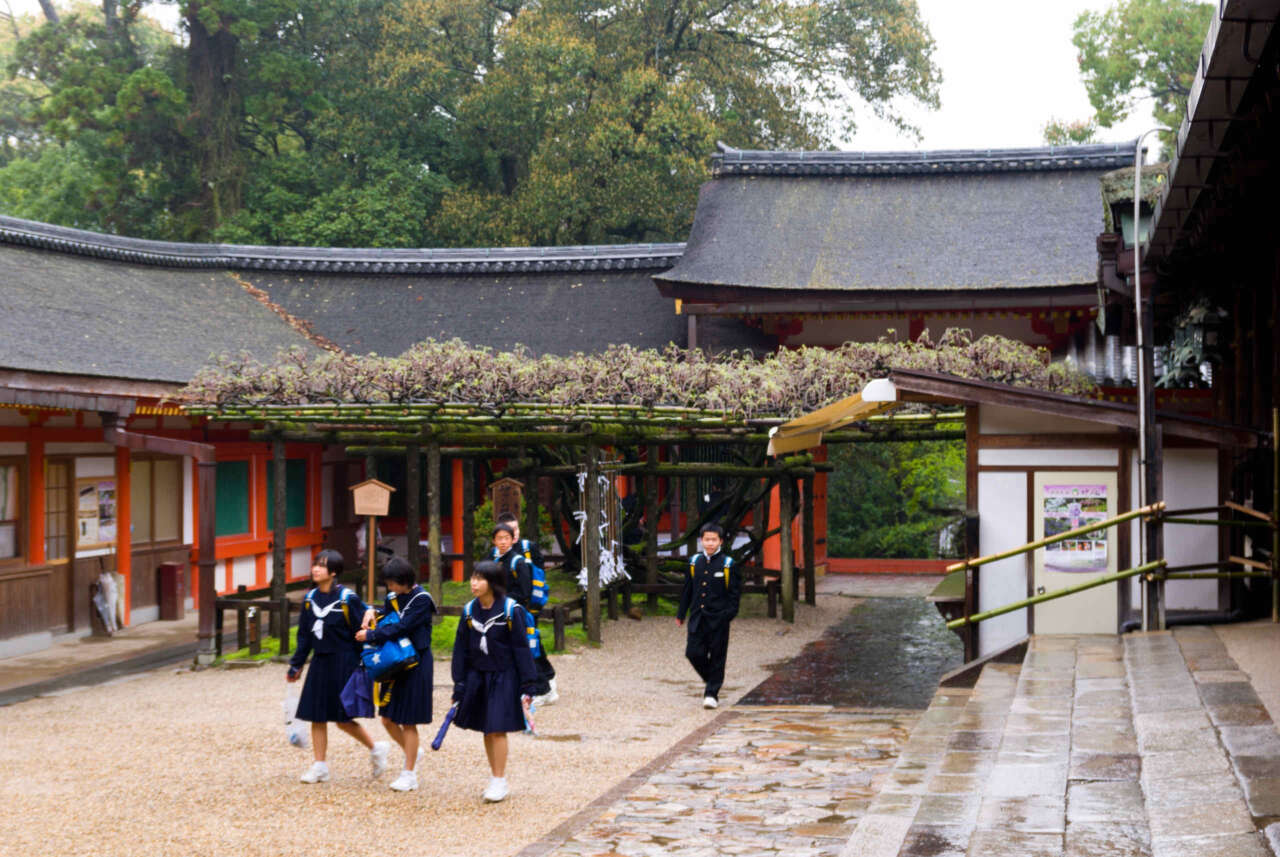
We saw some schoolchildren on a field trip – apparently their assignment is to practice their English by interviewing foreigners, because I noticed they targeted anyone looking vaguely Western and started asking questions from a piece of paper! Unfortunately it seems there were quite a few non-English speaking foreigners which stumped some of the children.
A very picturesque row of bronze lanterns line the path of the Mitarashi river between the west cloister and the Naishiden Hall.
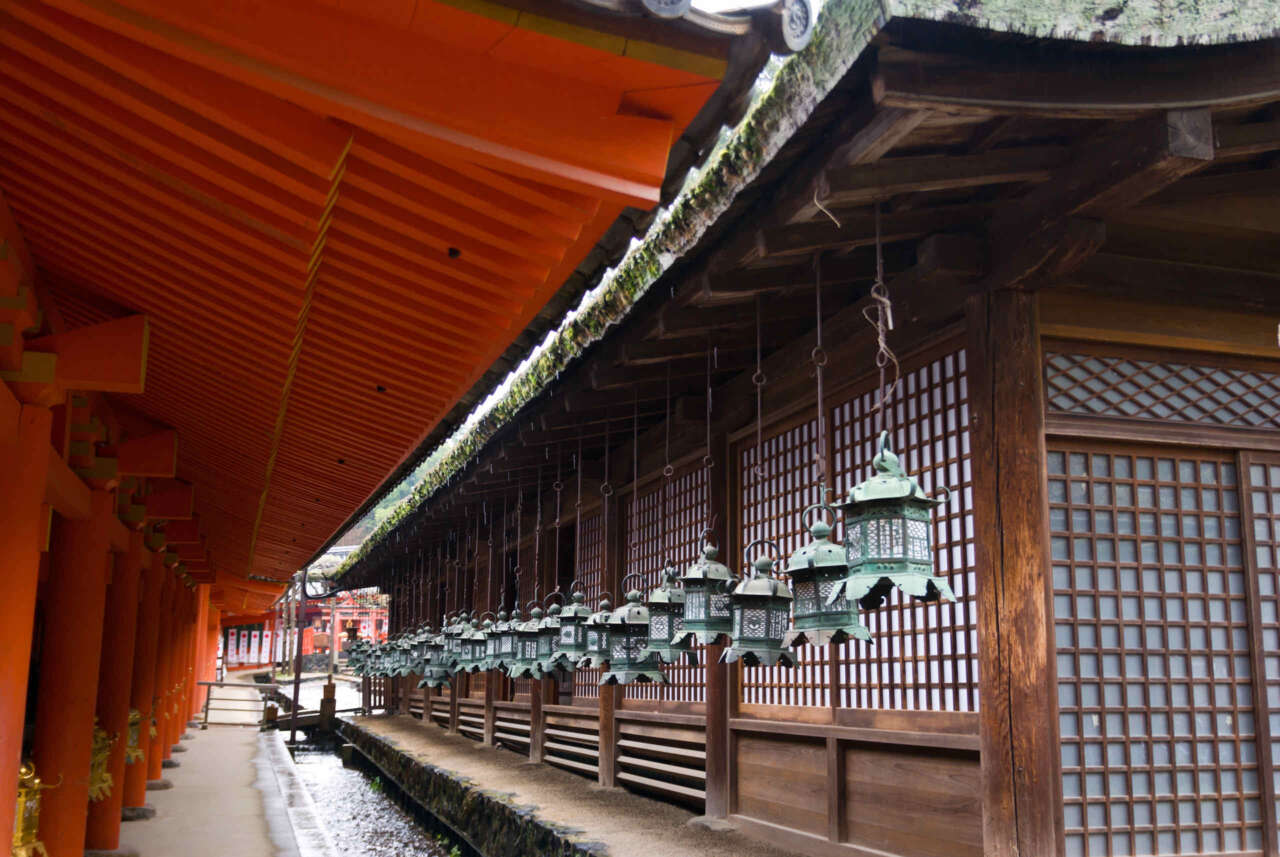
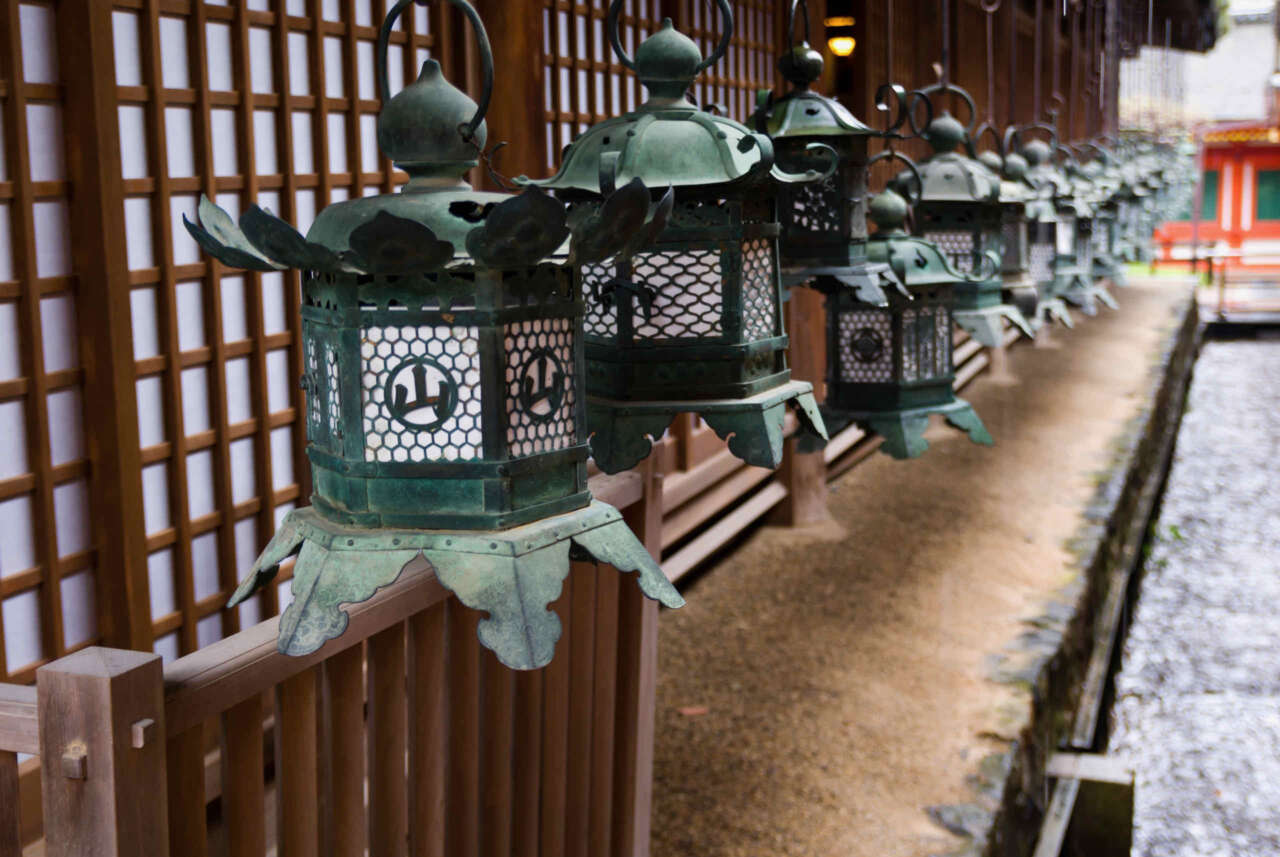
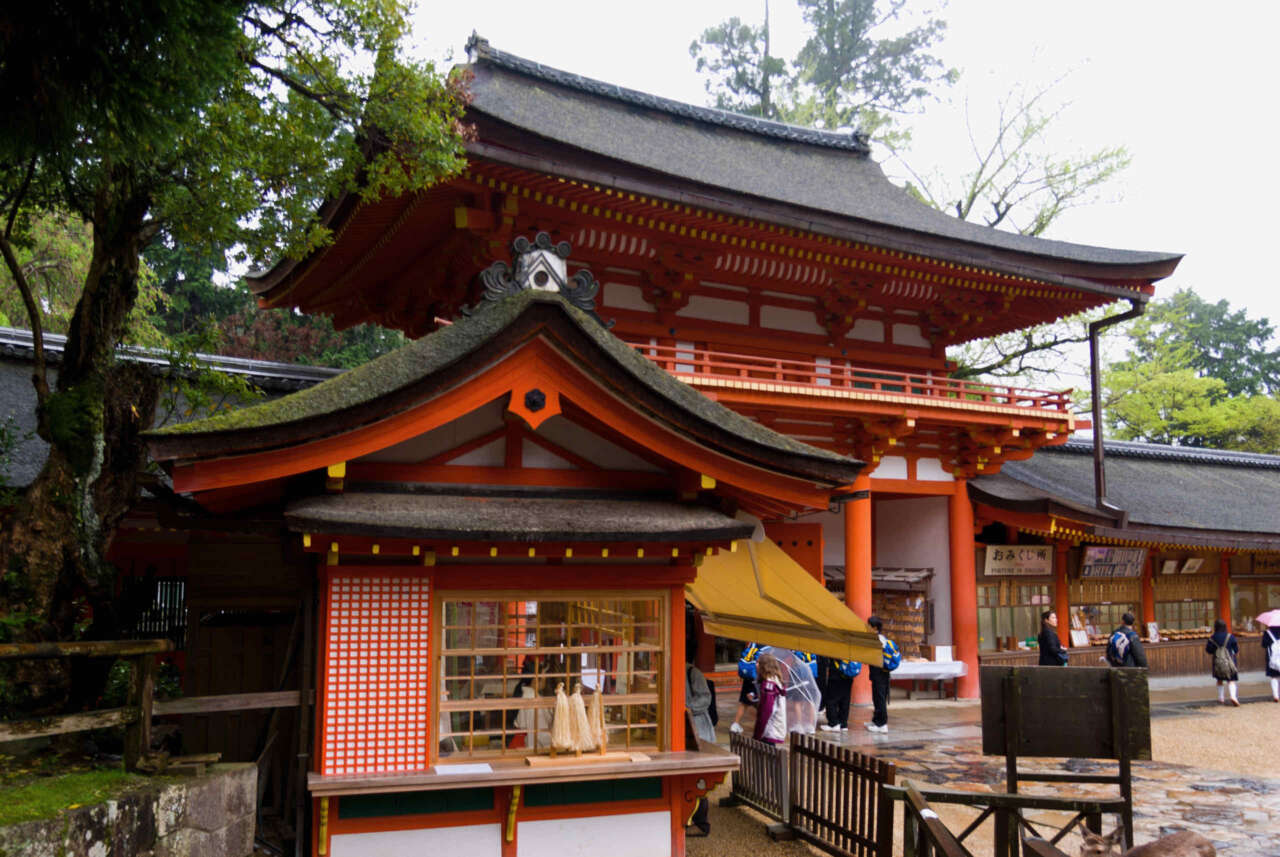
This is the ticket office, for admission into the inner side of the cloister, next to the Nanmon (South Gate).
The Chumon (Middle Gate) and Orou (open verandah) are magnificent, with two huge lanterns in front.
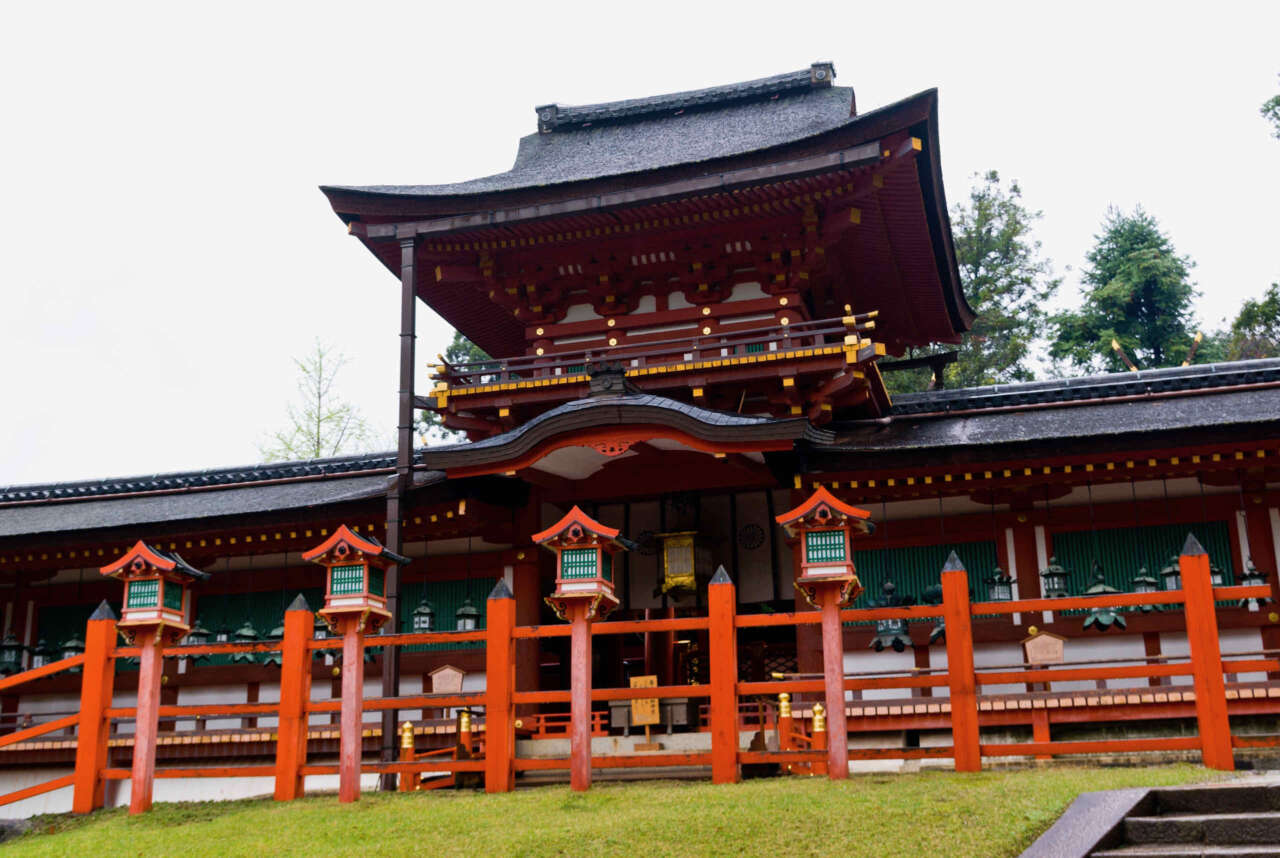
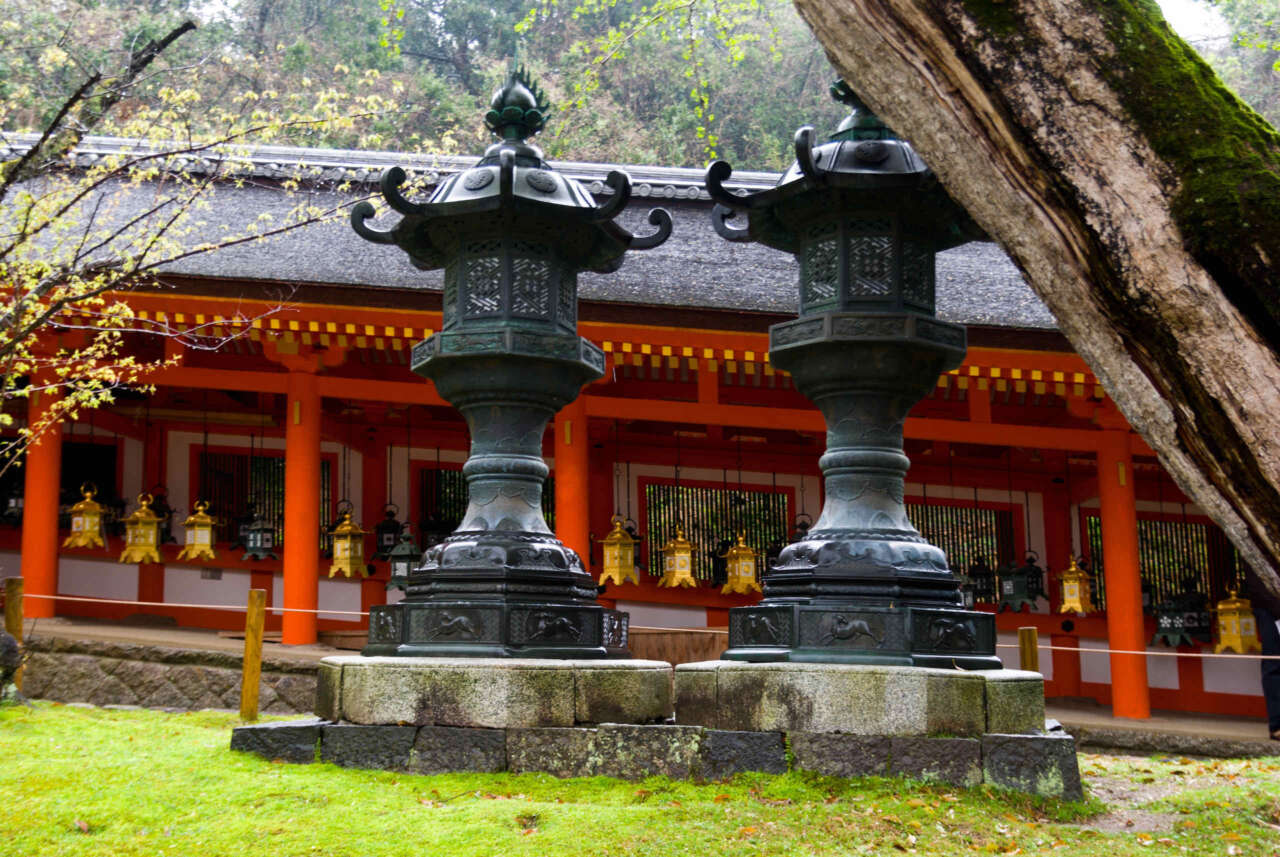
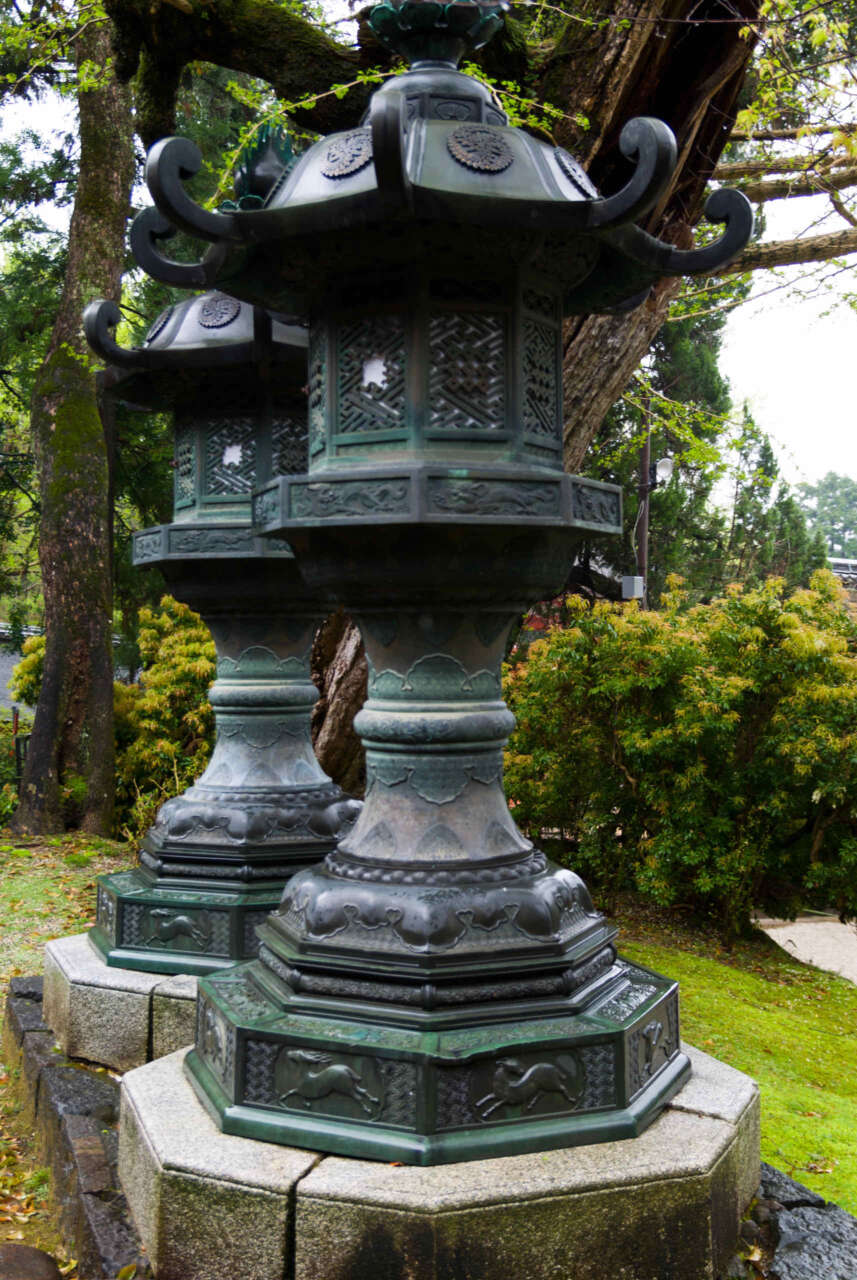
The cloisters are decorated with rows and rows of beautiful bronze and gold lanterns.
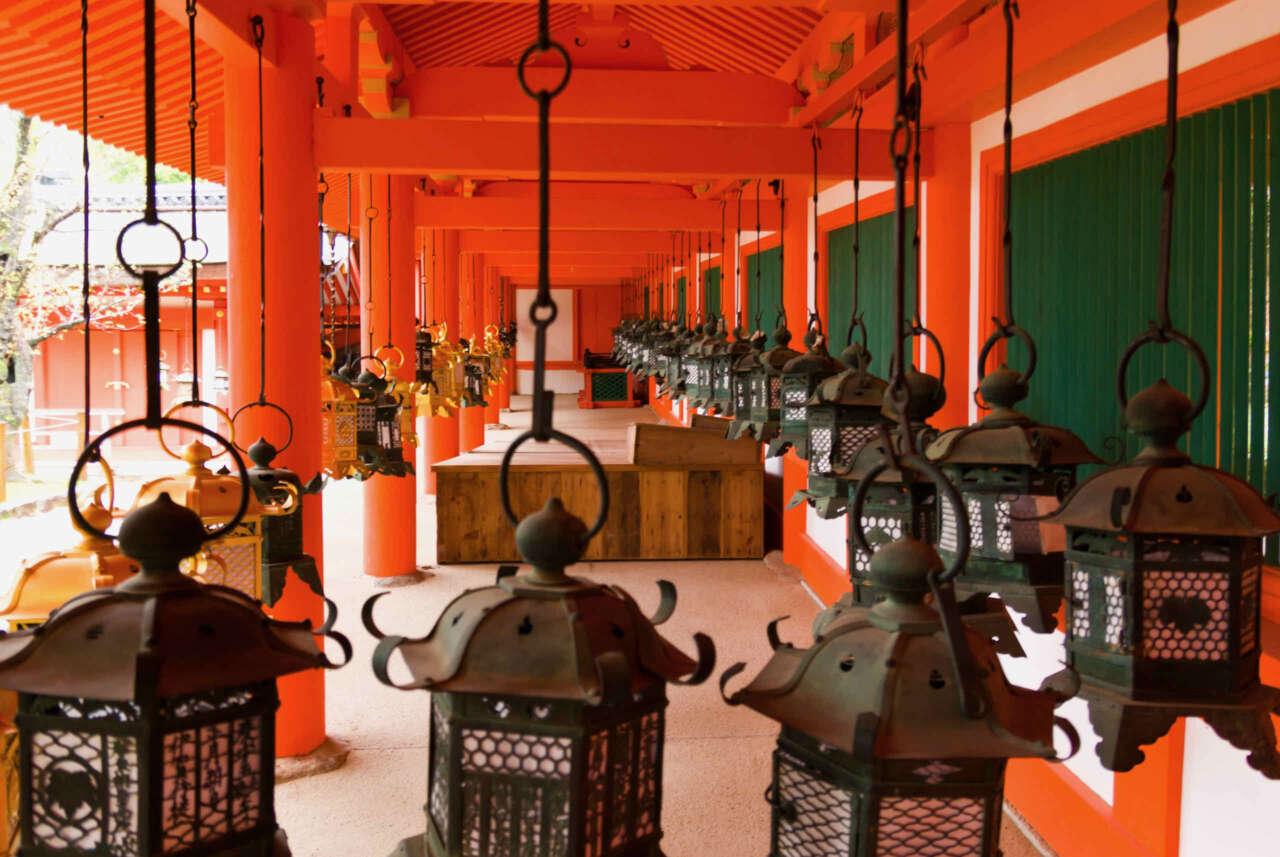
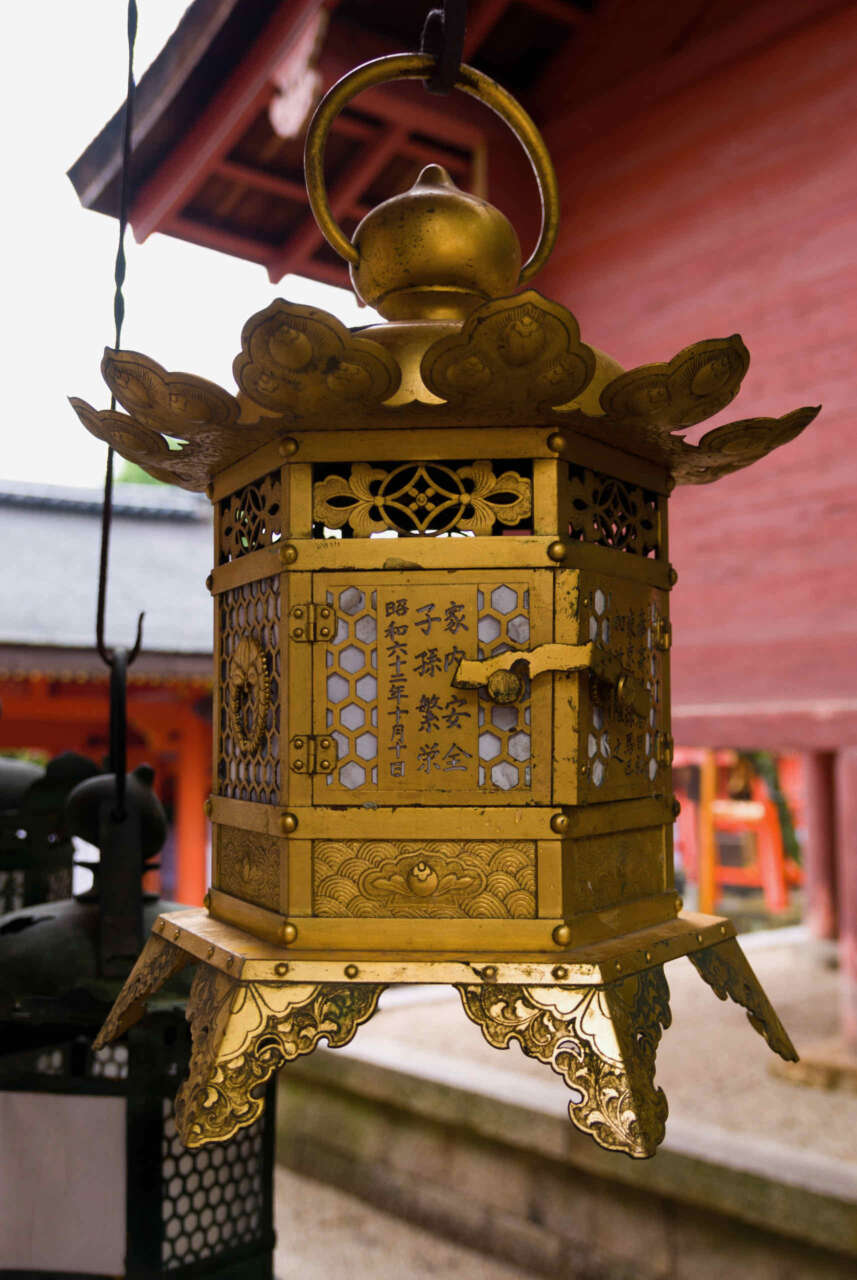
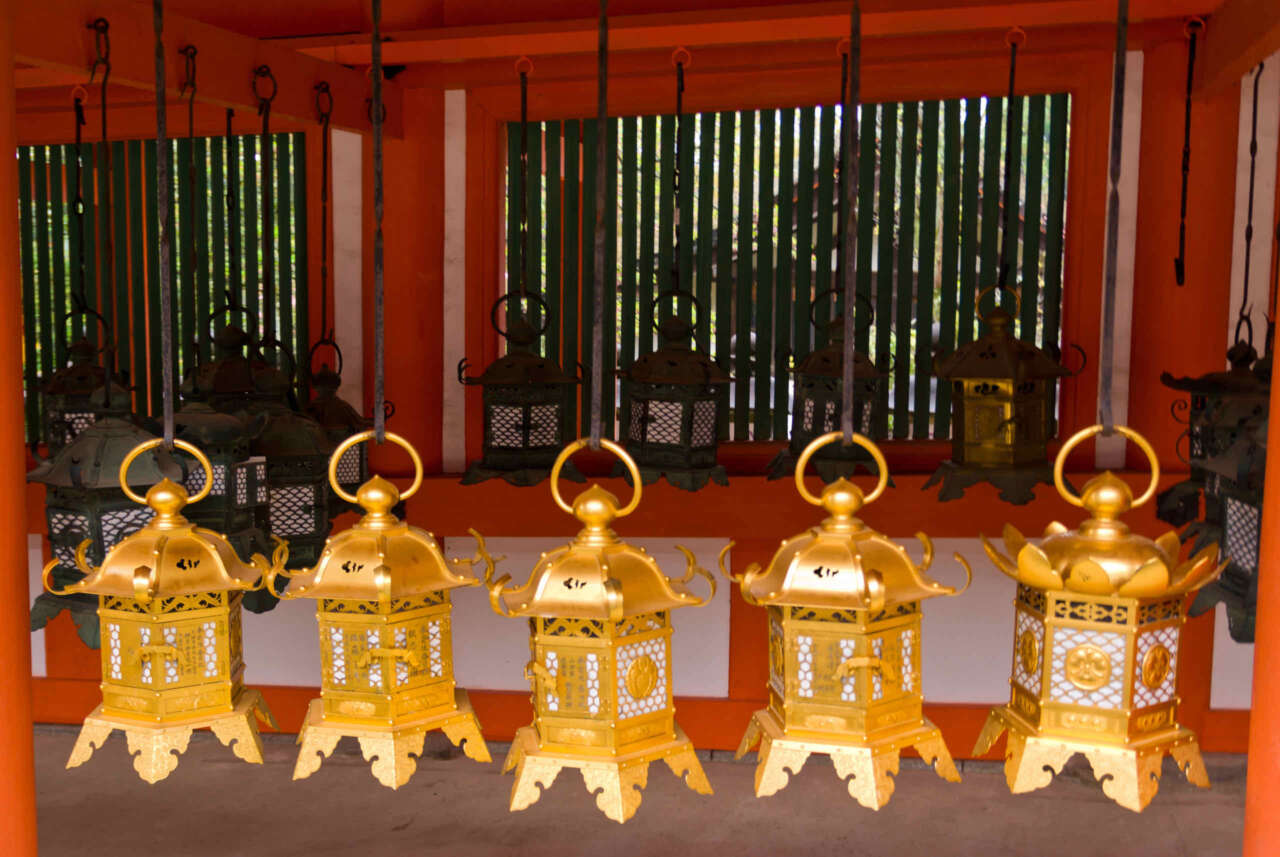
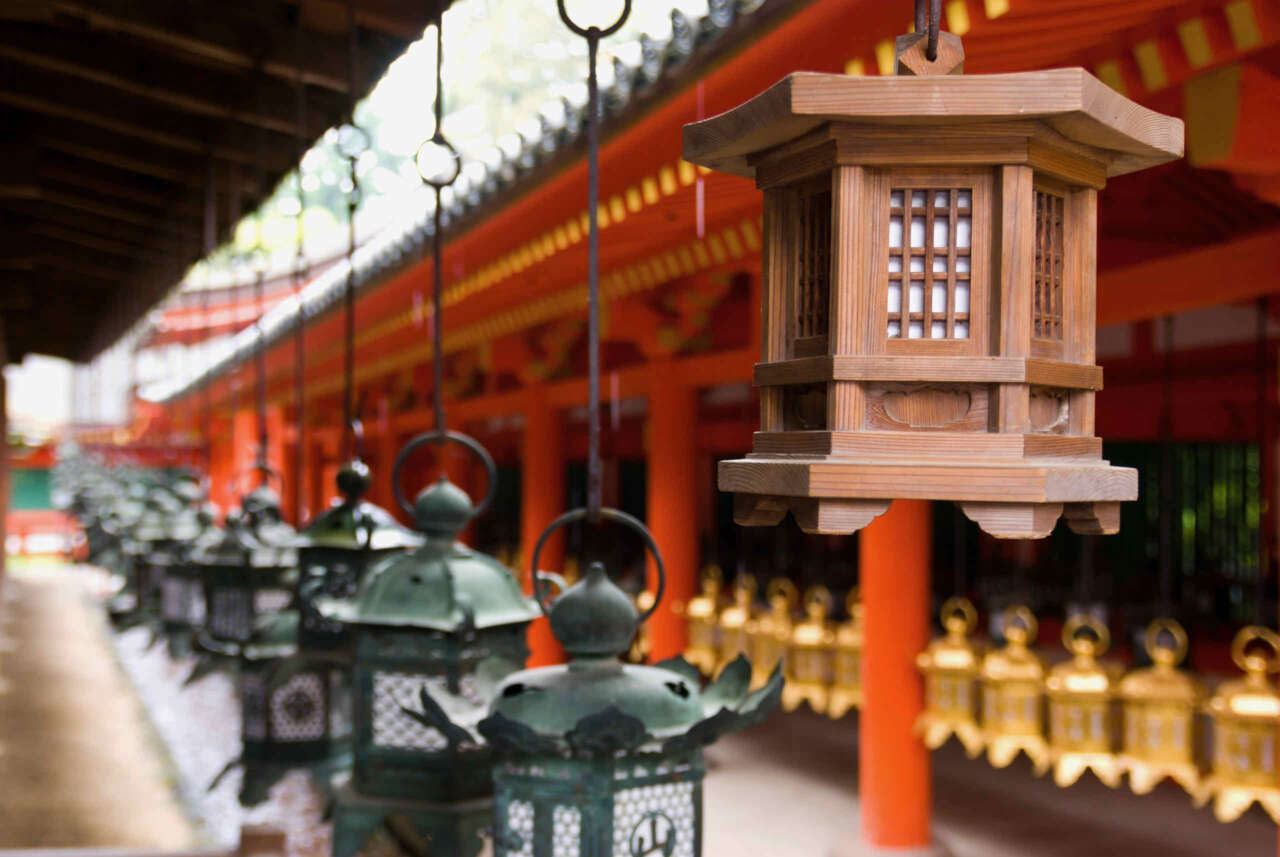
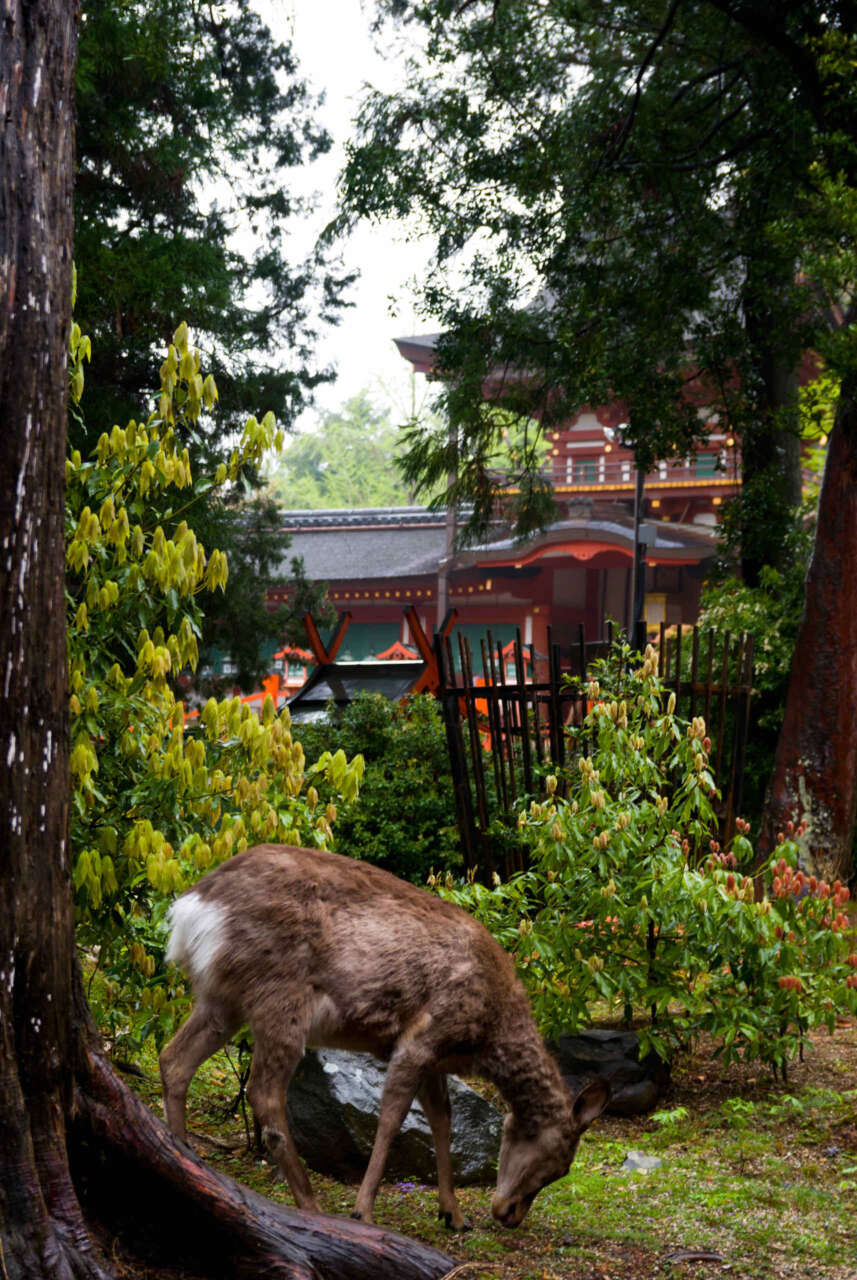
We found a deer wandering in the garden outside the Chumon.
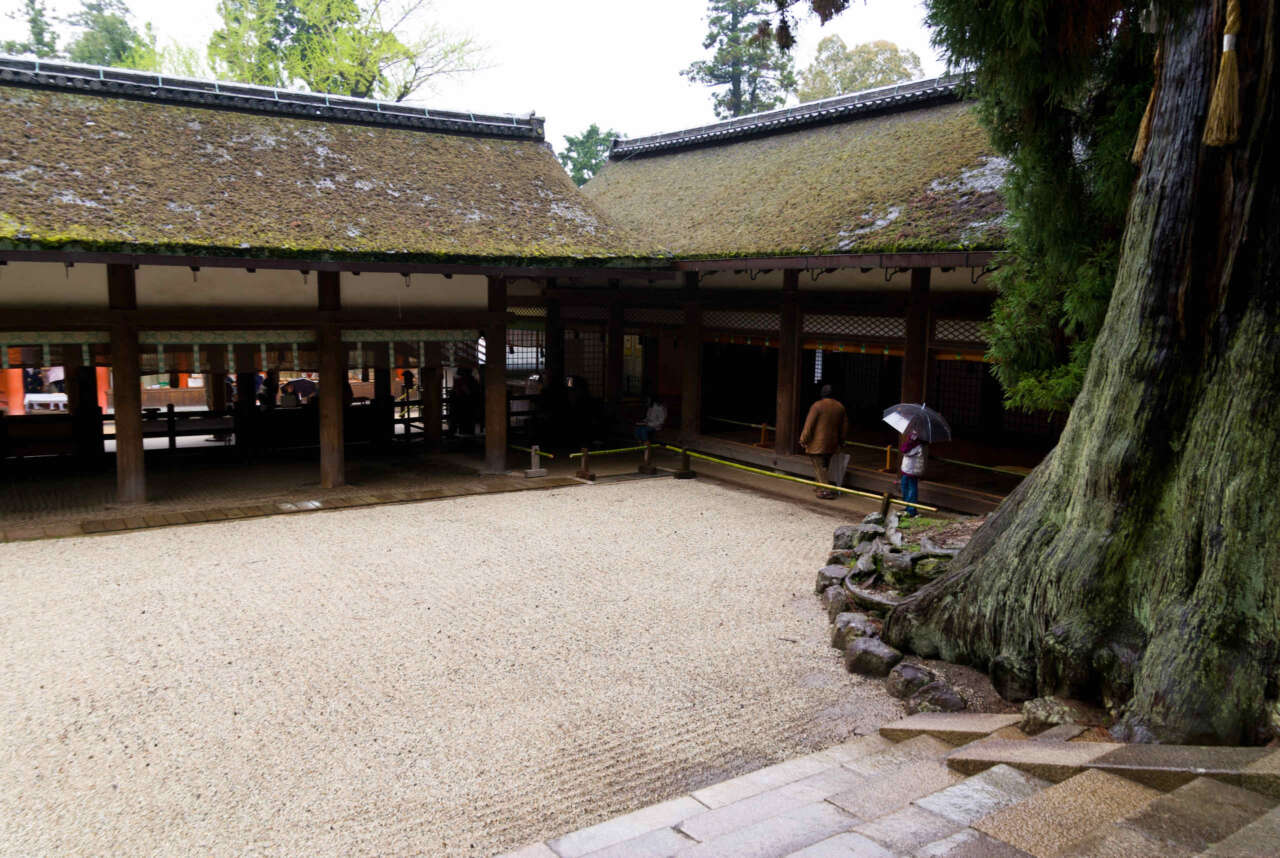
This is a giant cedar tree facing the Heiden and Buden (幣殿・舞殿). Heiden is a place where offerings from the emperor are placed temporarily, and is distinguished from Buden by its coffered ceiling. Buden is where traditional music and dance of the Imperial Court are offered, and is also used as a place for ceremonial music and dance on rainy days.
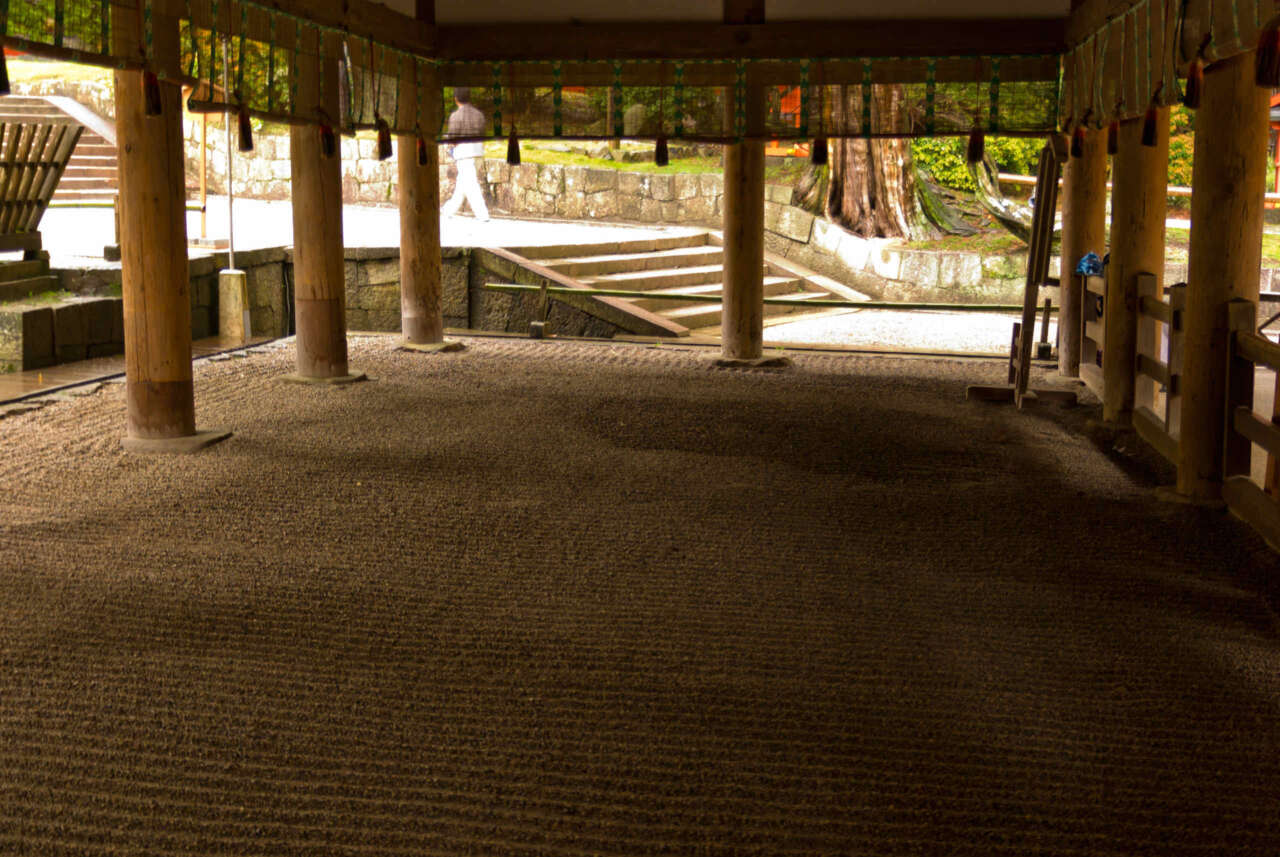
Inside the Buden.
This is the Tsubakimoto shrine next to the Ushirodono Kakusha-sampaijo gate. The Fujinami-no-ya Hall, which is full of lit lanterns is nearby.
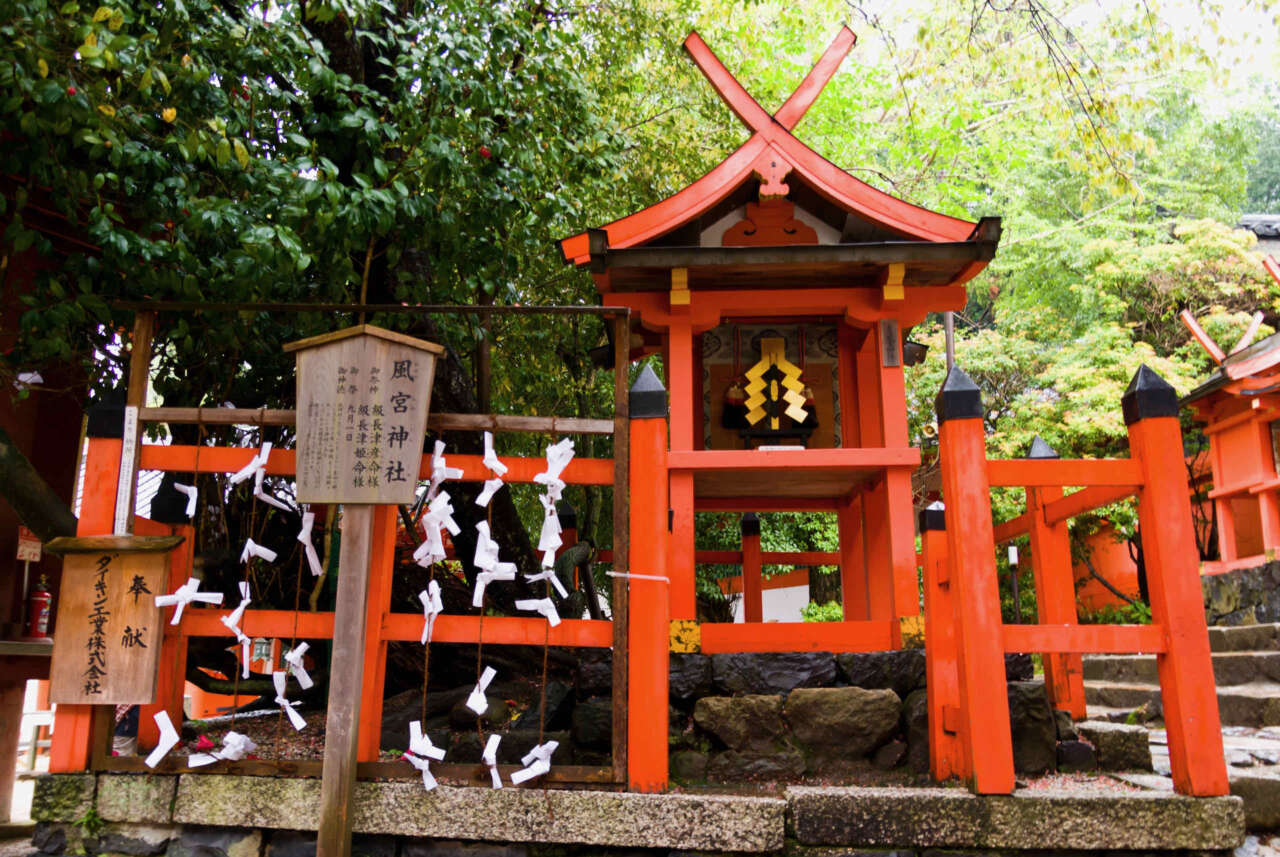
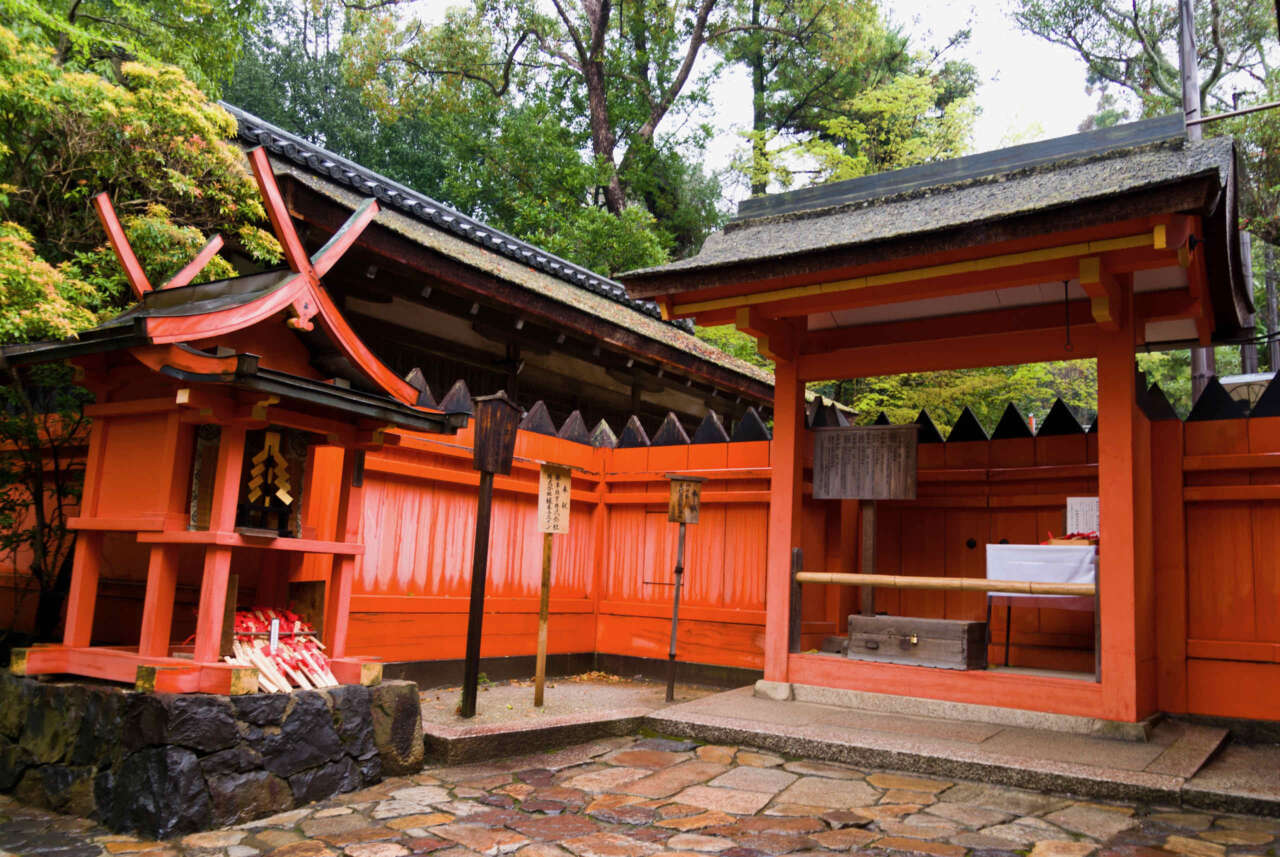
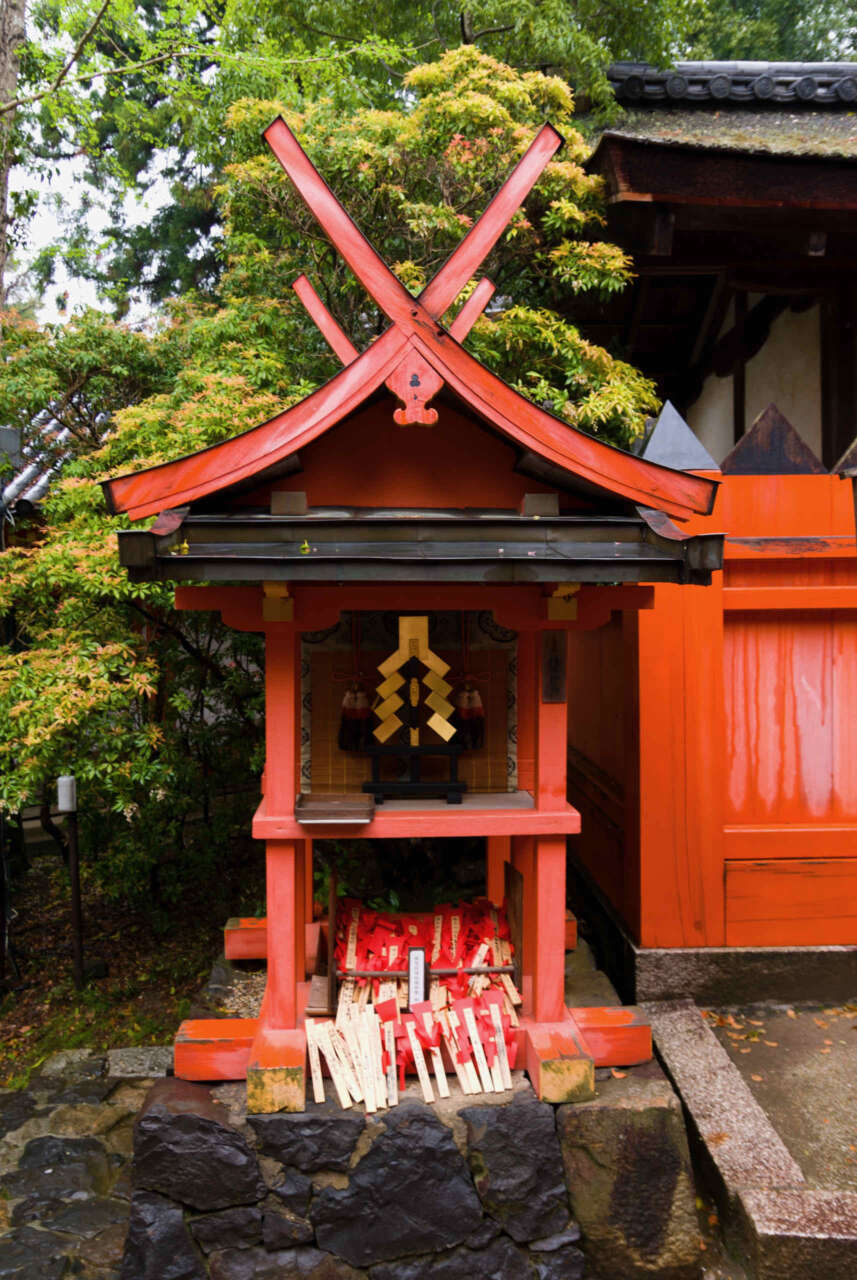
This is the Taga shrine, which is integrated to a lovely tree, next to the Naishimon gate.
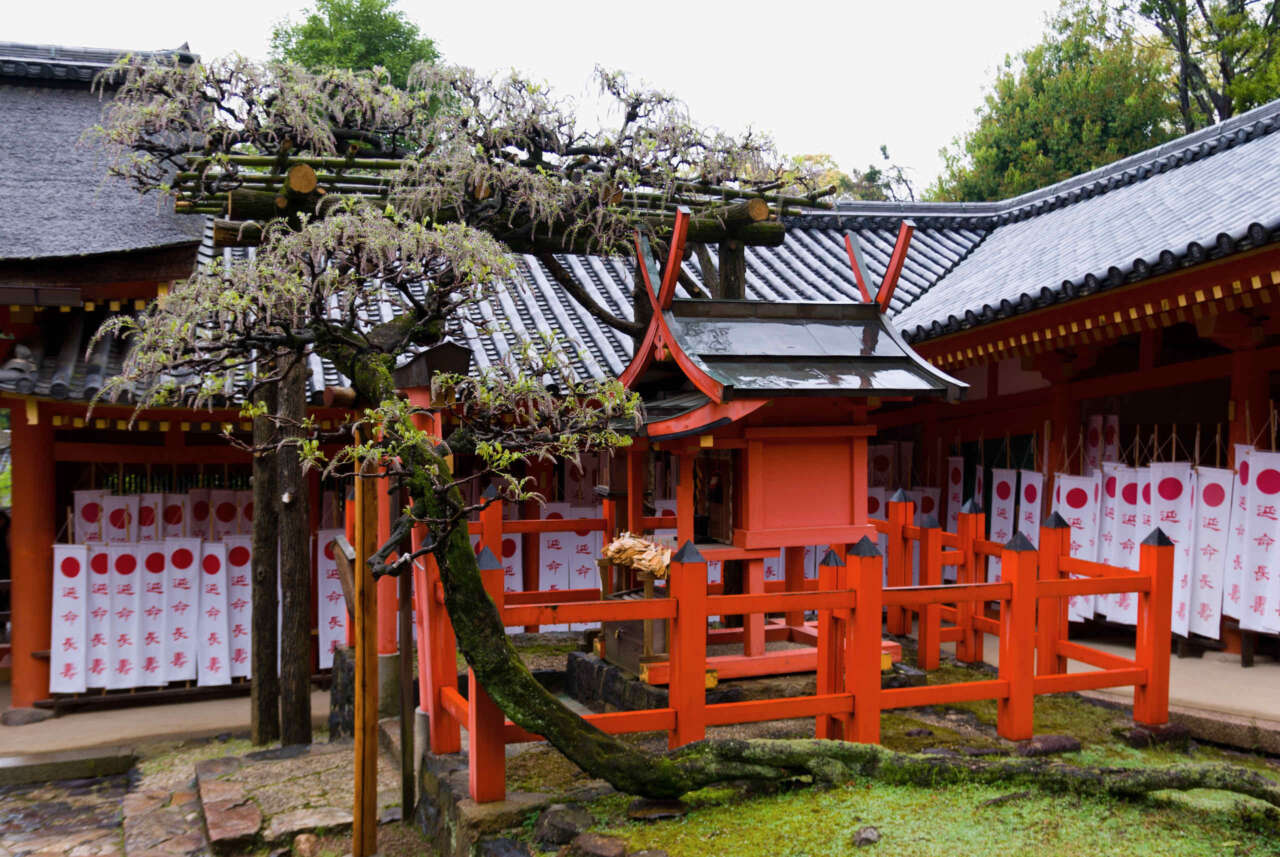
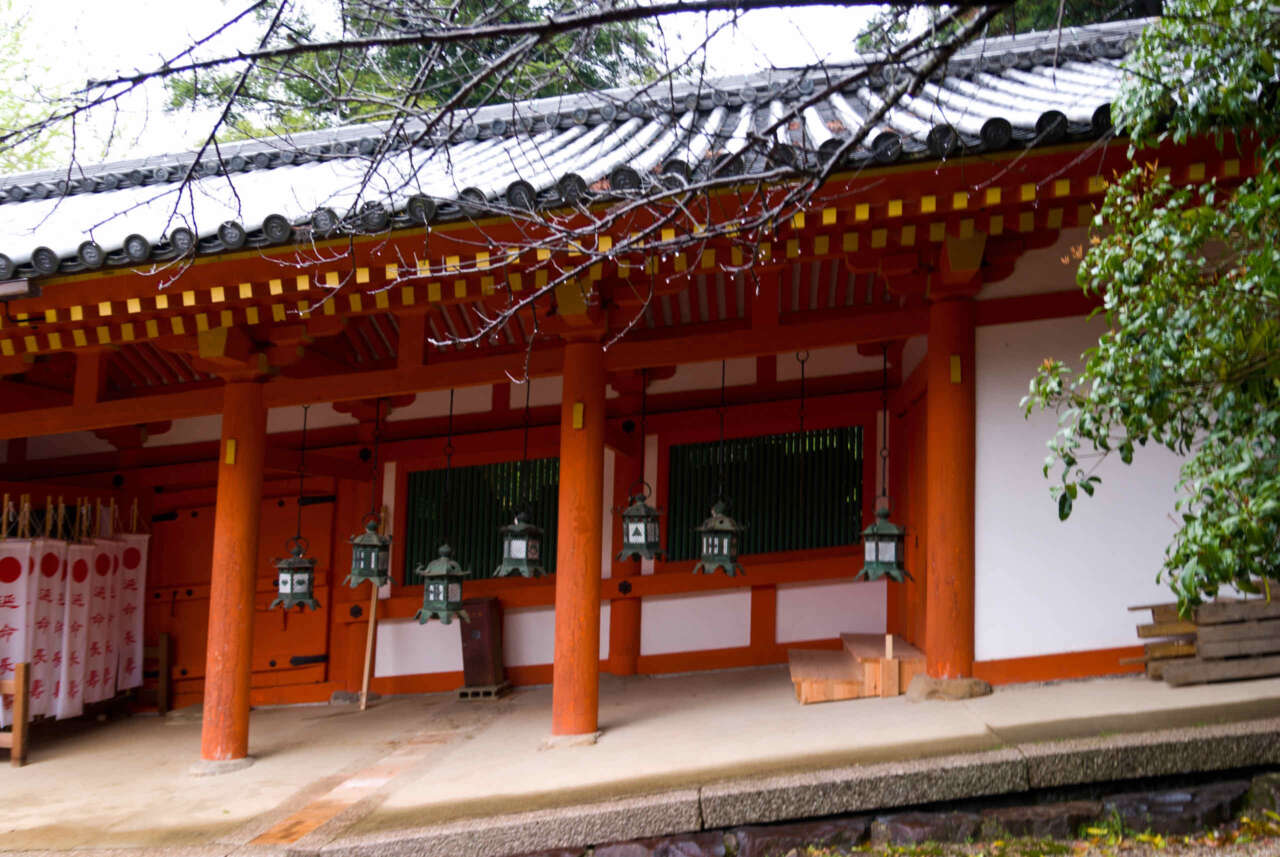
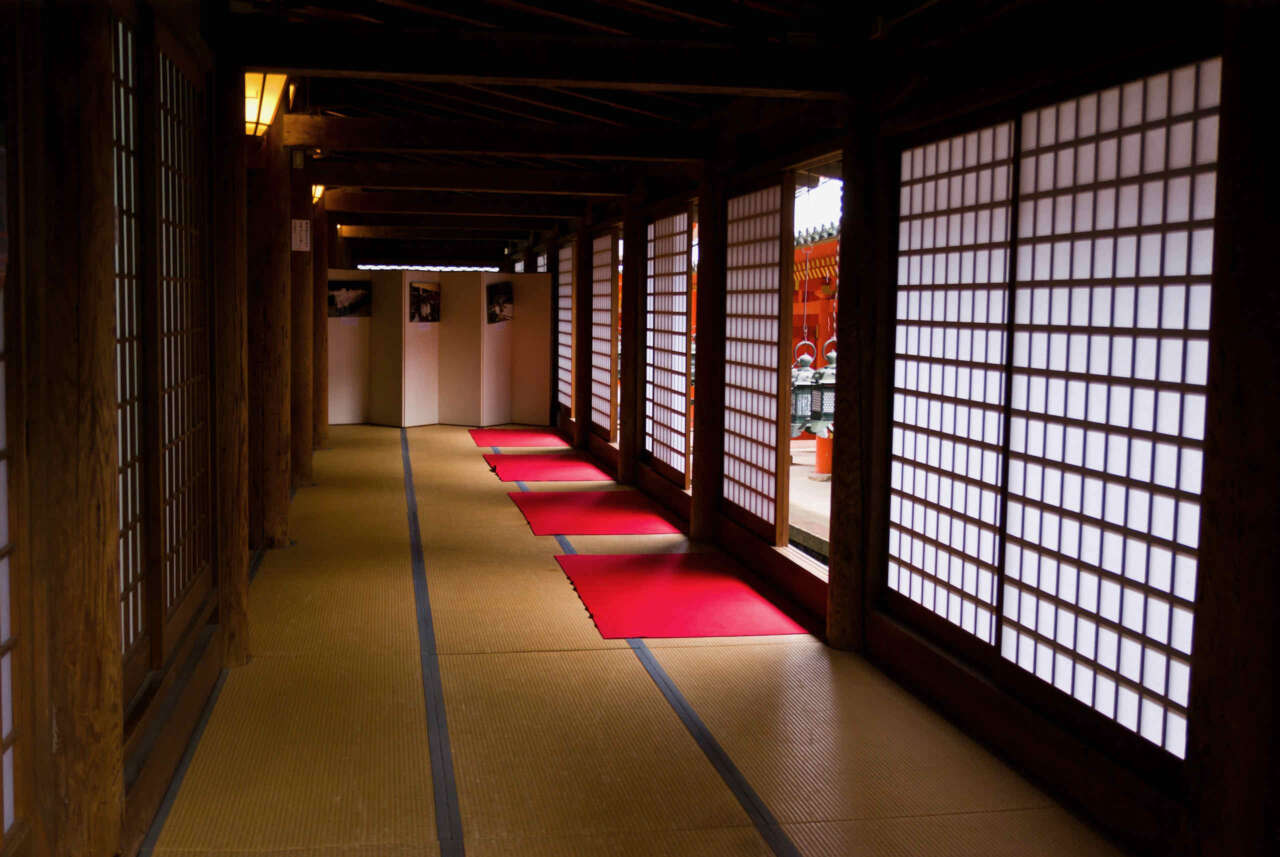
Inside the Naishiden Hall. Naishiden was once a building for the “naishi” court ladies who served in the shrine.
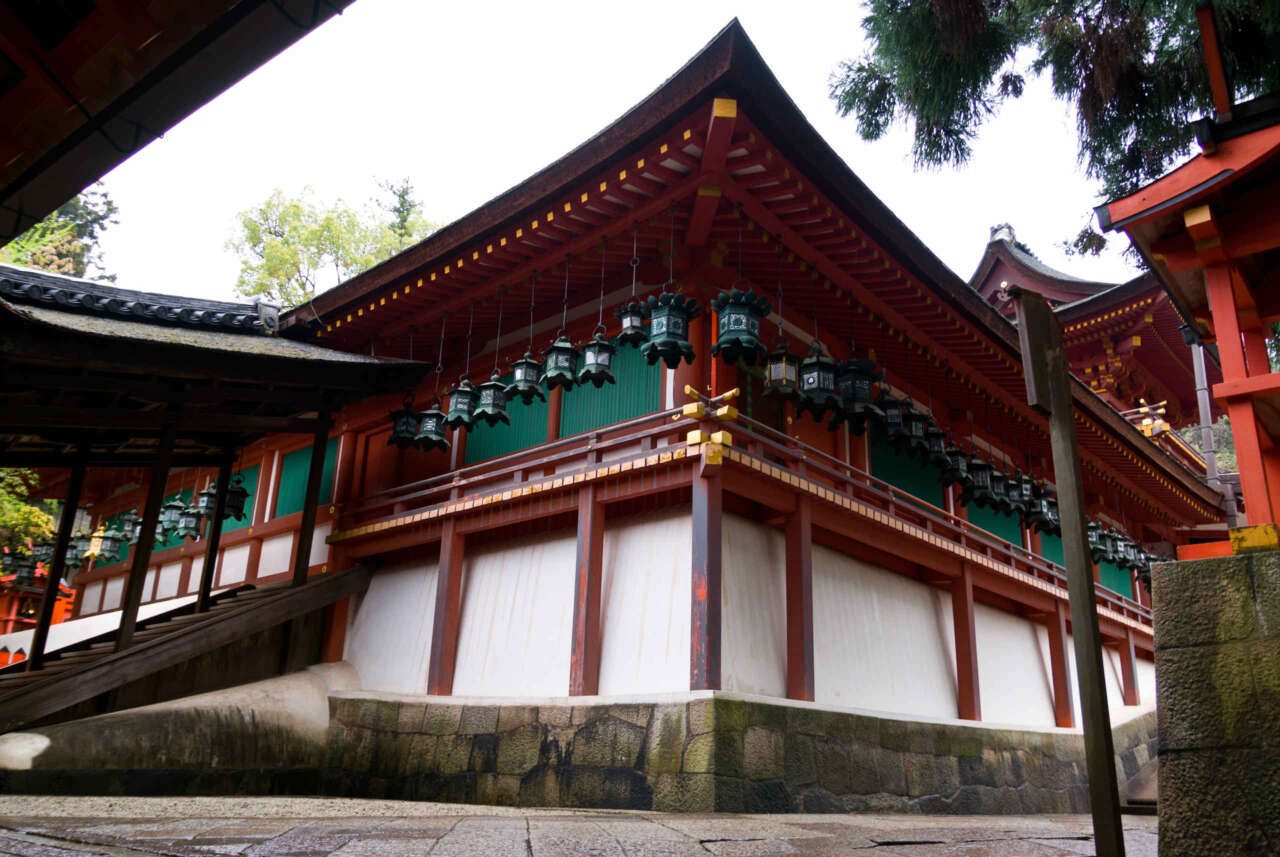
The Nejiro steps, connecting Naishiden Hall and Oro (Open Veranda). They used to be called “Noboriro”.
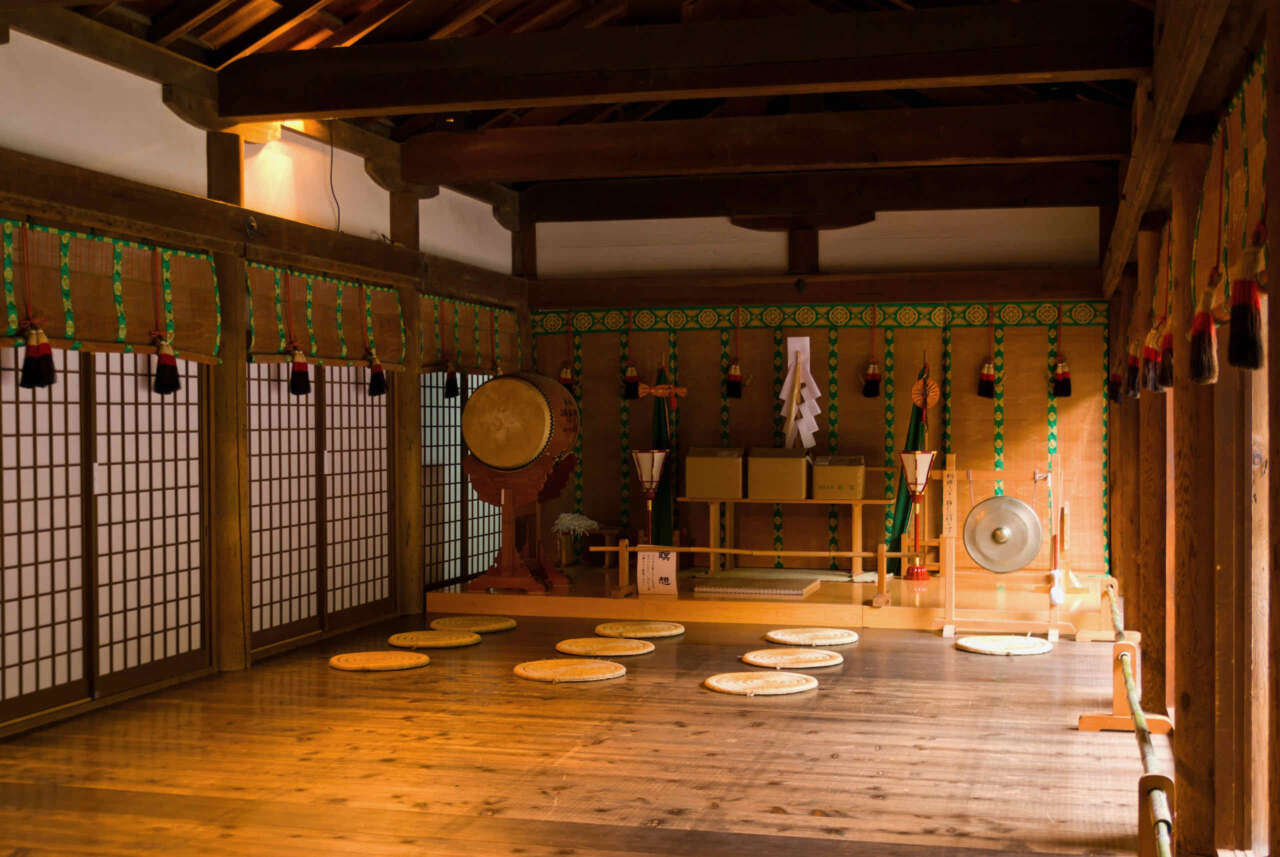
Inside the Naoraiden, where the “Naorai” ceremony for imperial representatives is held during the Kasuga Festival.
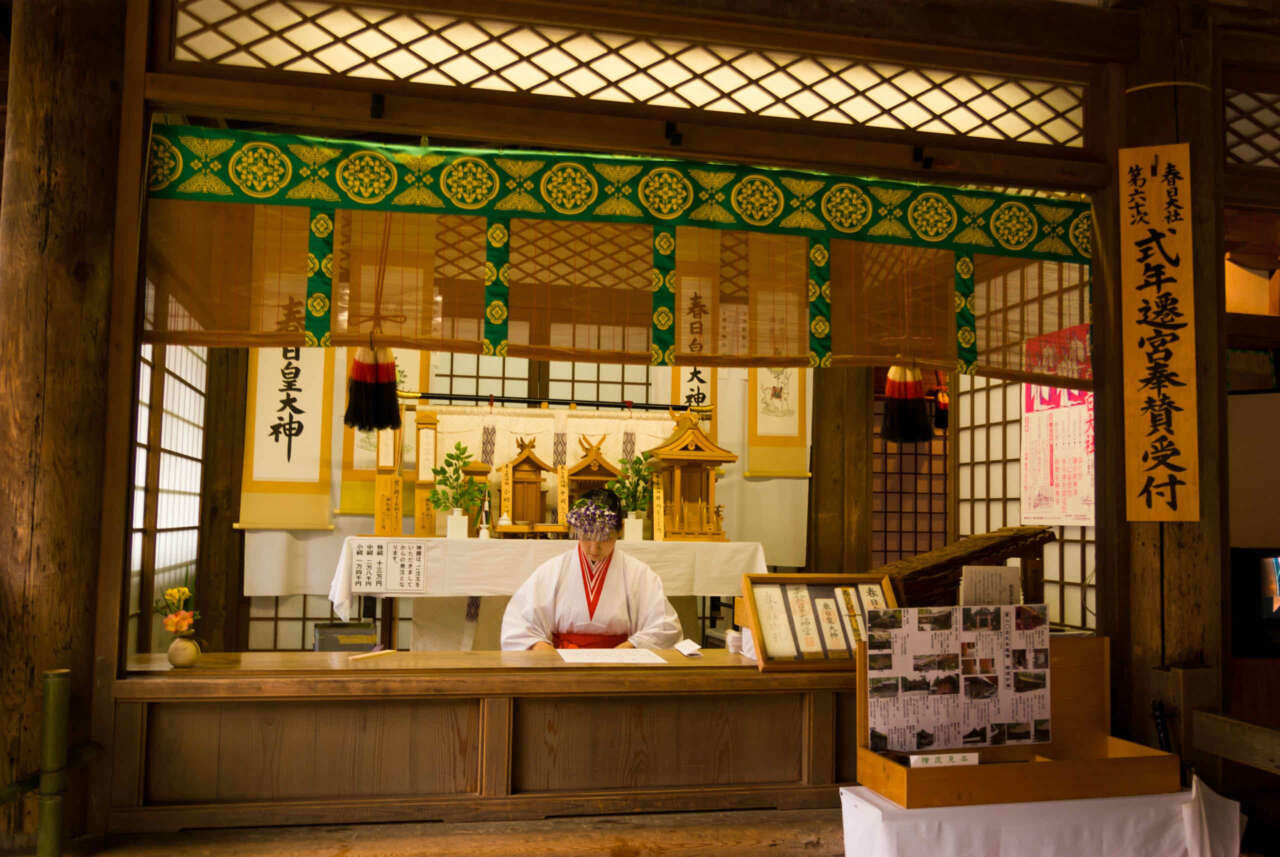
A woman doing calligraphy.
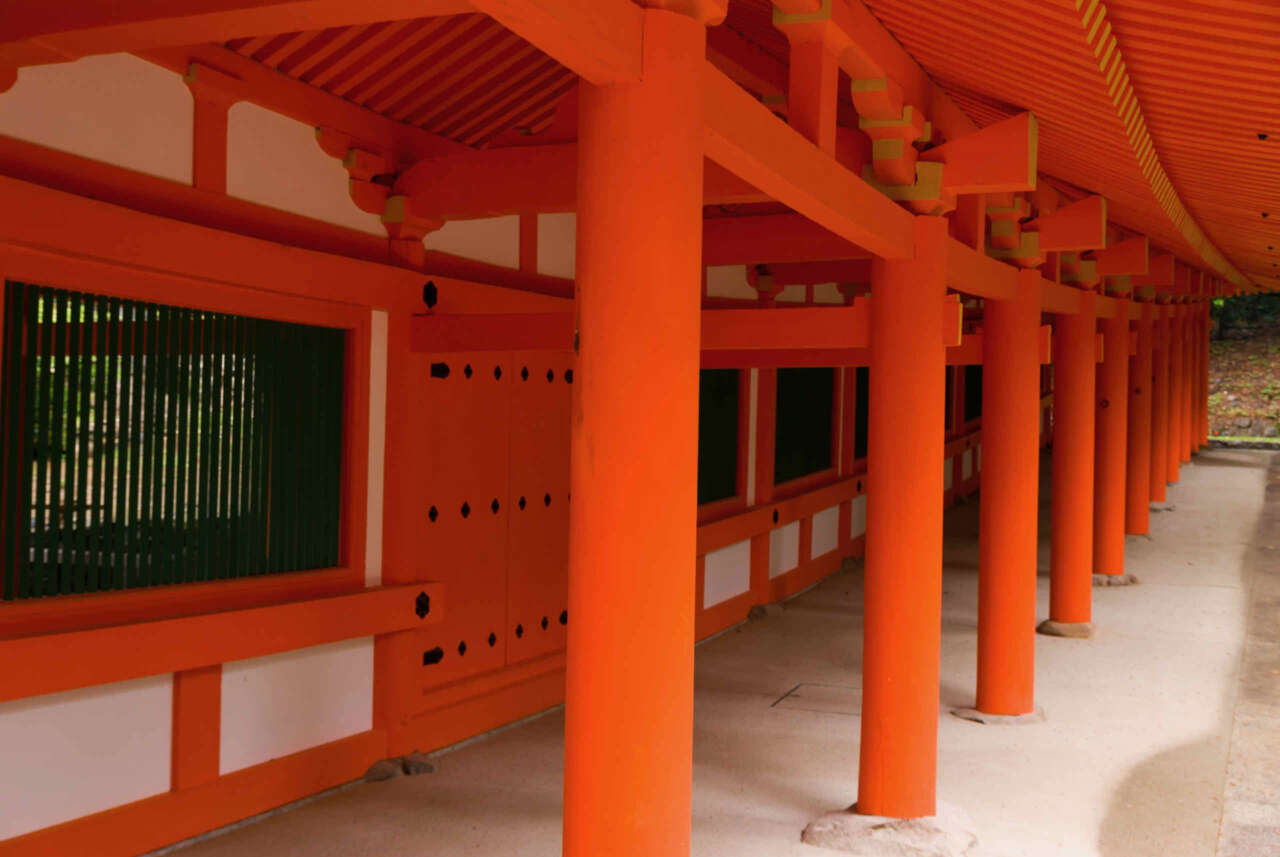
The South Cloister.
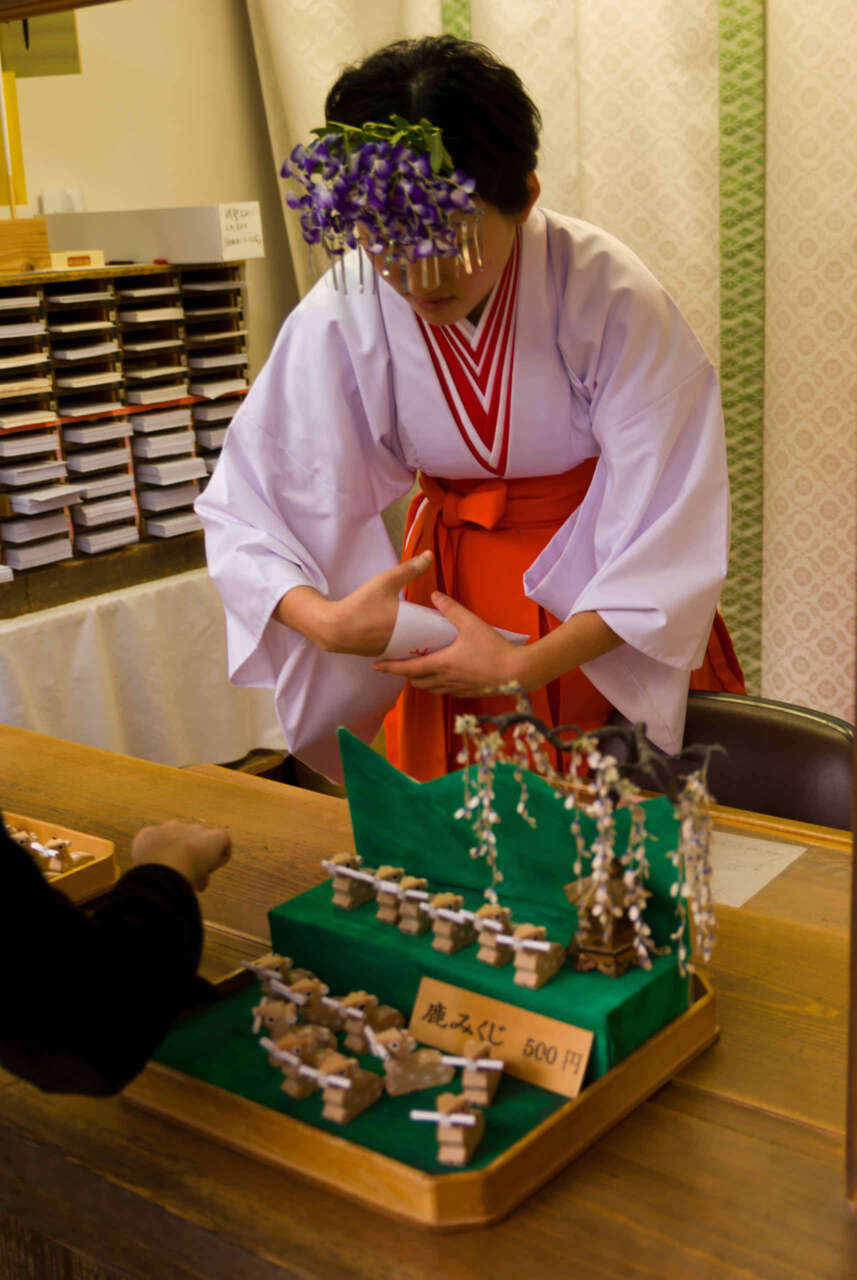
You can also buy deer fortunes here (鹿みくじ).
The majestic South Gate (Nandaimon):
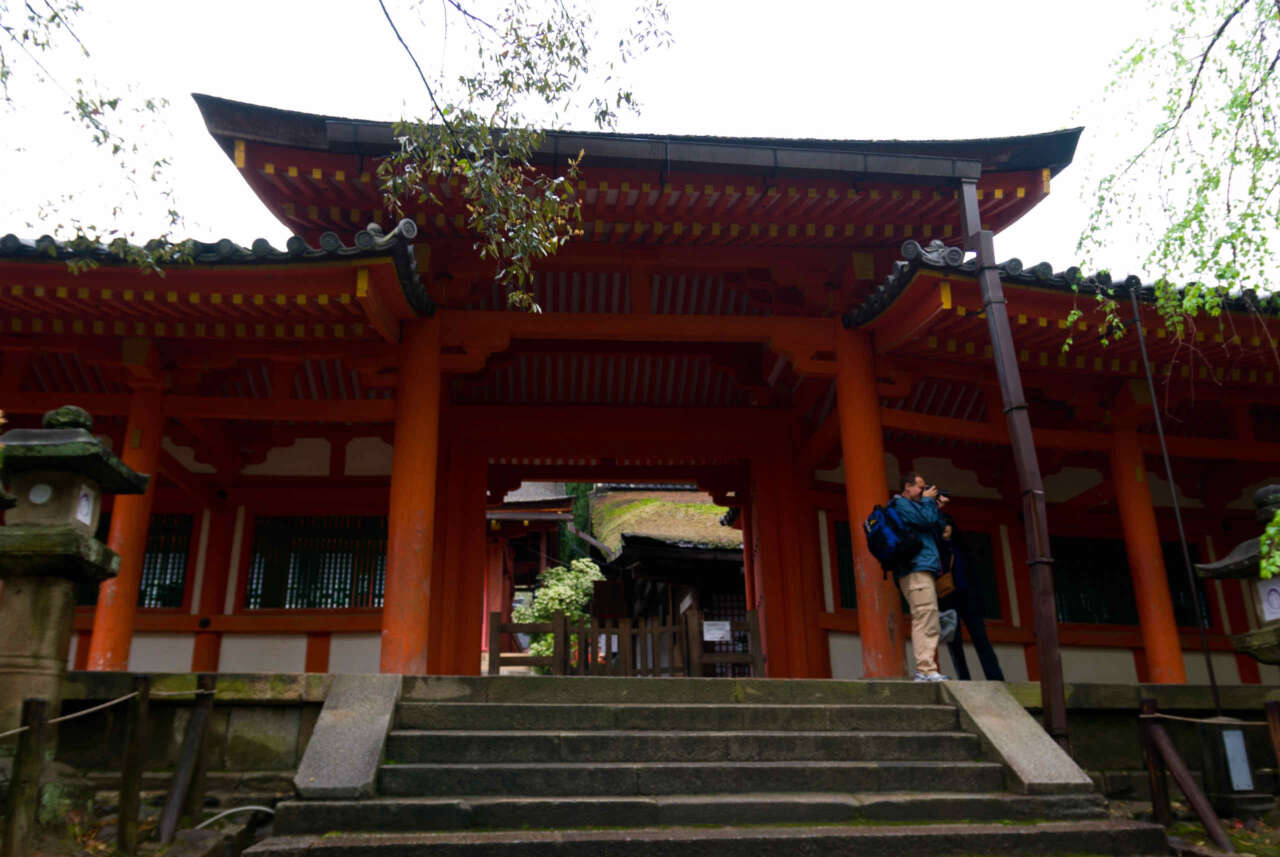
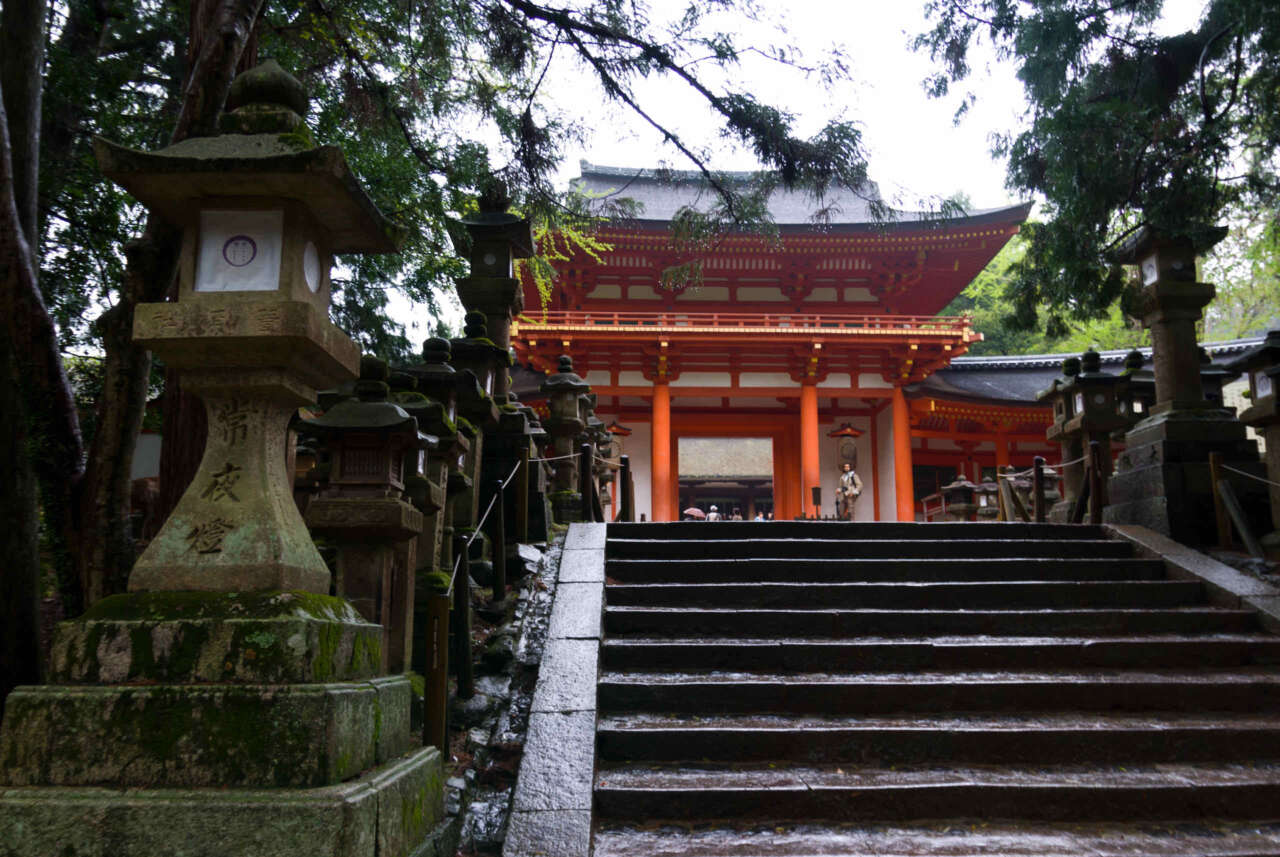
Further South from the South Gate is are paths full of stone lanterns and no less than 12 shrines representing ancestors of the Fujiwara family. These stone lanterns are called Oaigatadourou (御間型灯籠). And the path through them is called Oaimichi (御間道).
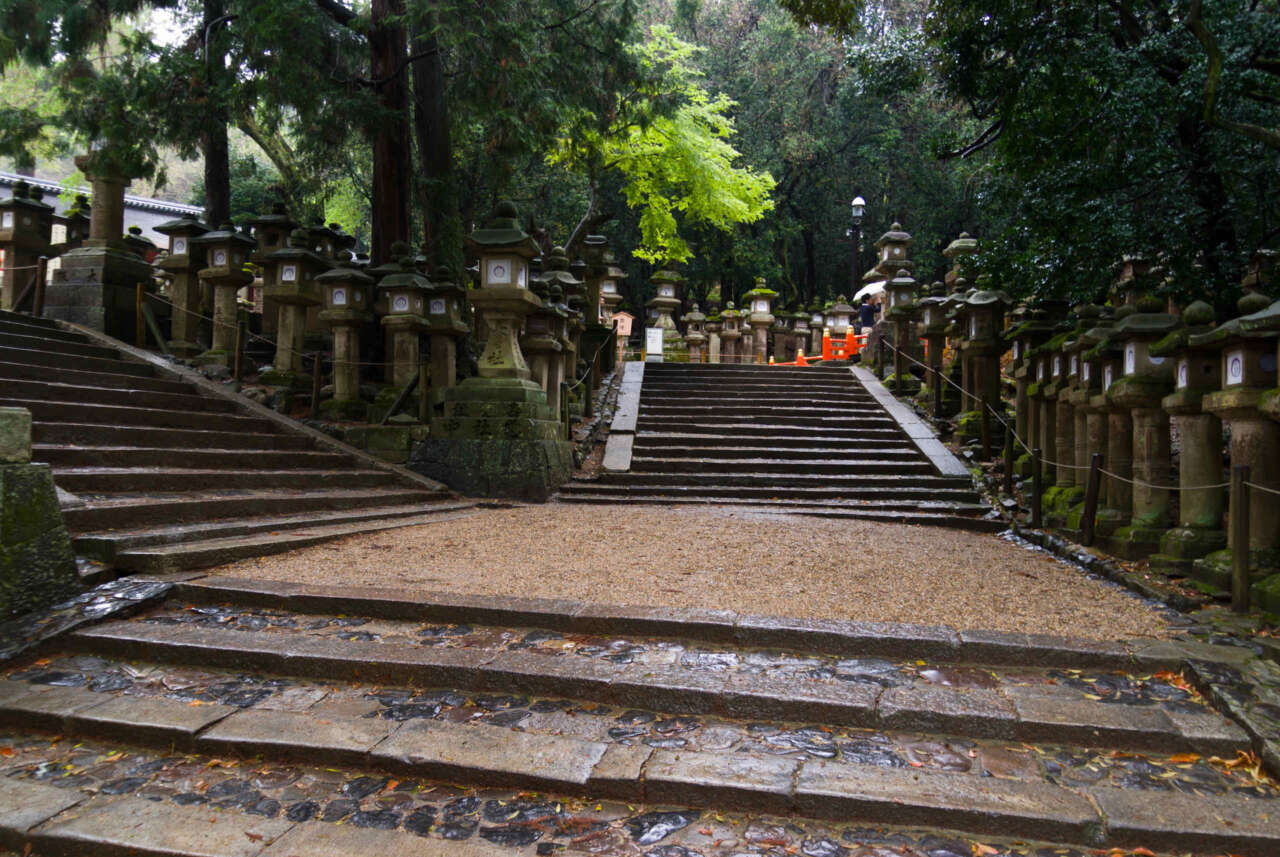
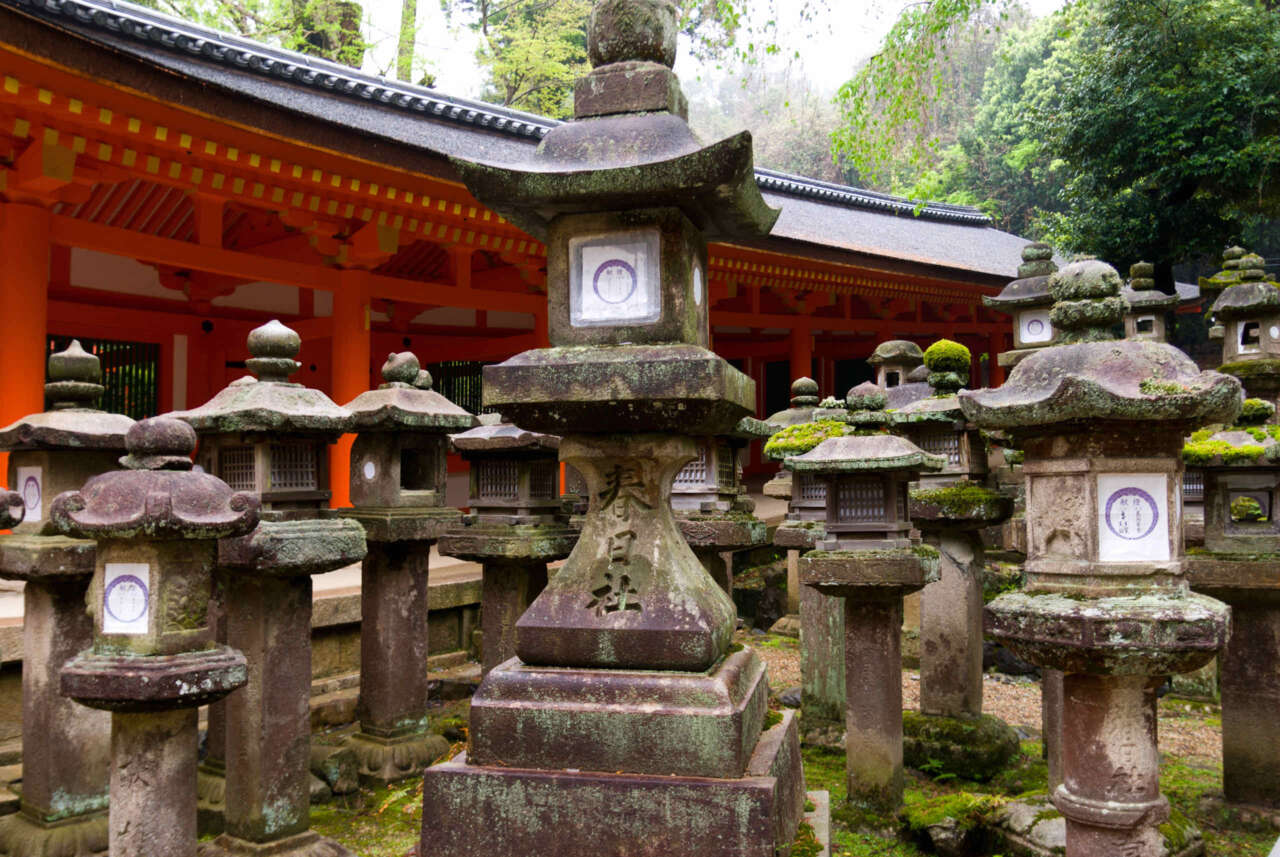
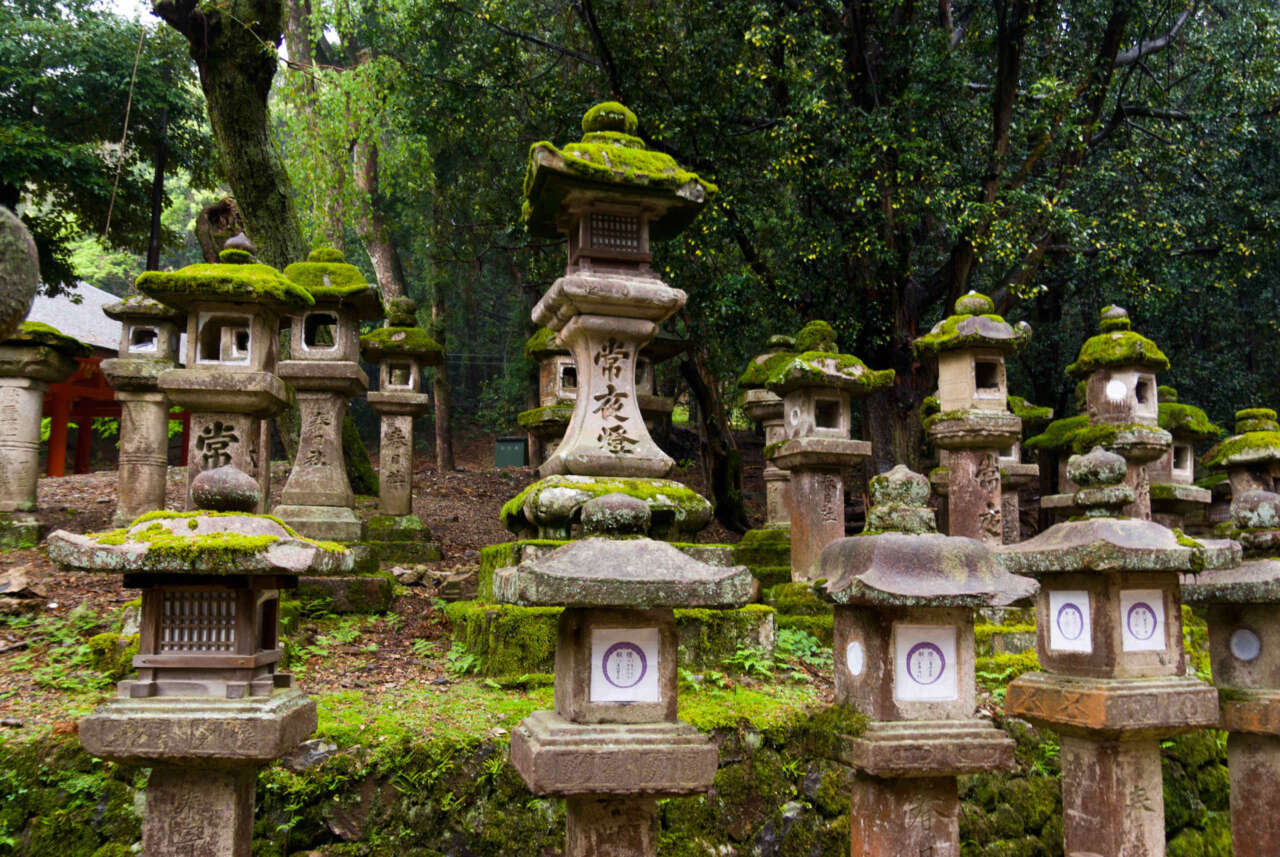
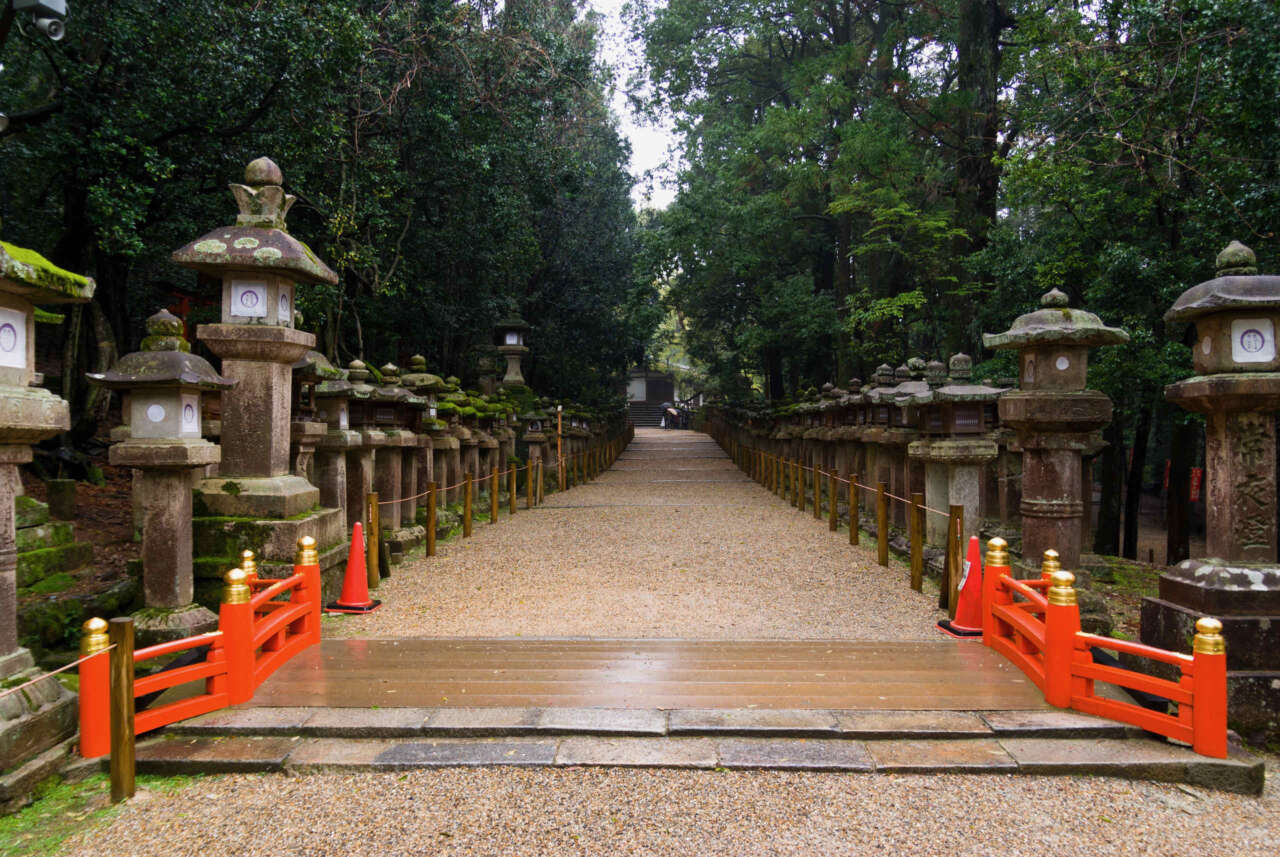
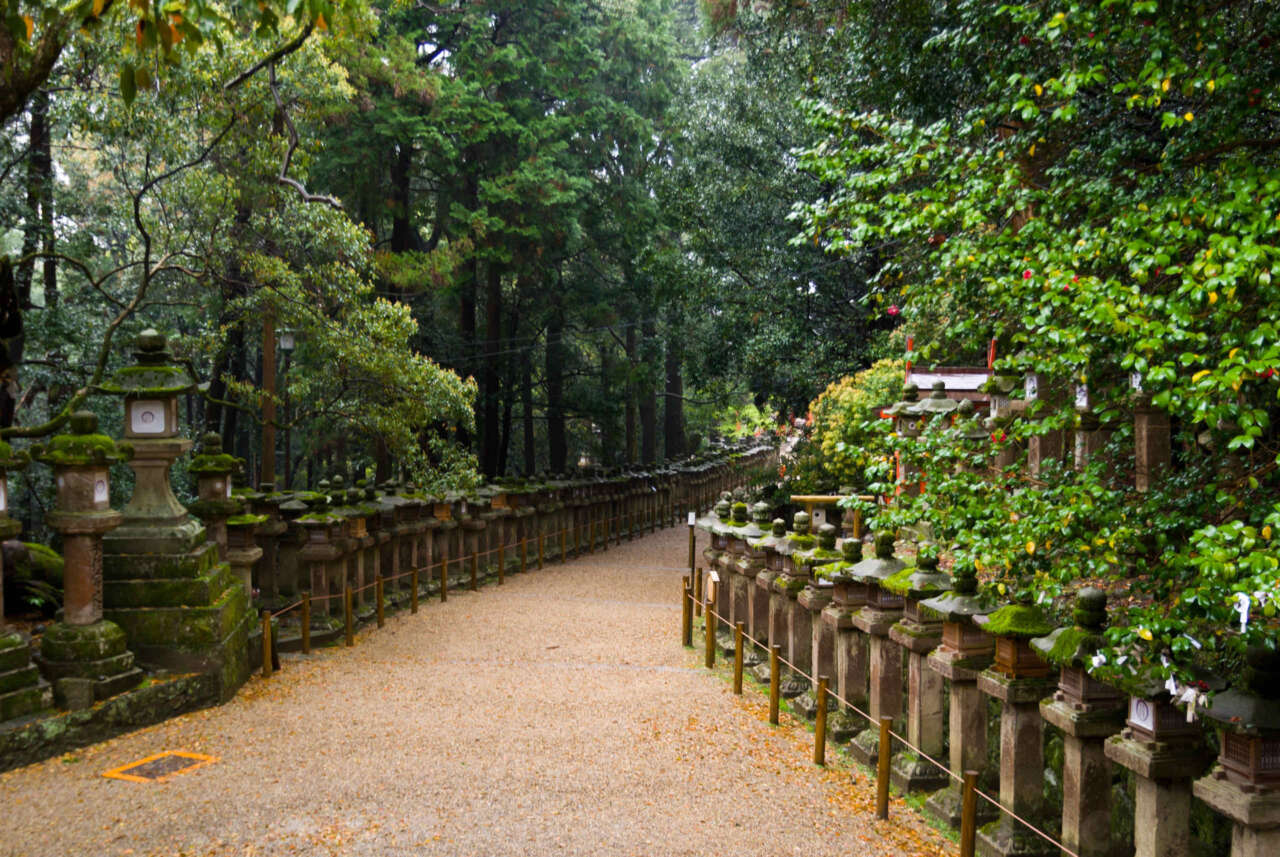
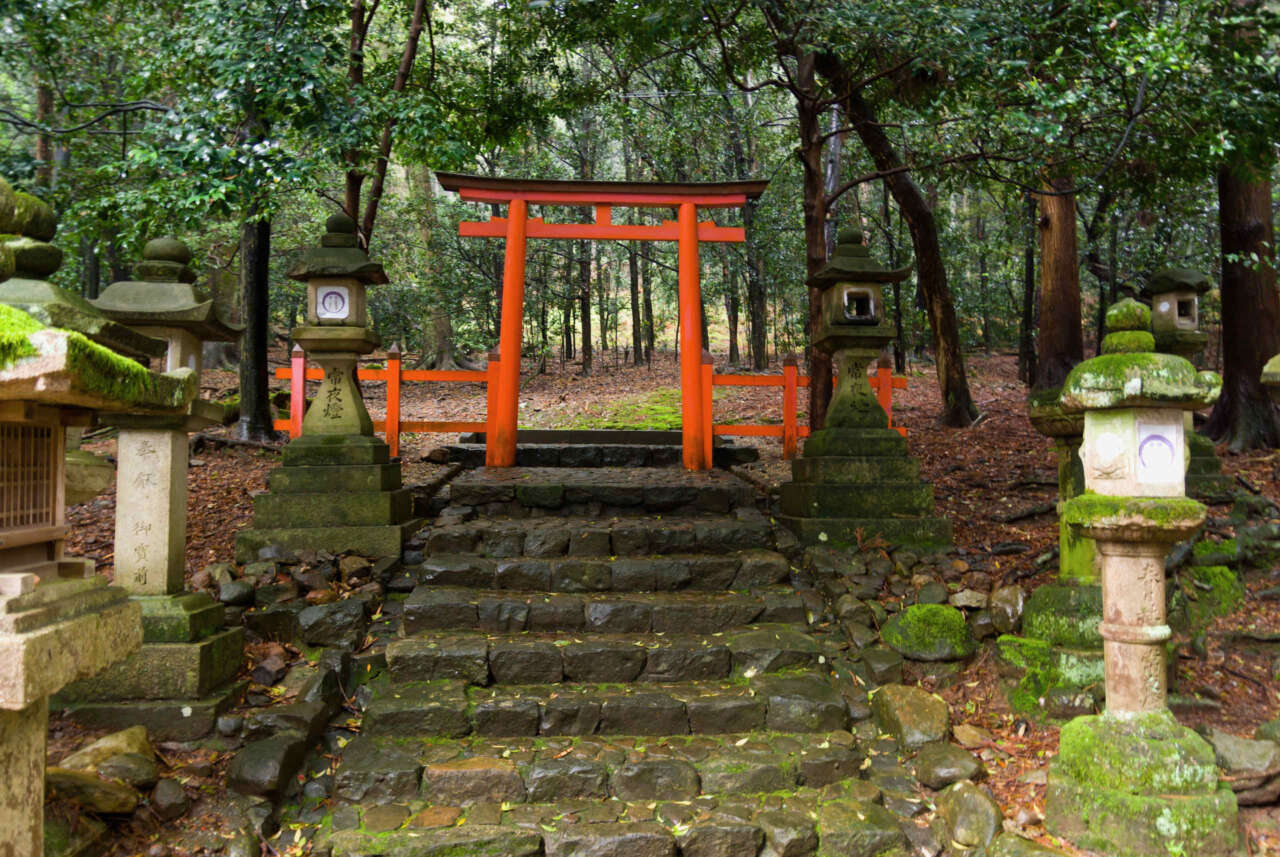
The first of the 12 shrines – Honguujinjayouhaisho (本宮神社遙拝所).
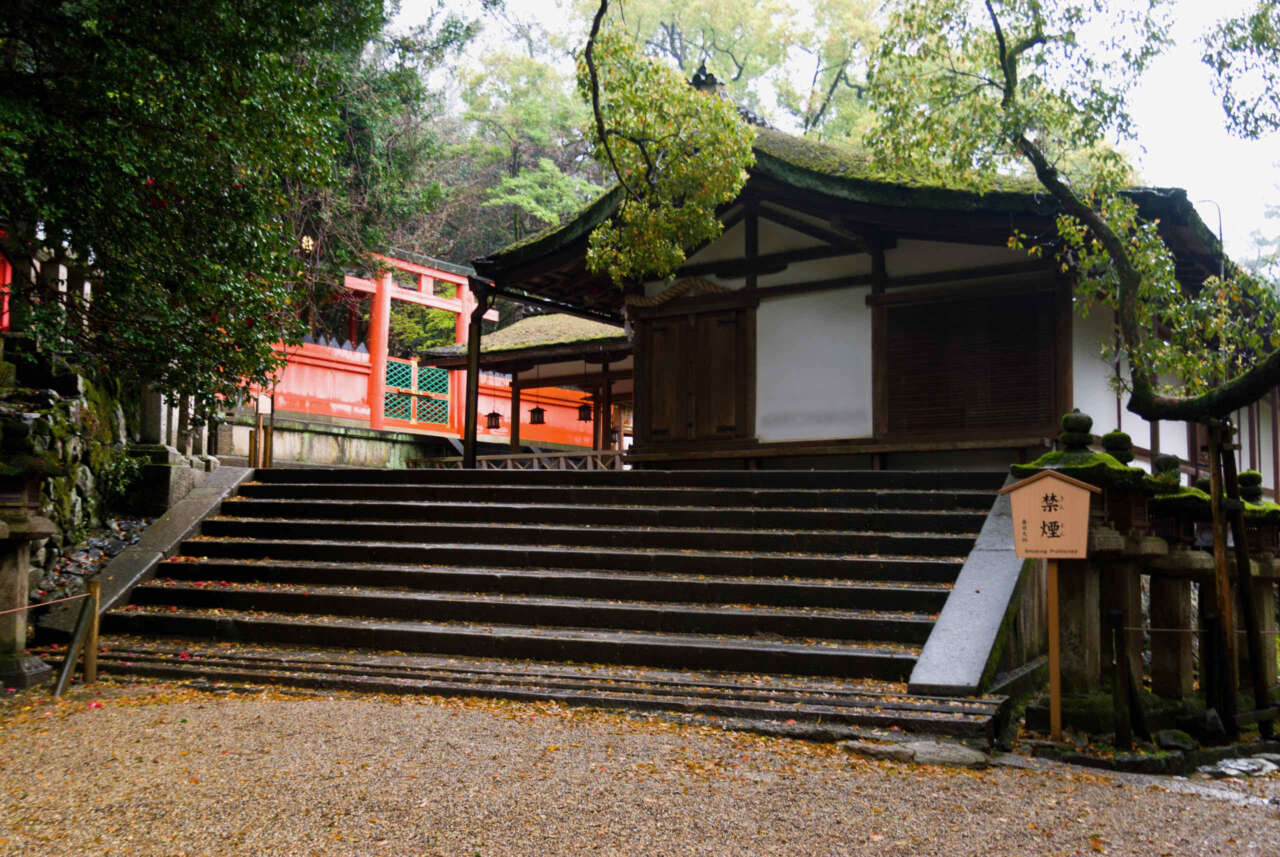
The Wakamiya Shrine (若宮神社).
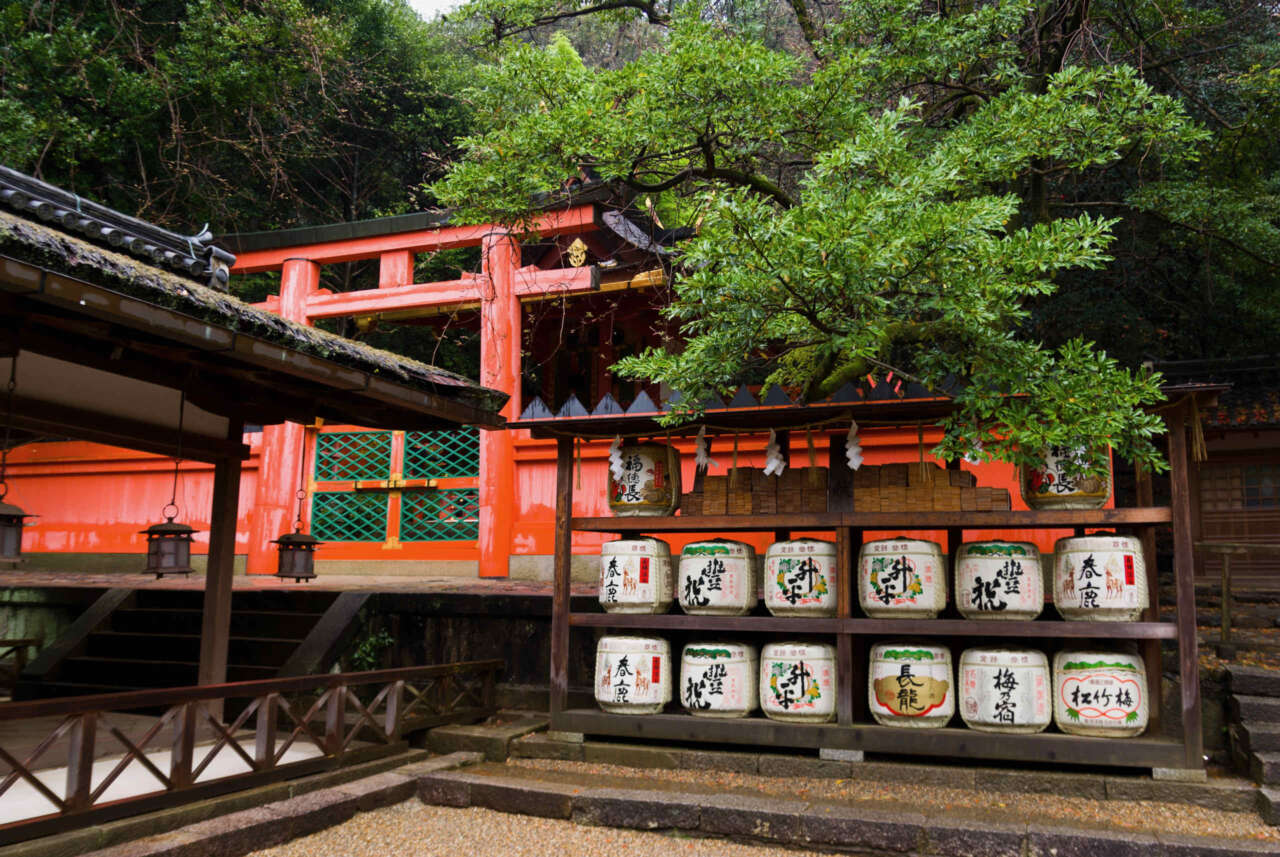
Sake barrels.
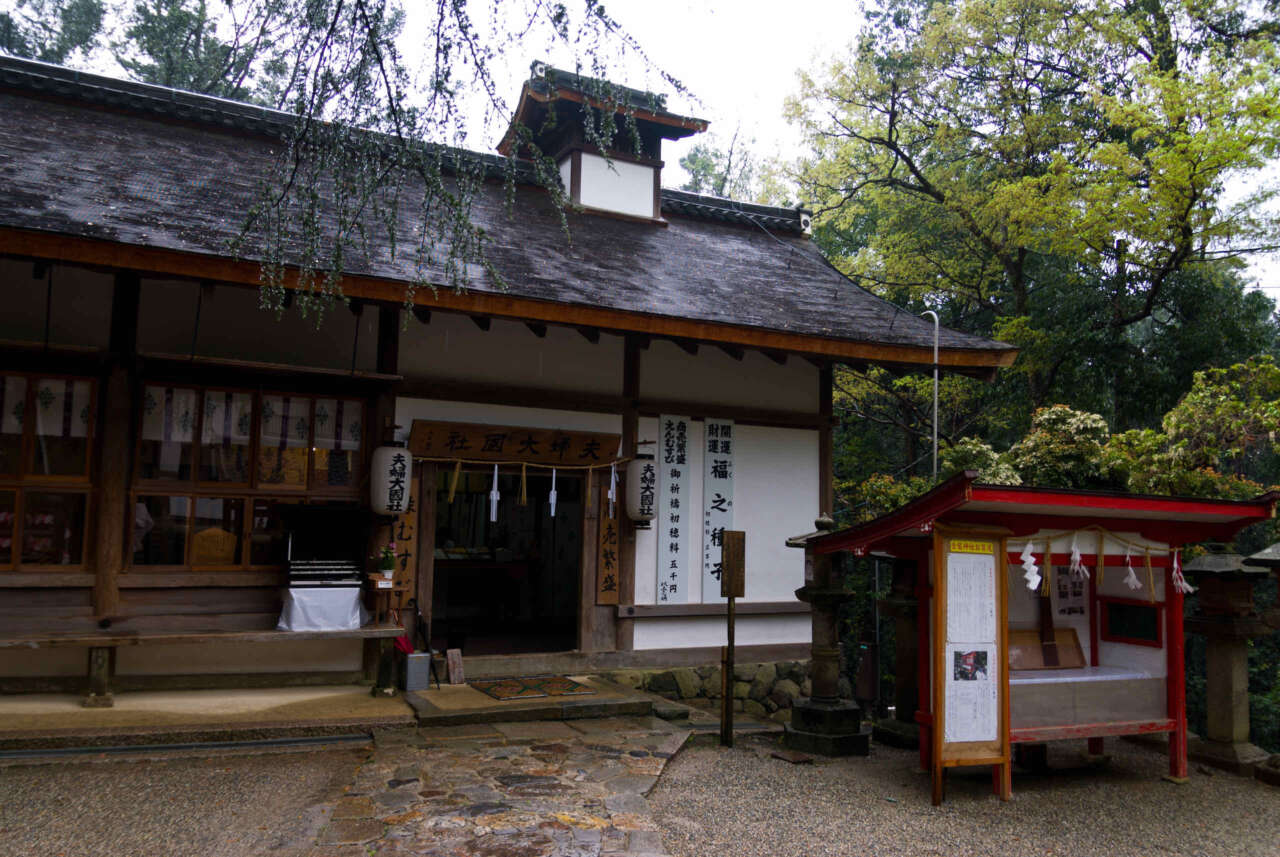
The Meotodaikokusha (夫婦大國社).
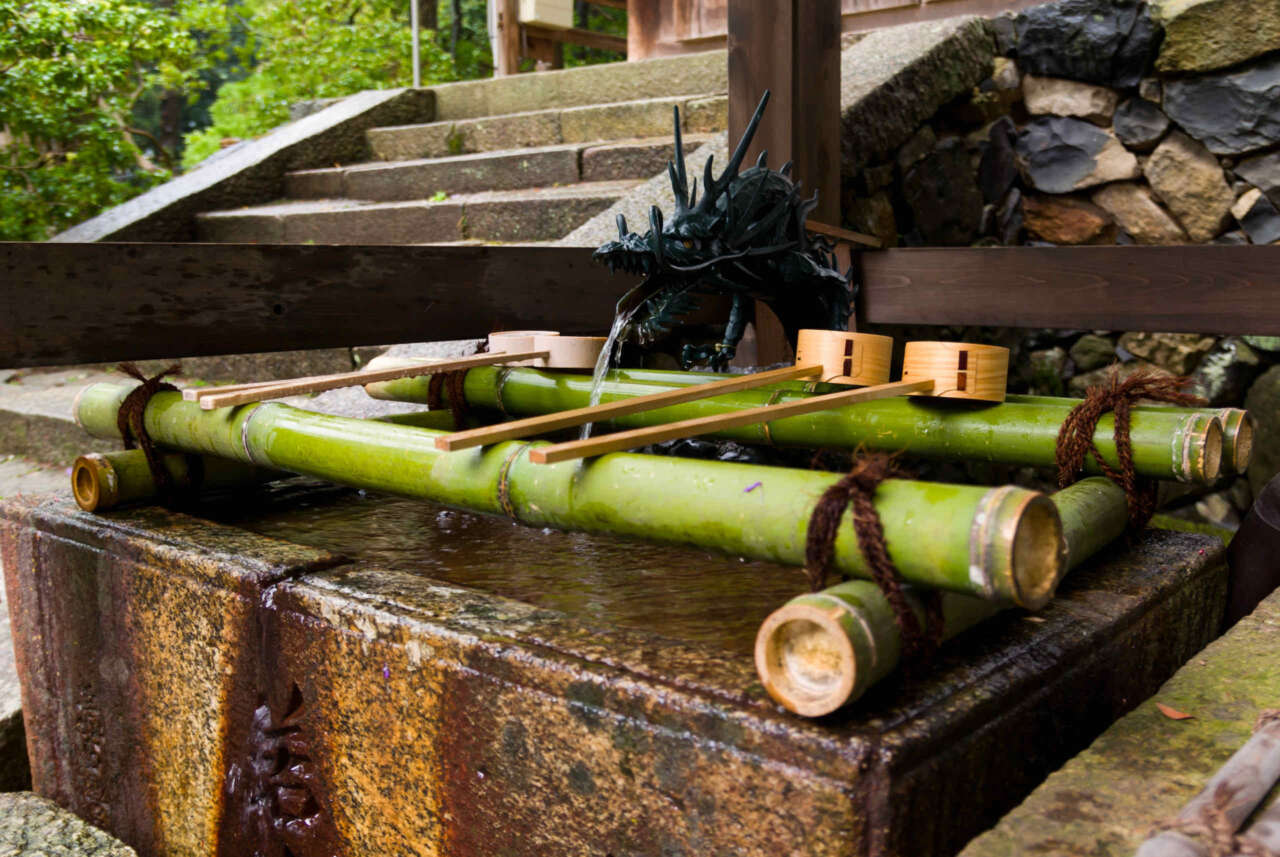
Water tower.
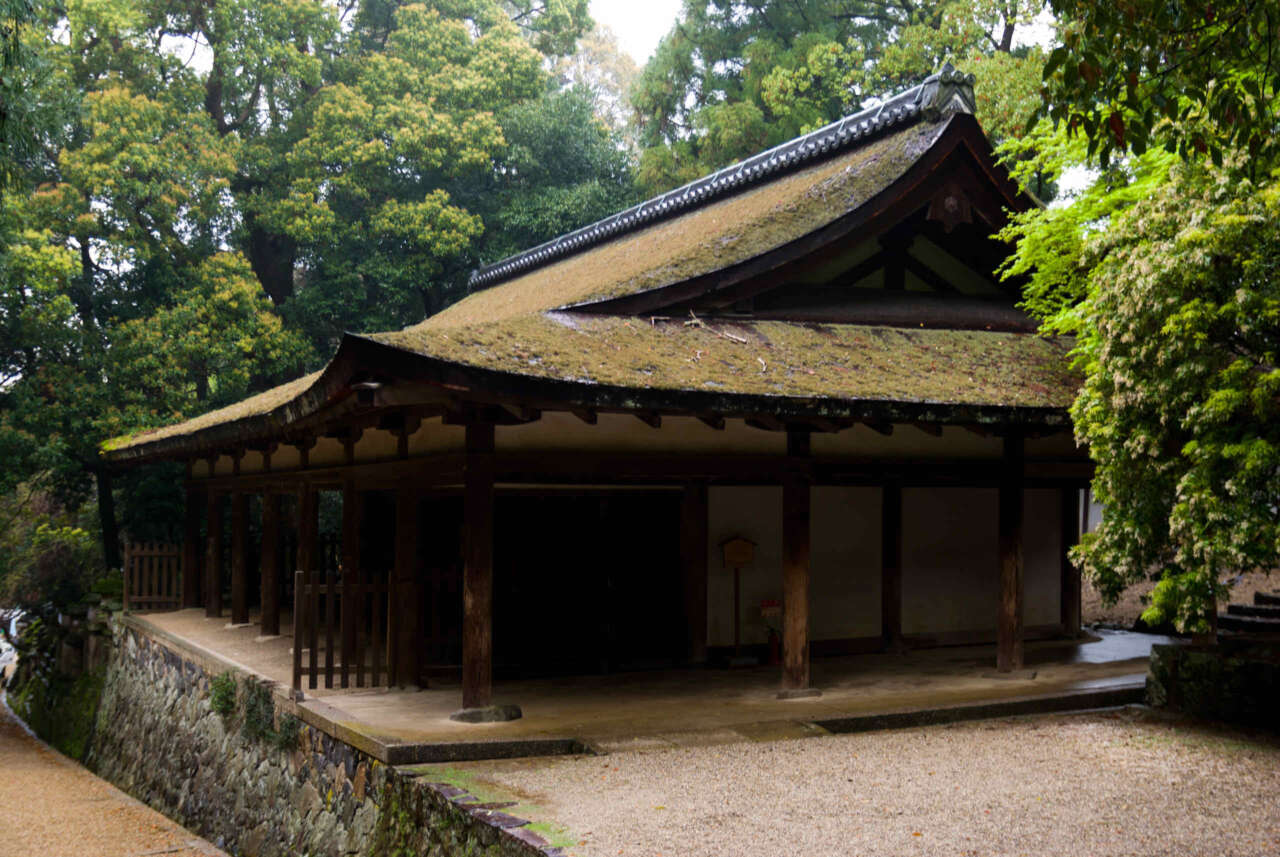
Kaguraden (stage).
The Kiijinja (紀伊神社).
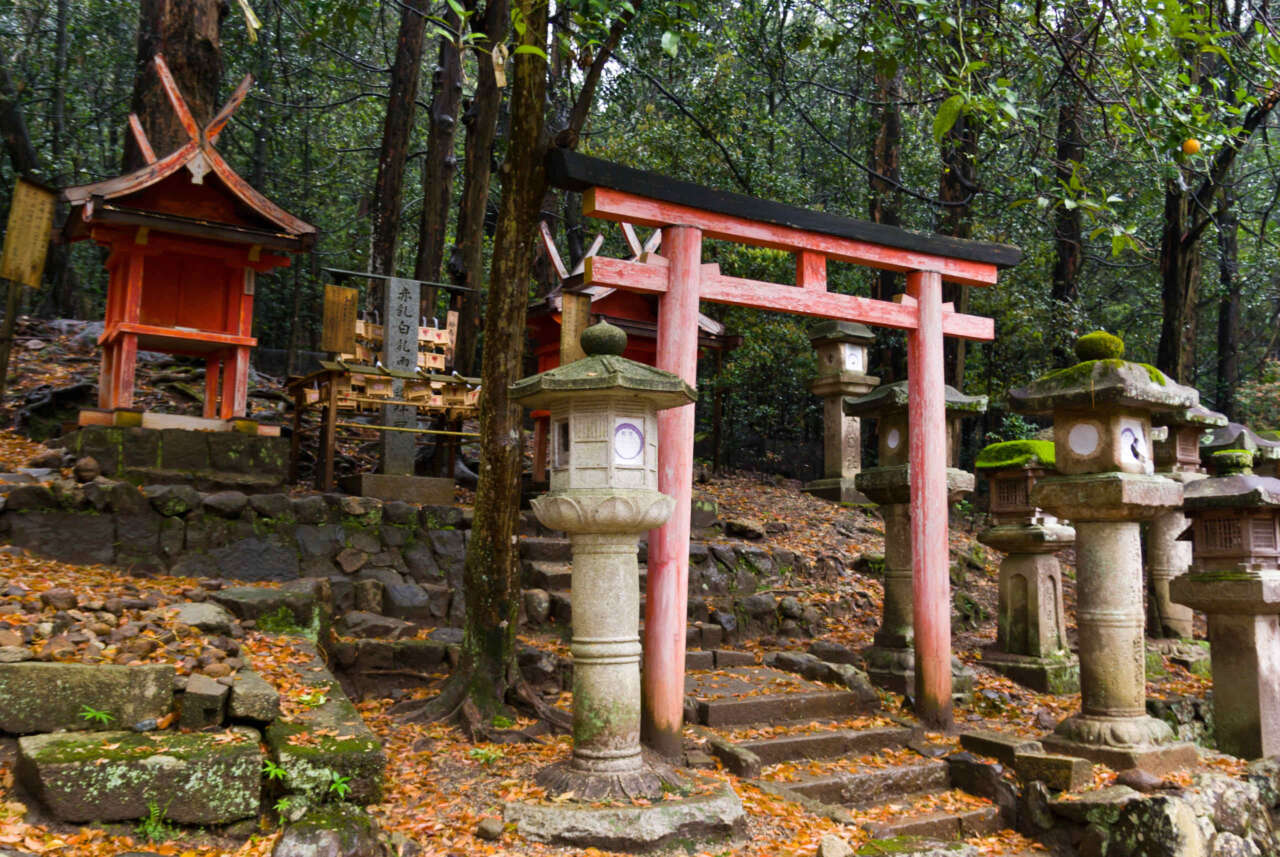
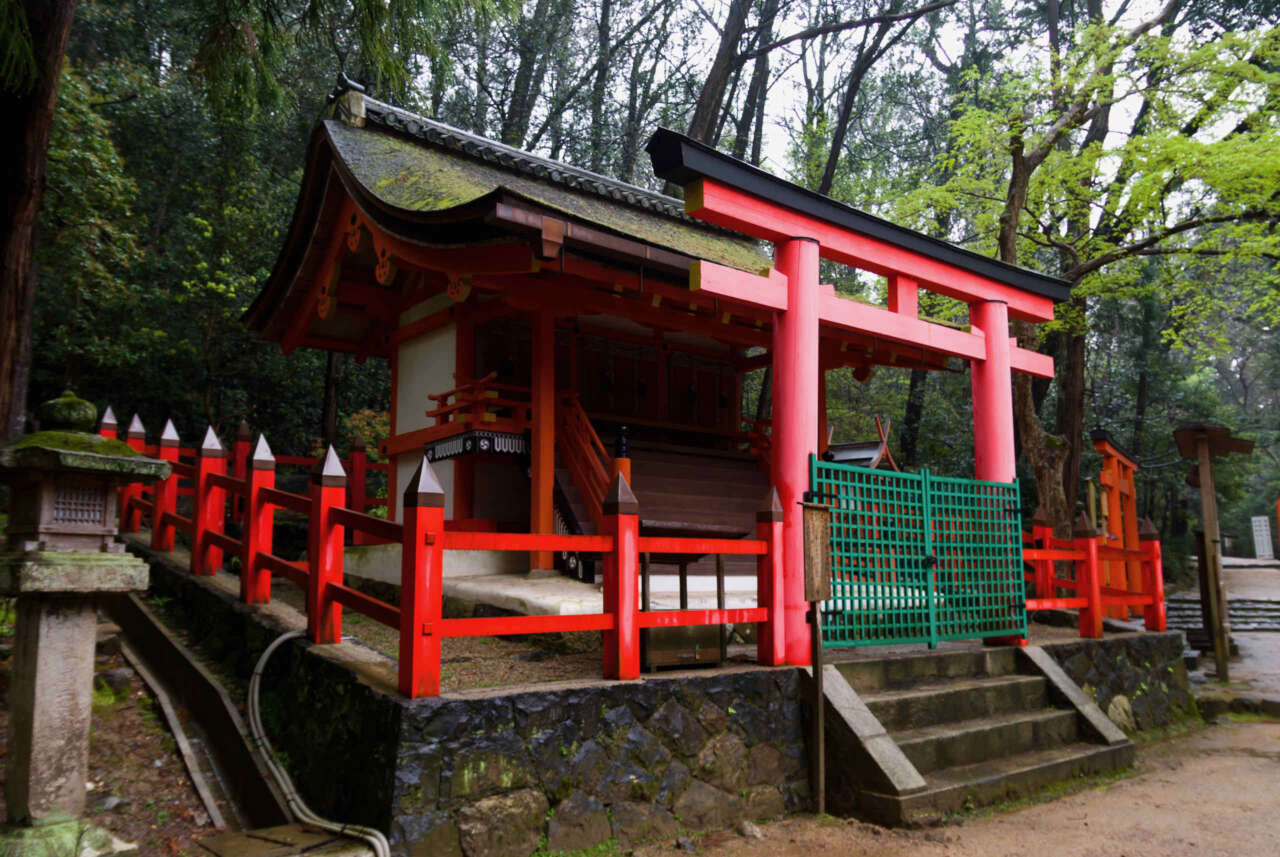
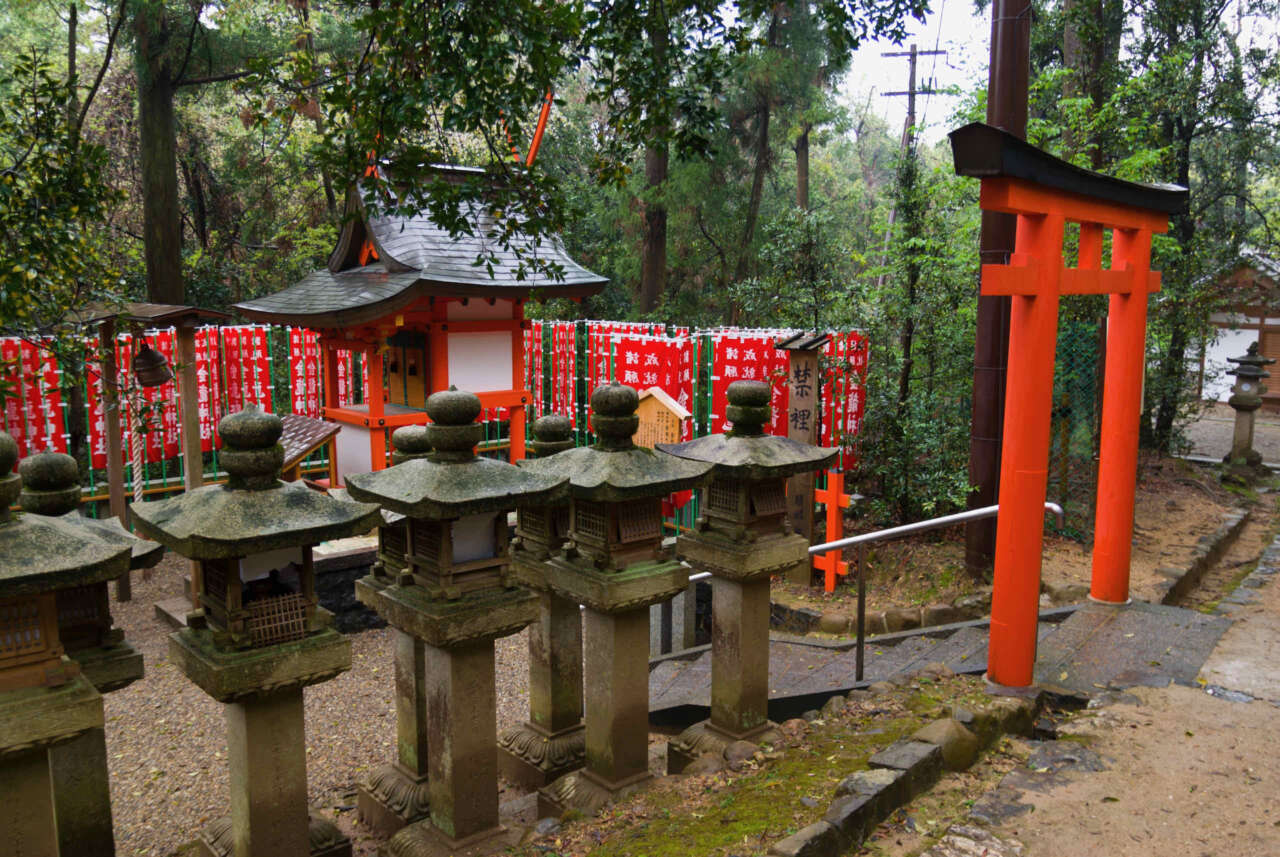
Leaving the shrine, we passed through a sacred tree Ookusu (大楠), small stream, and saw a rickshaw. We really would have loved to be on a rickshaw all the way back to Nara Station, as we were so tired, but we ended up walking all the way.
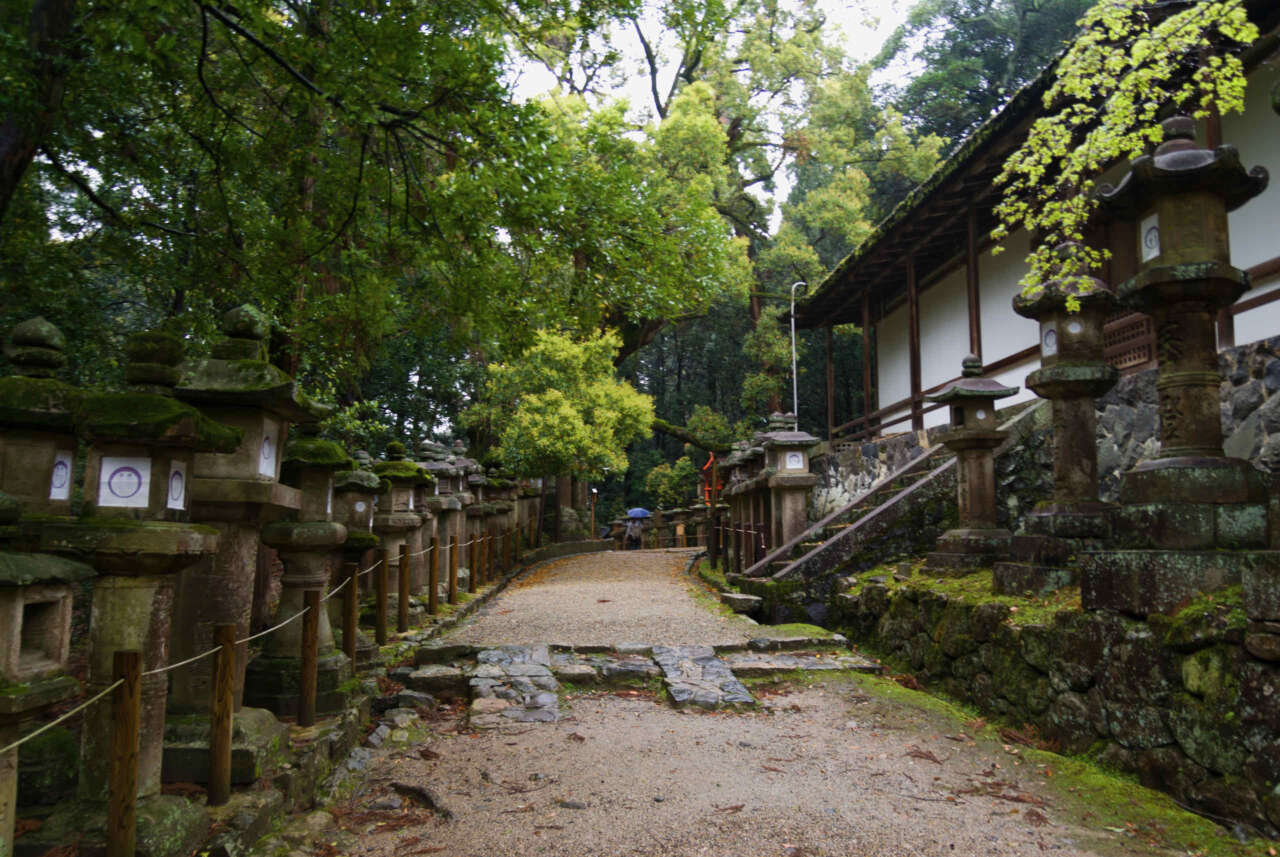
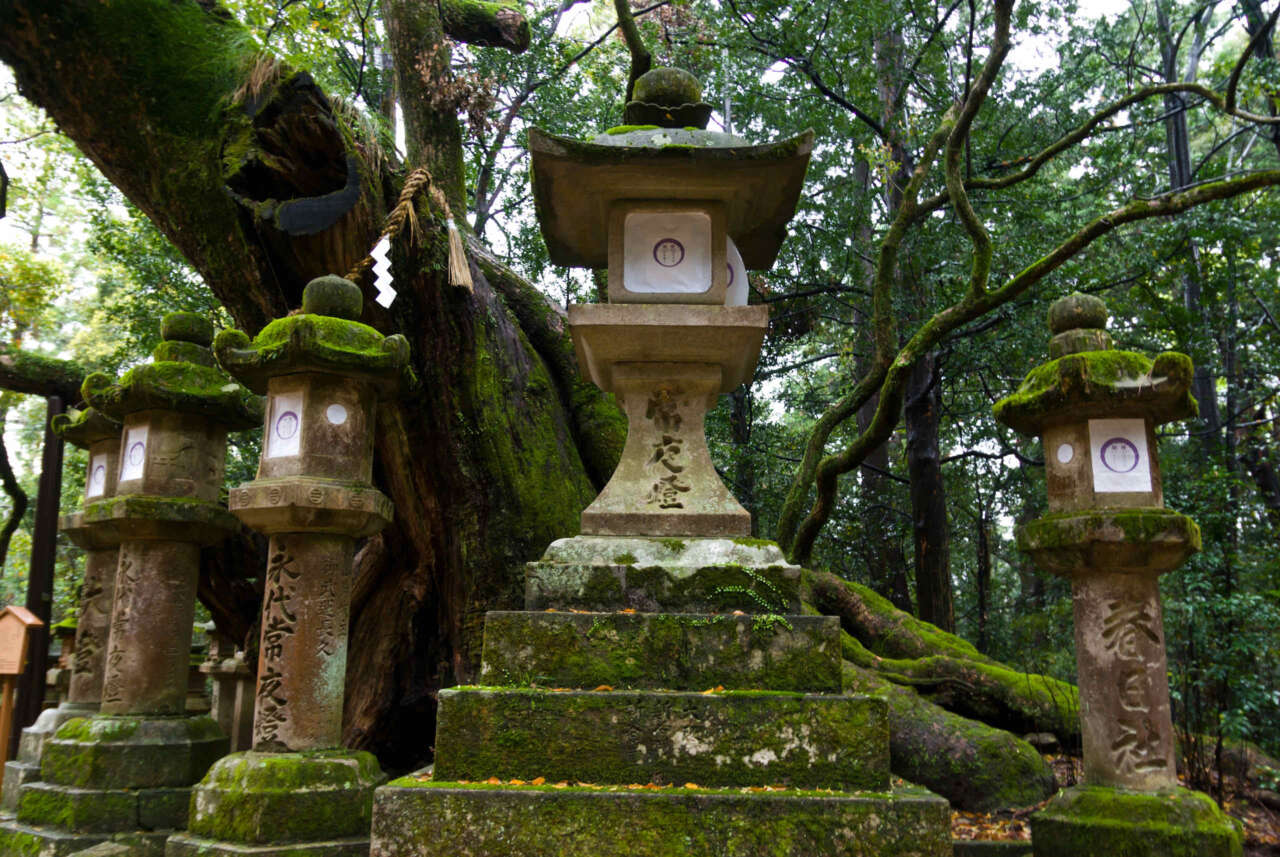
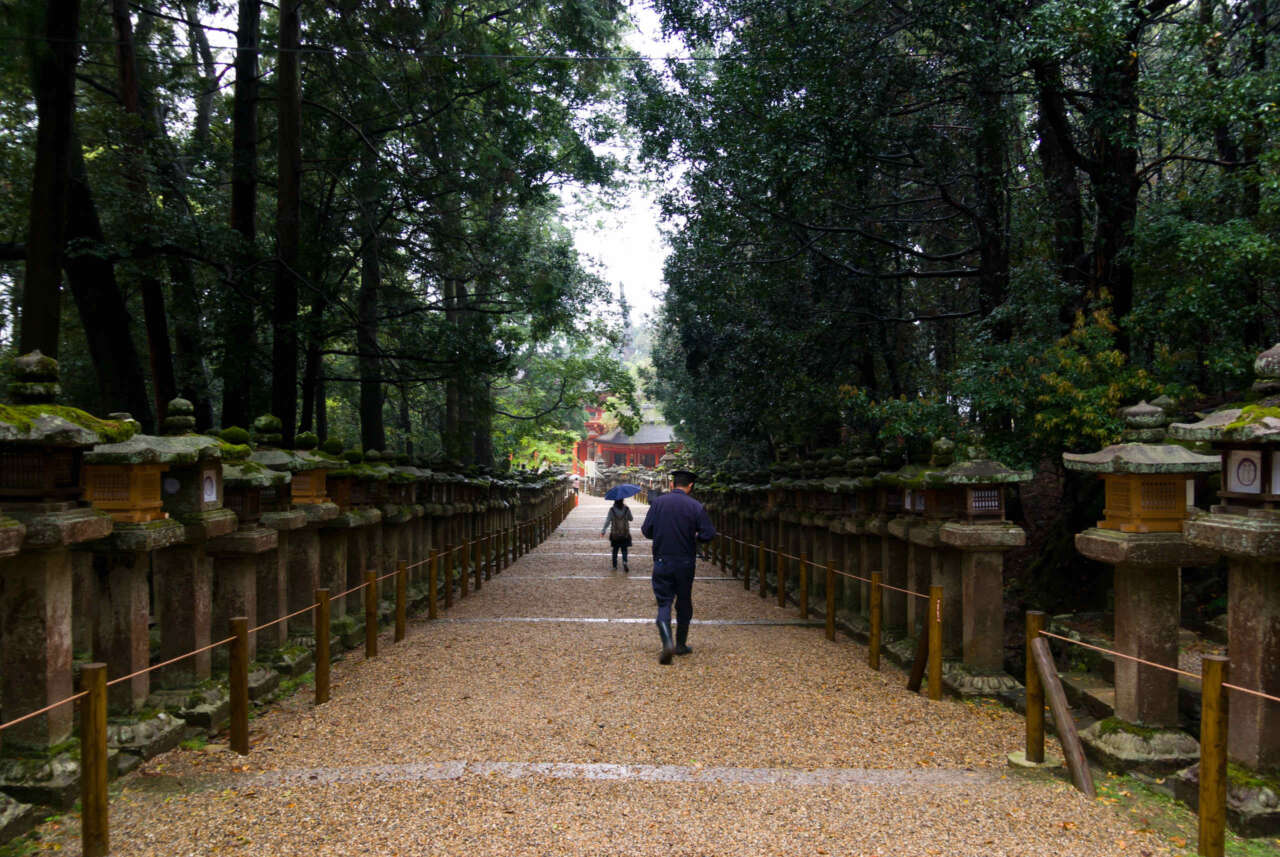
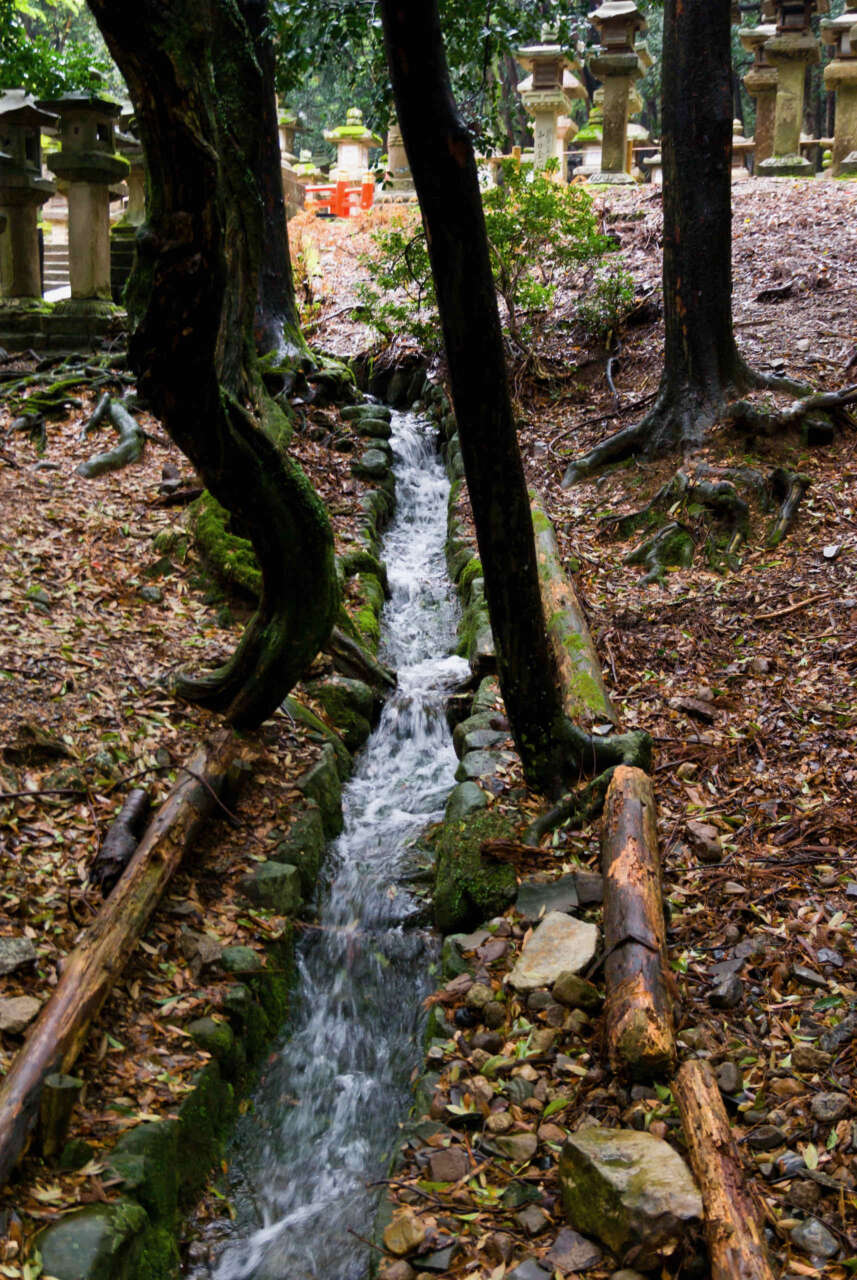
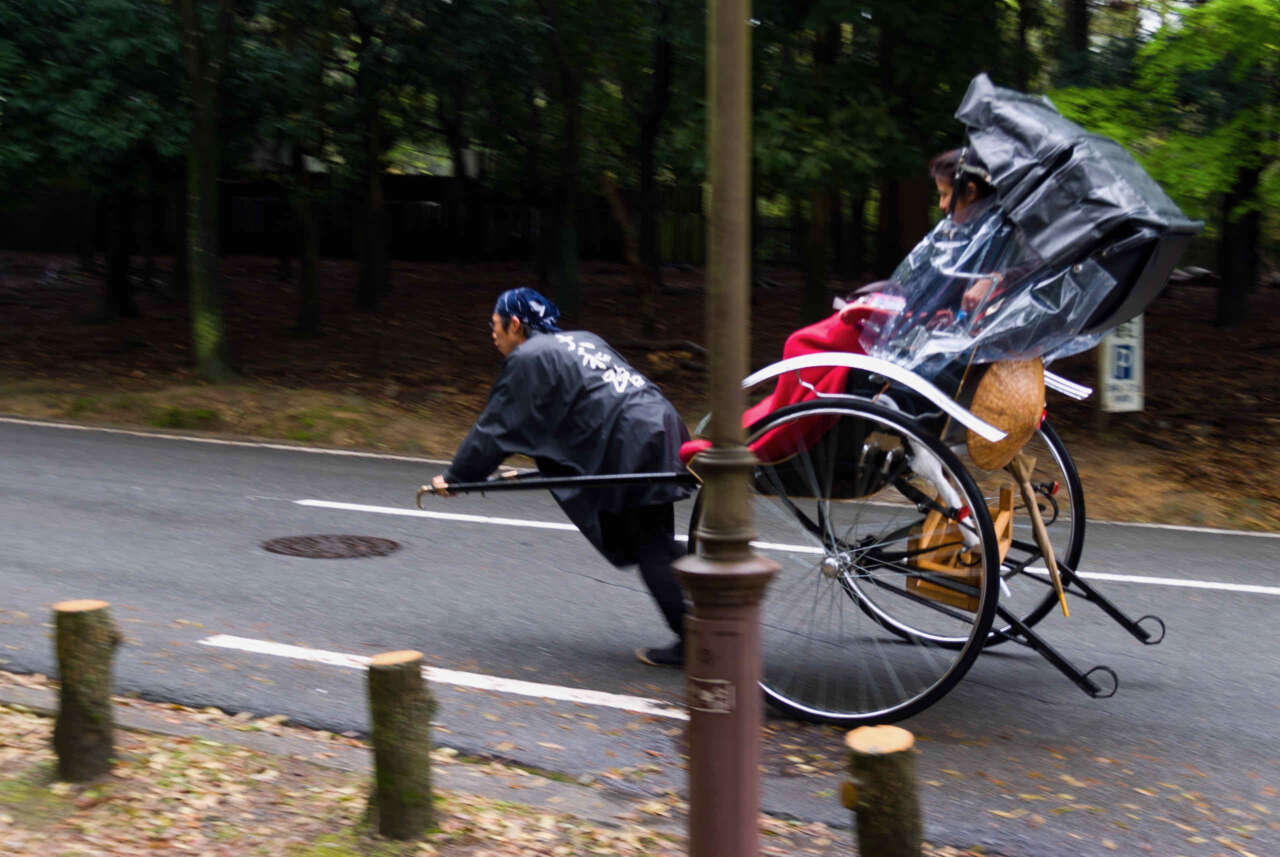
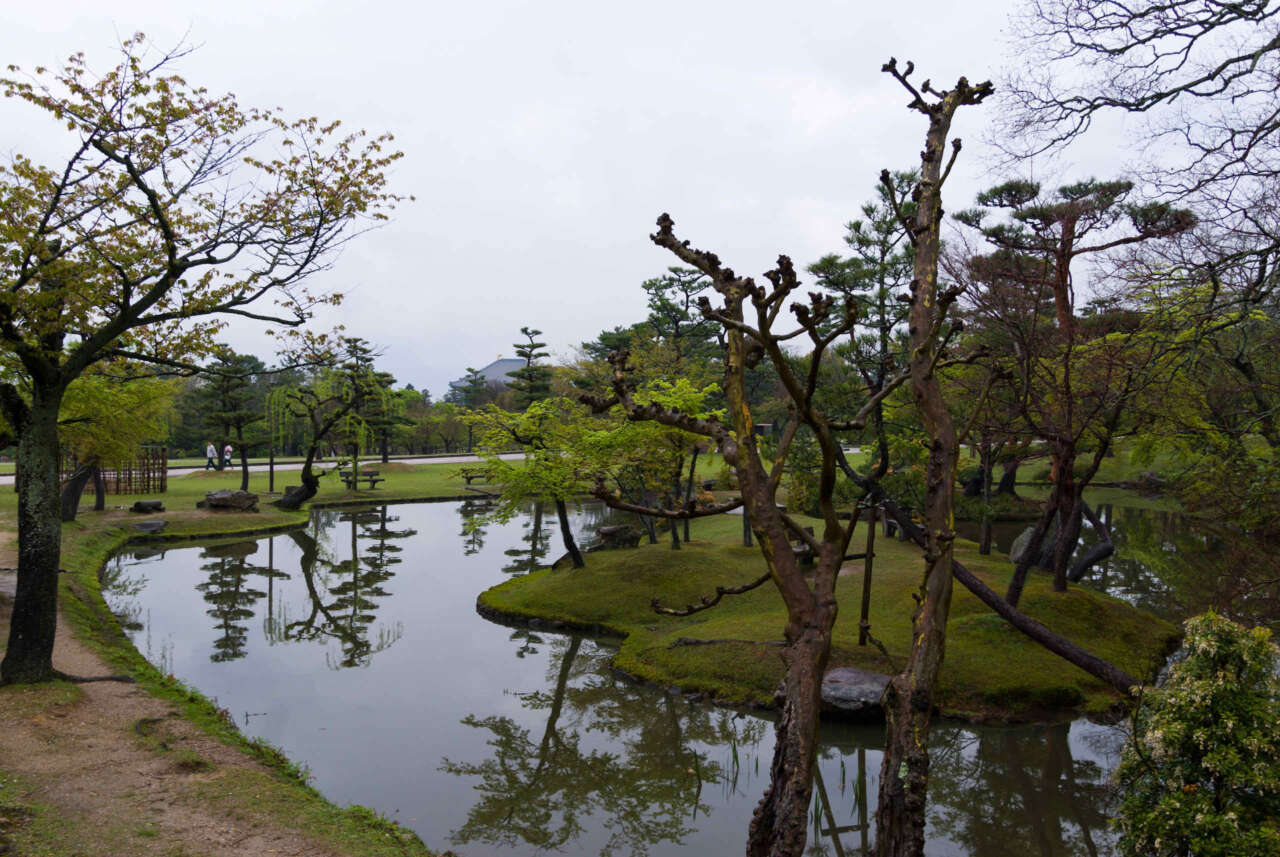
Full set of photos:























































